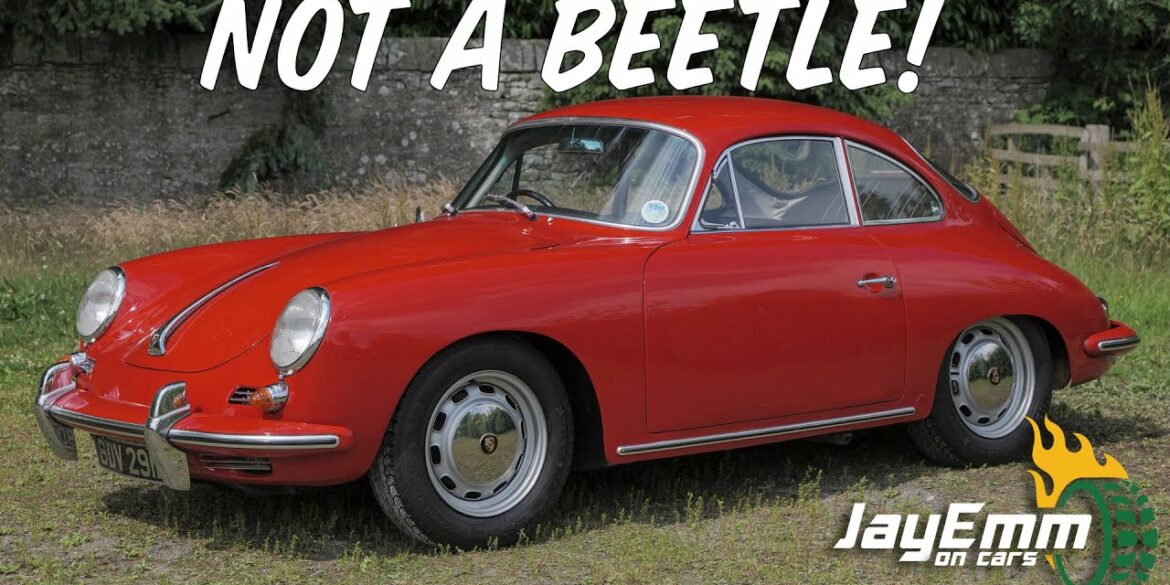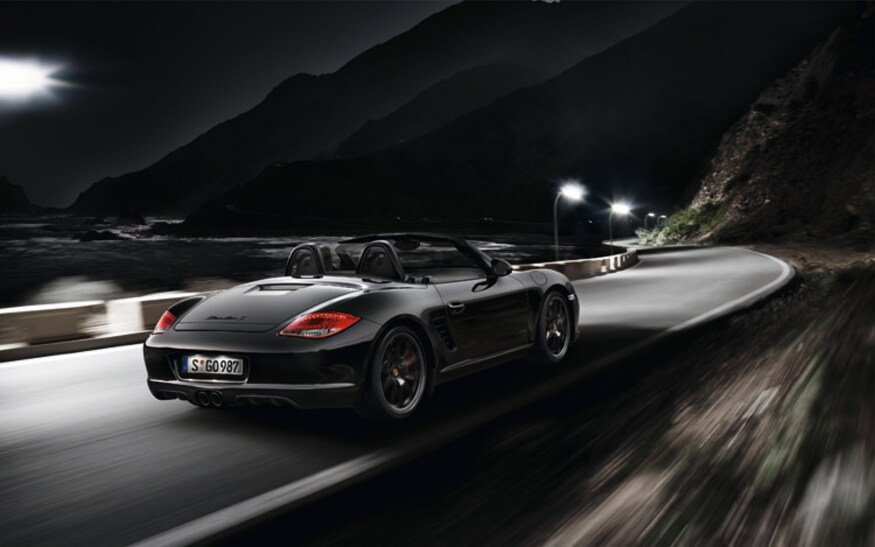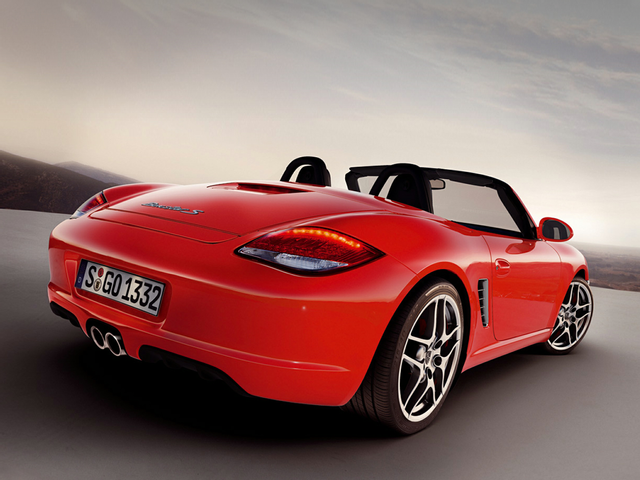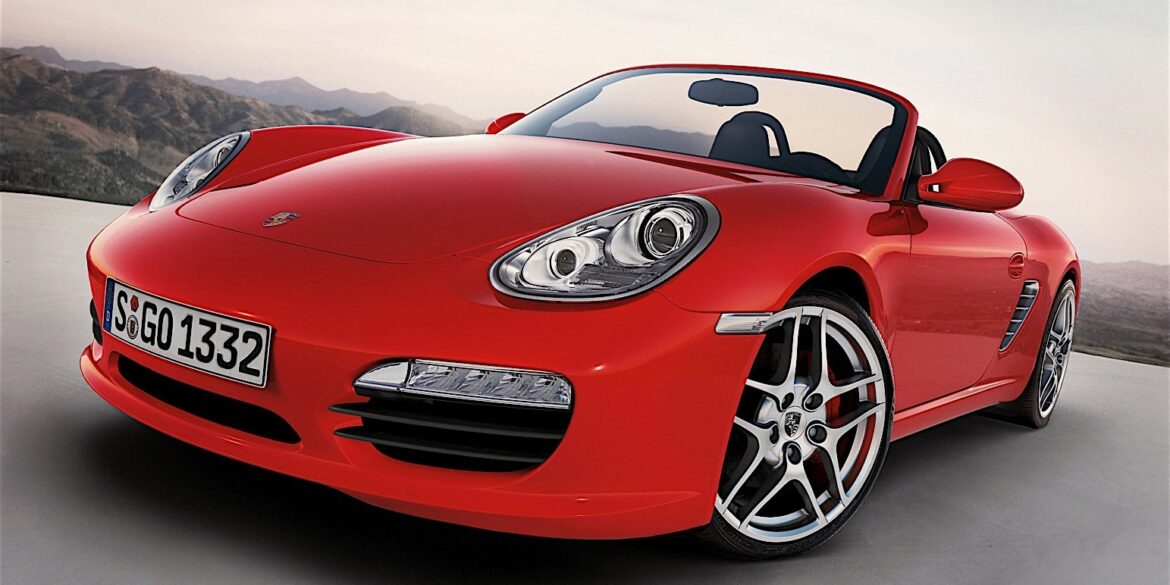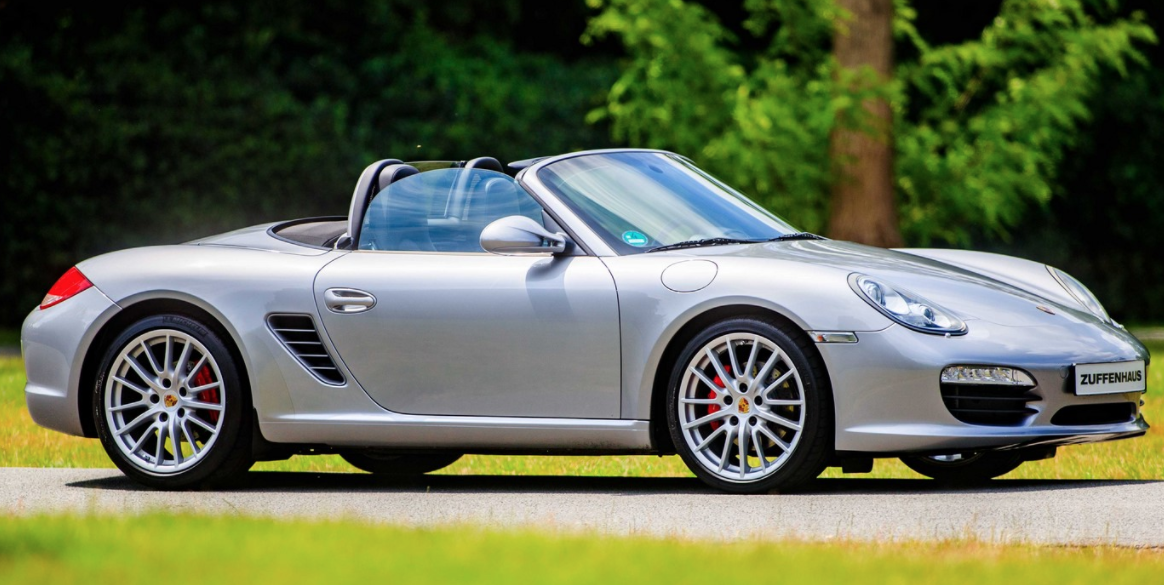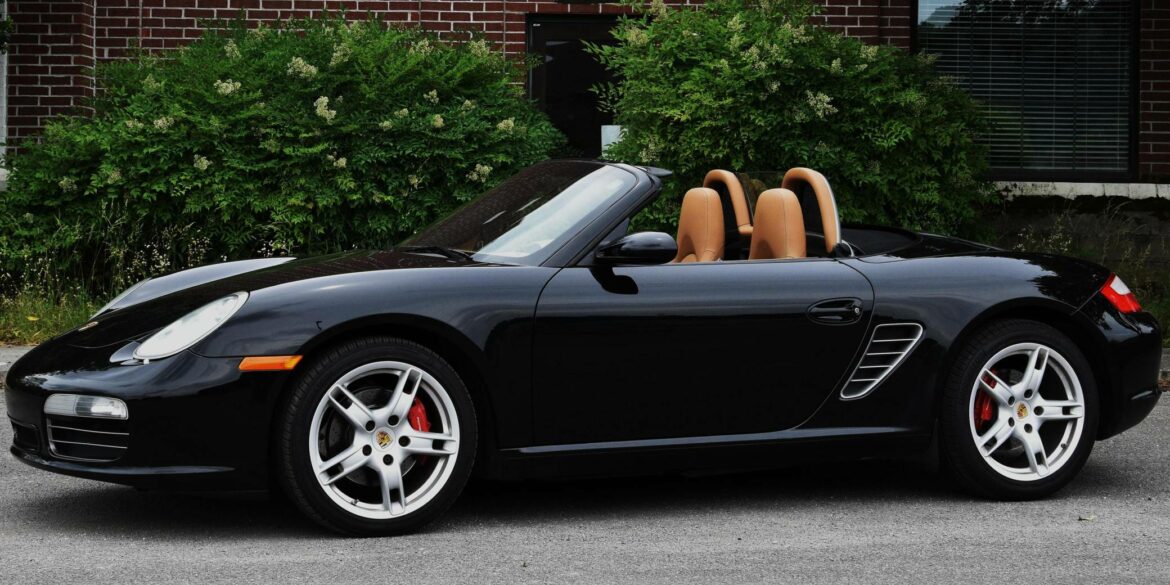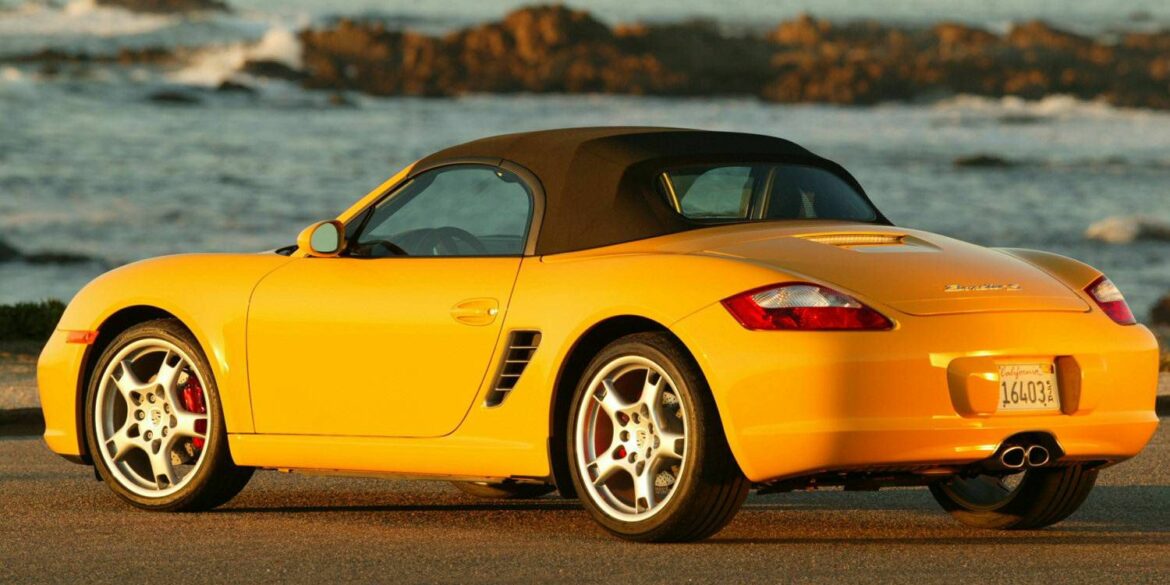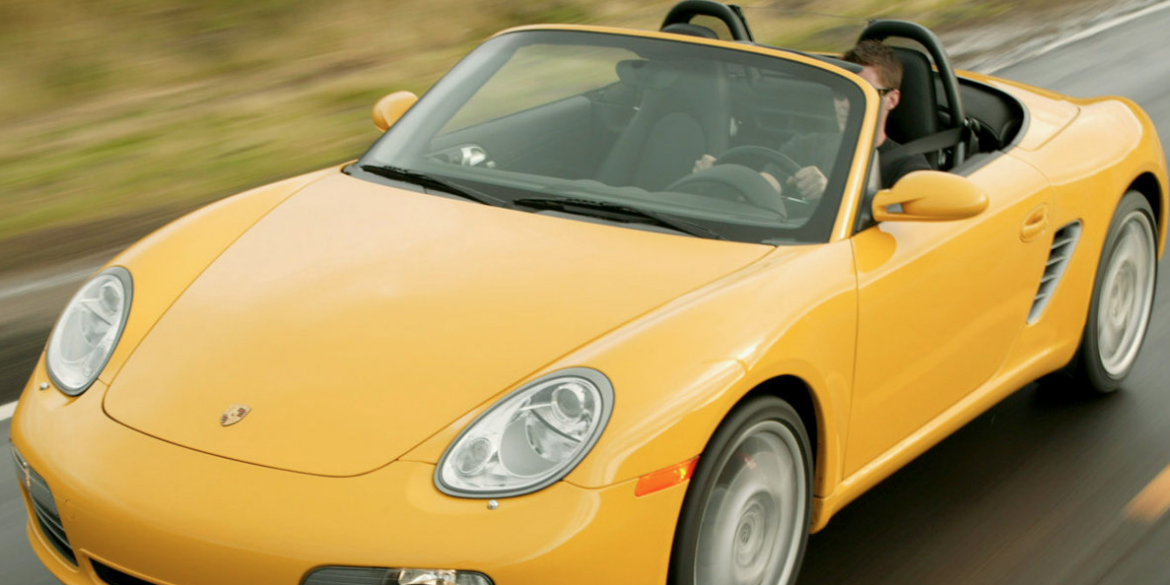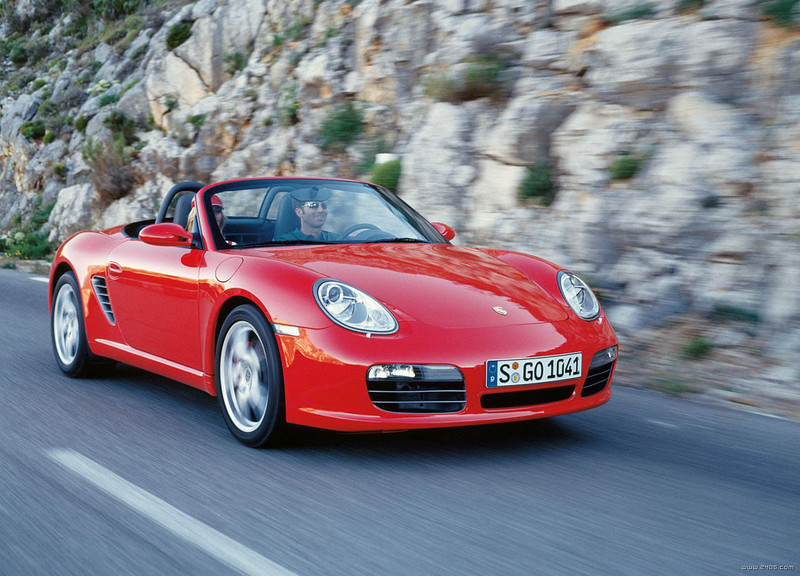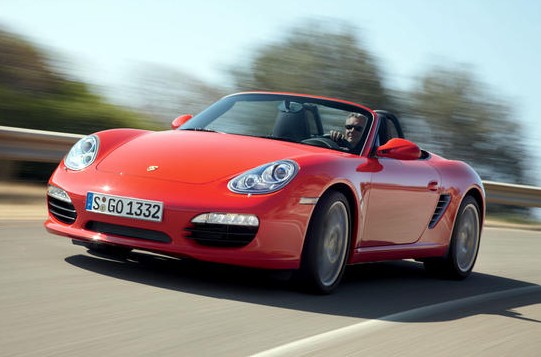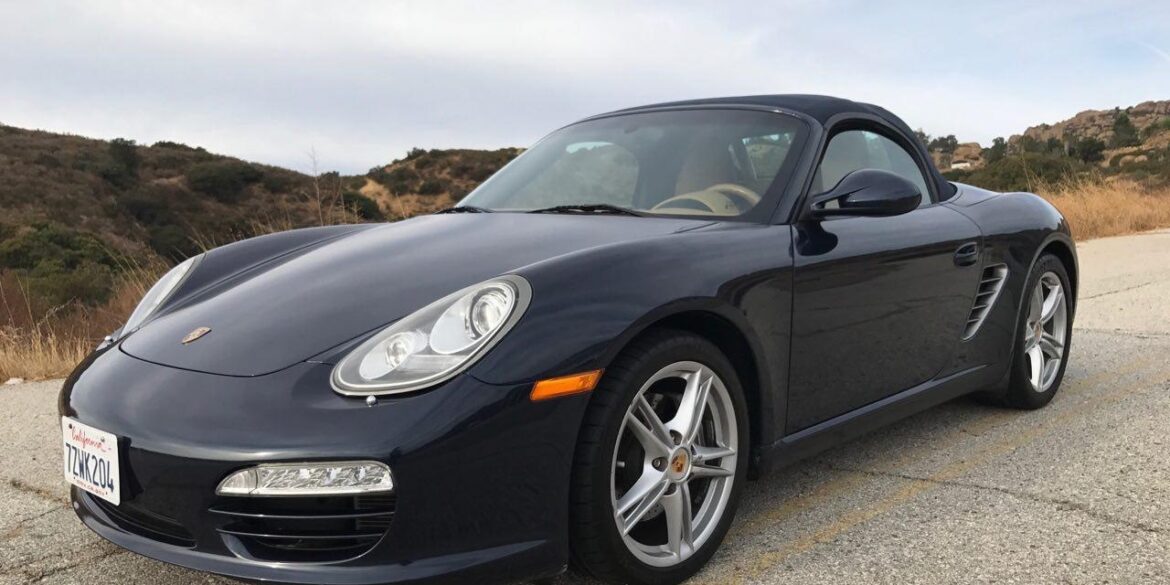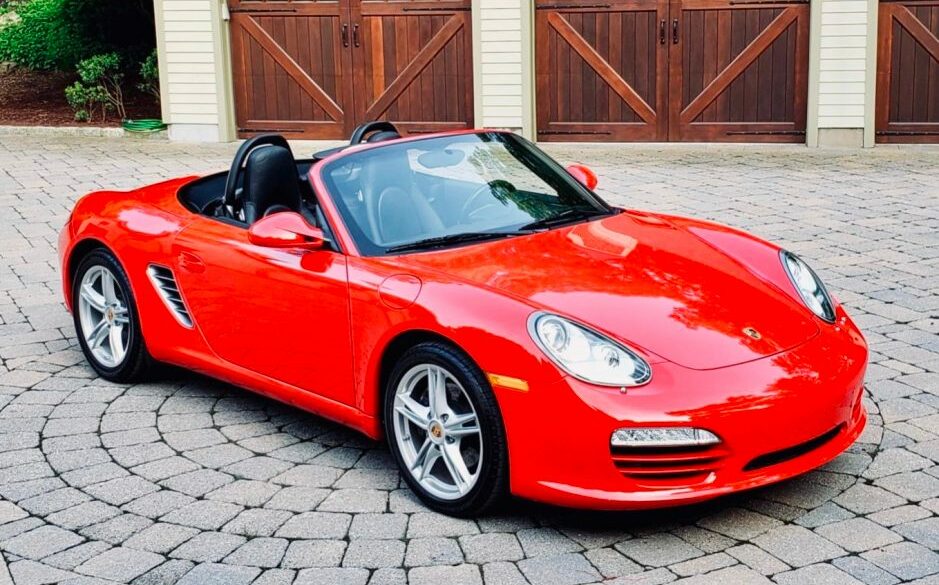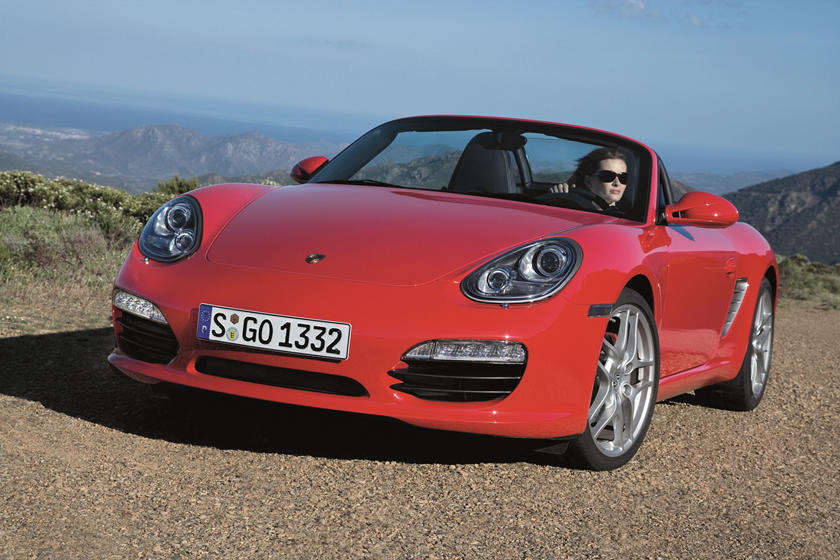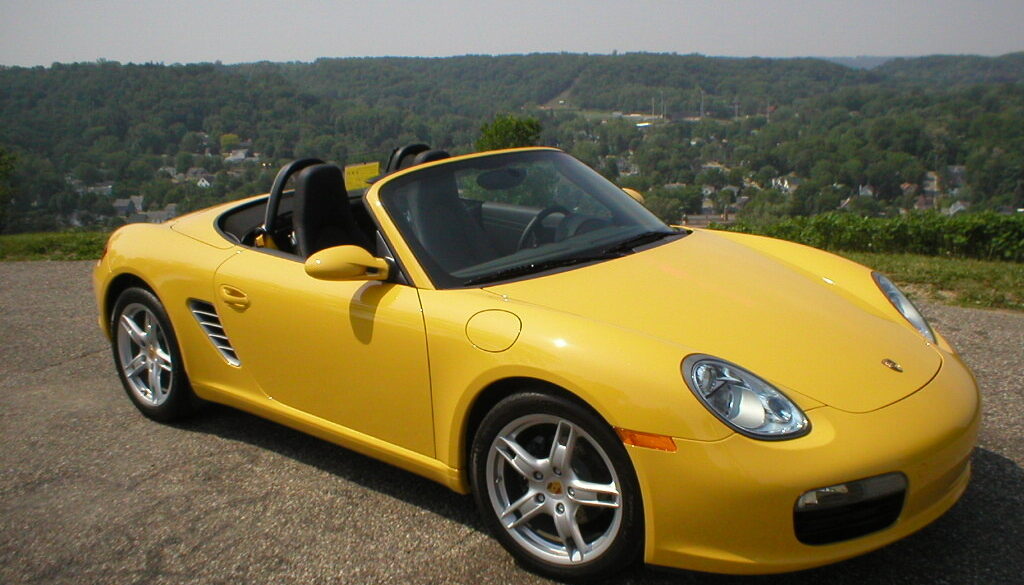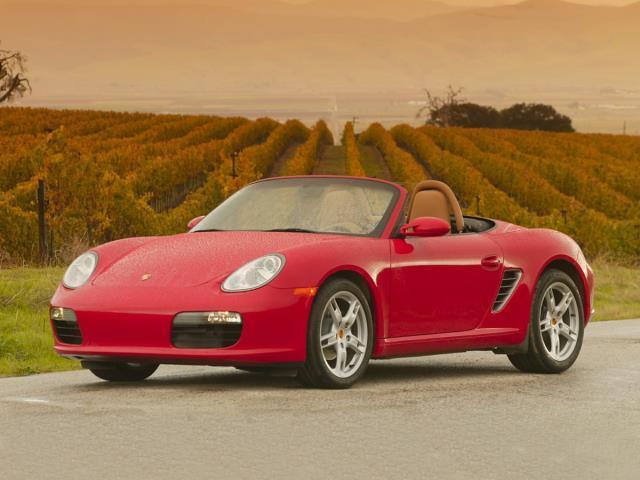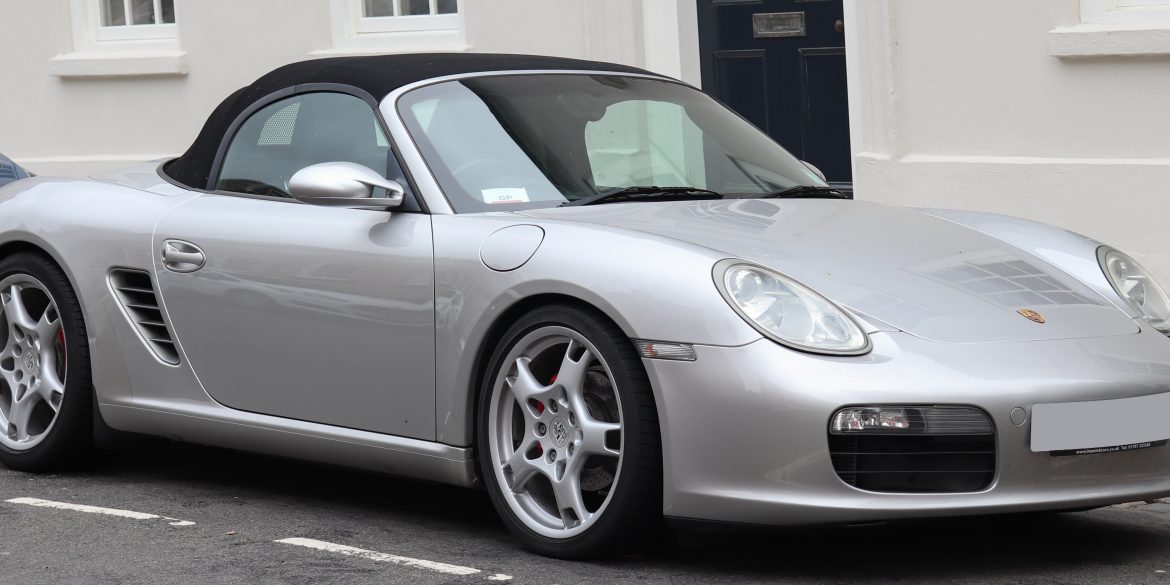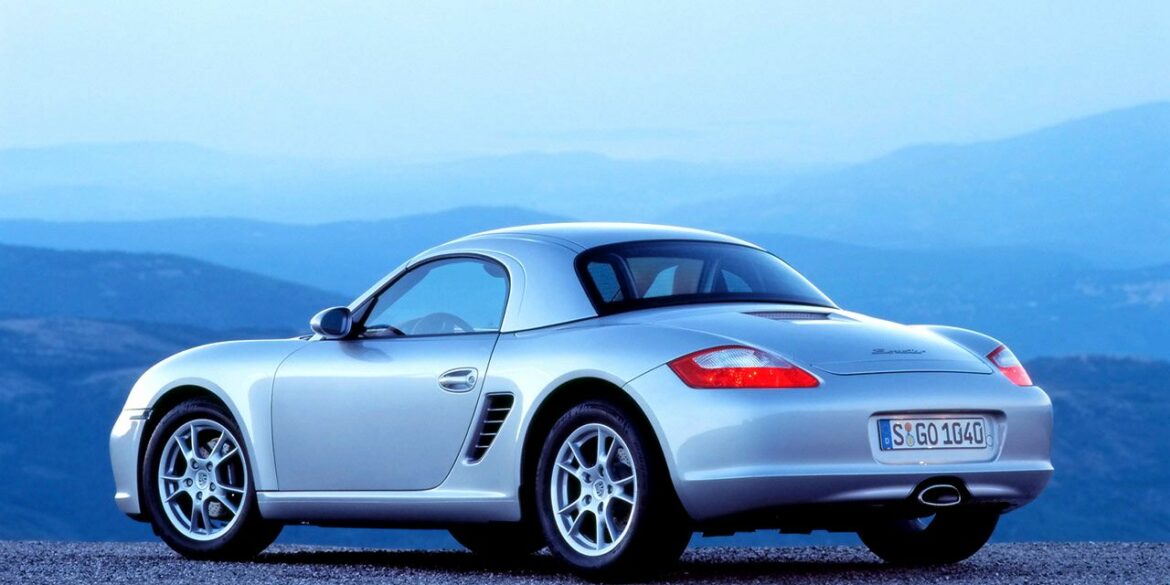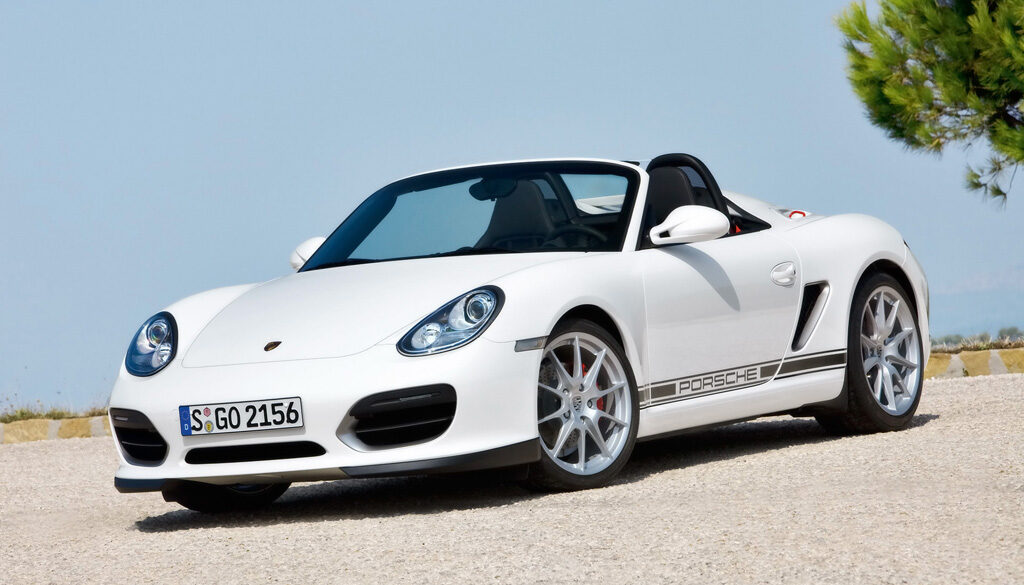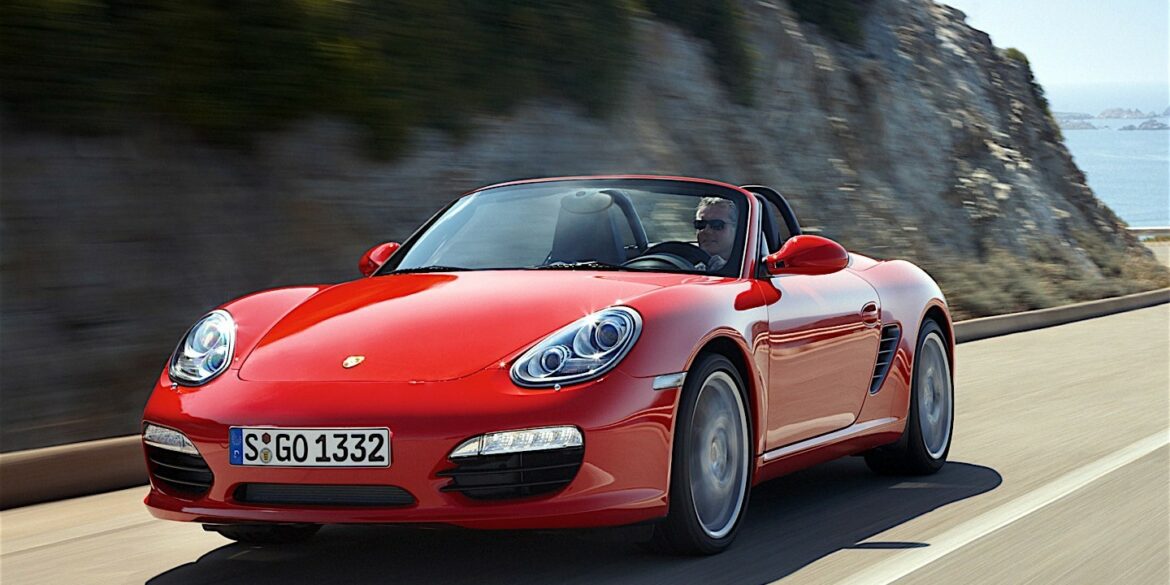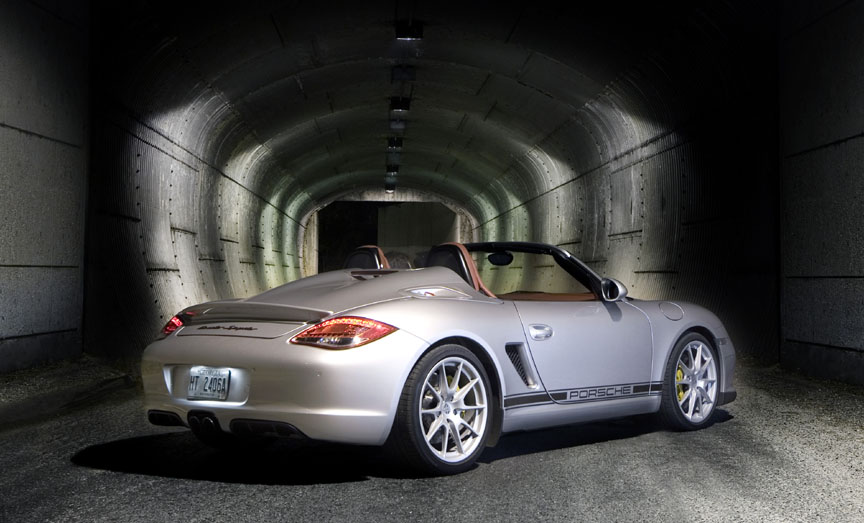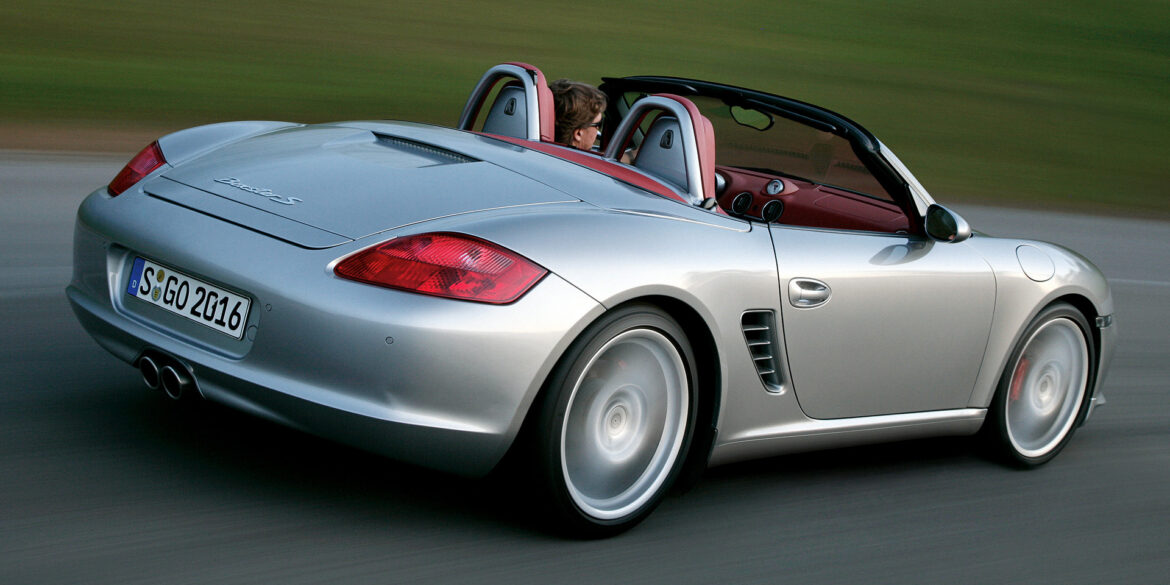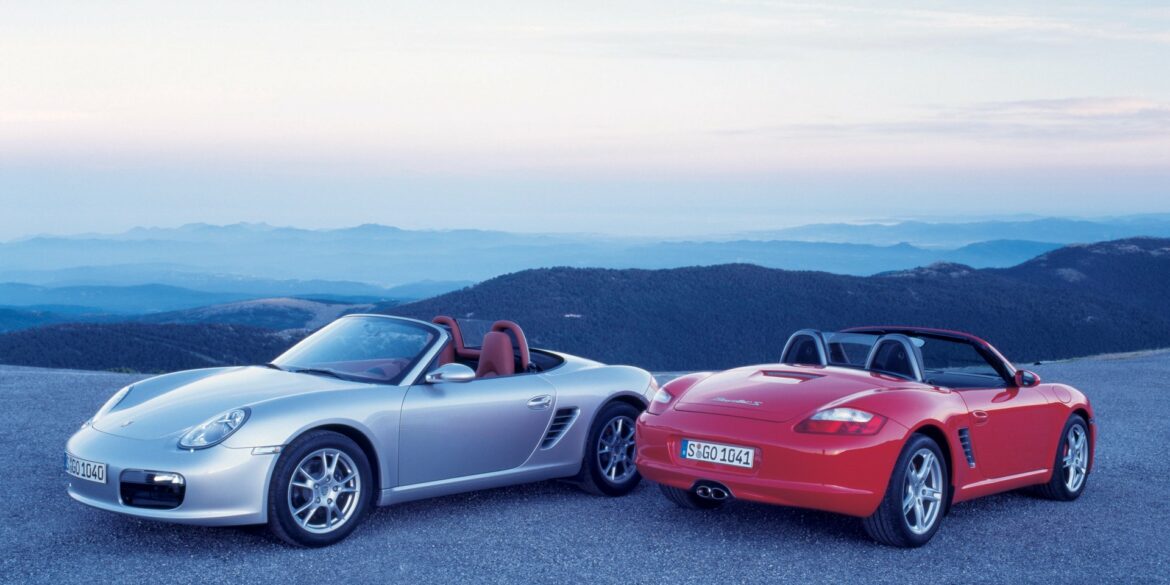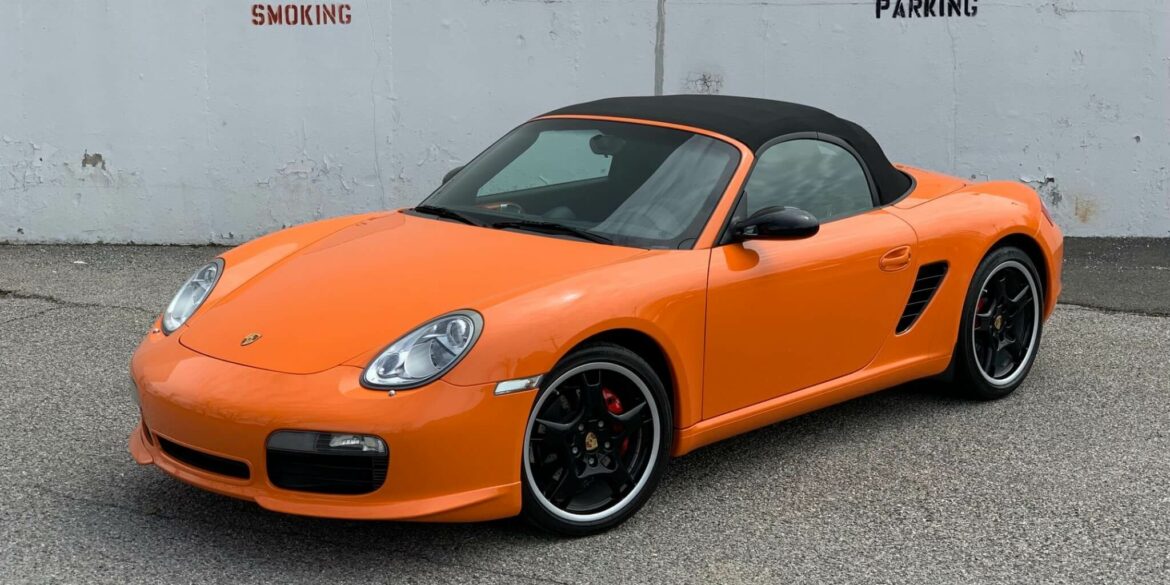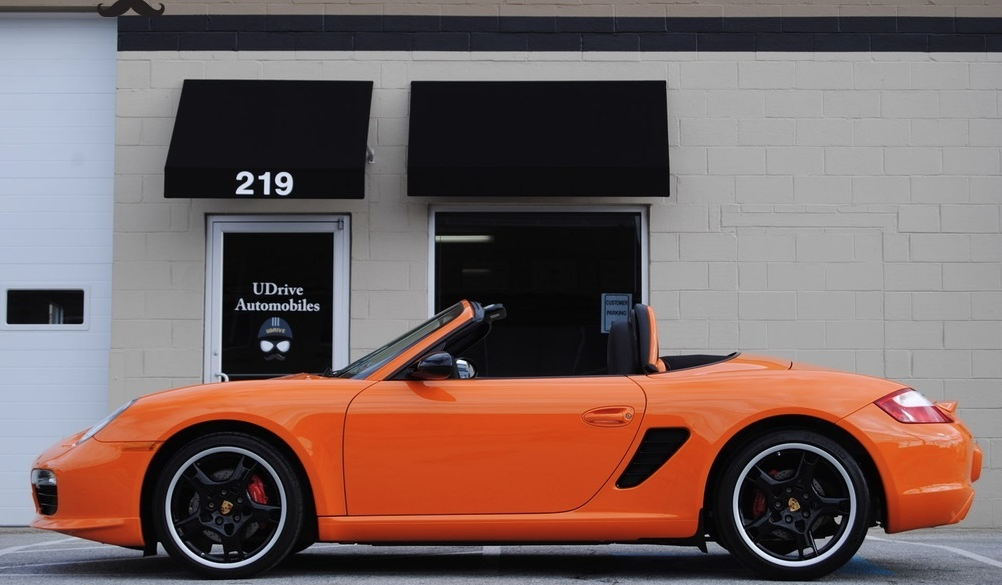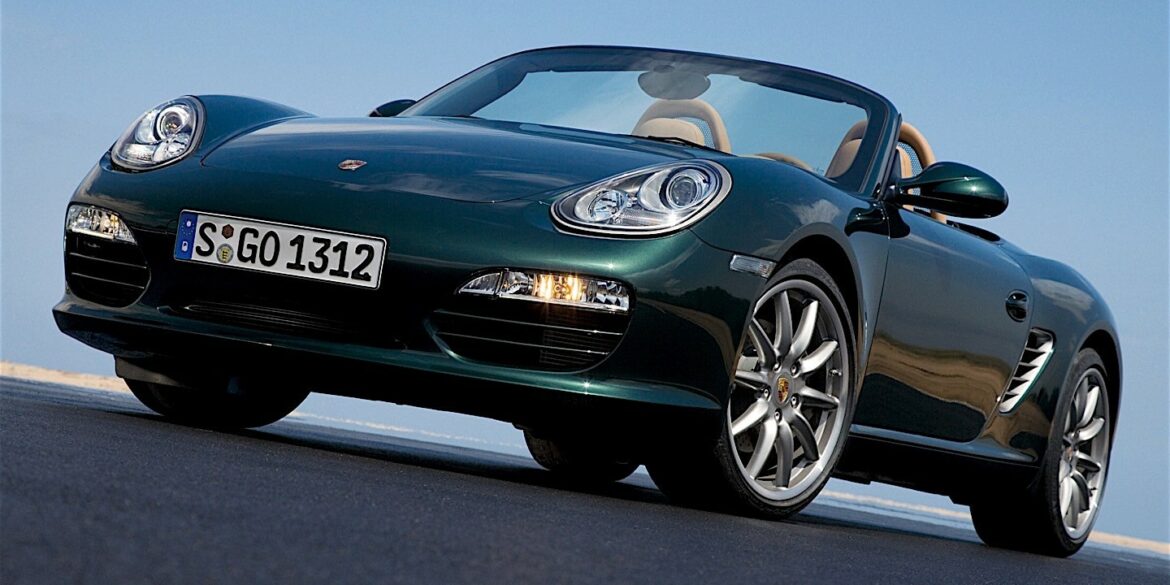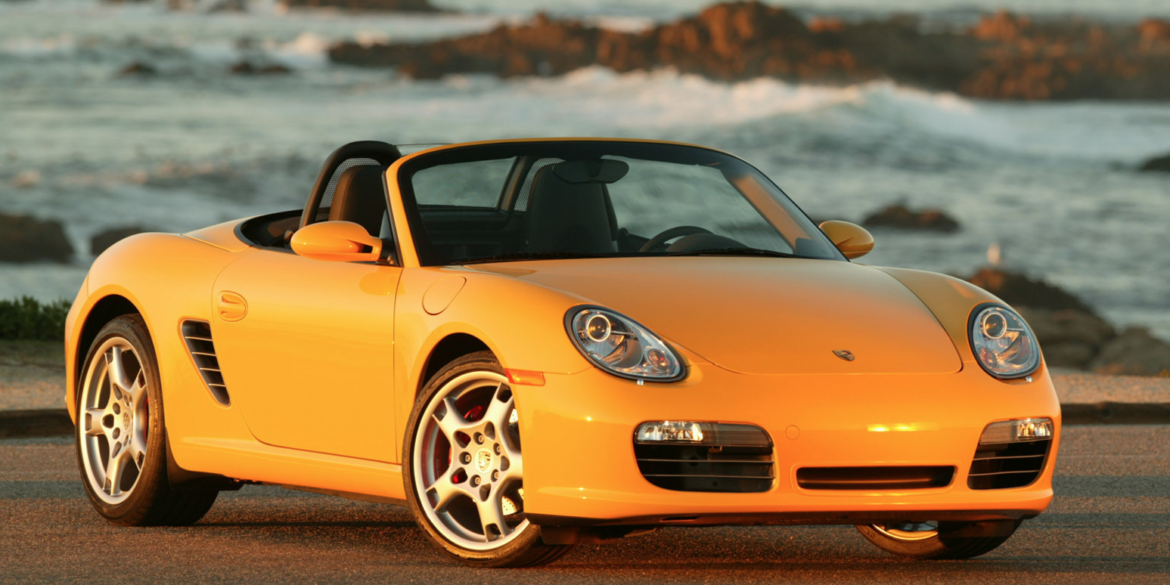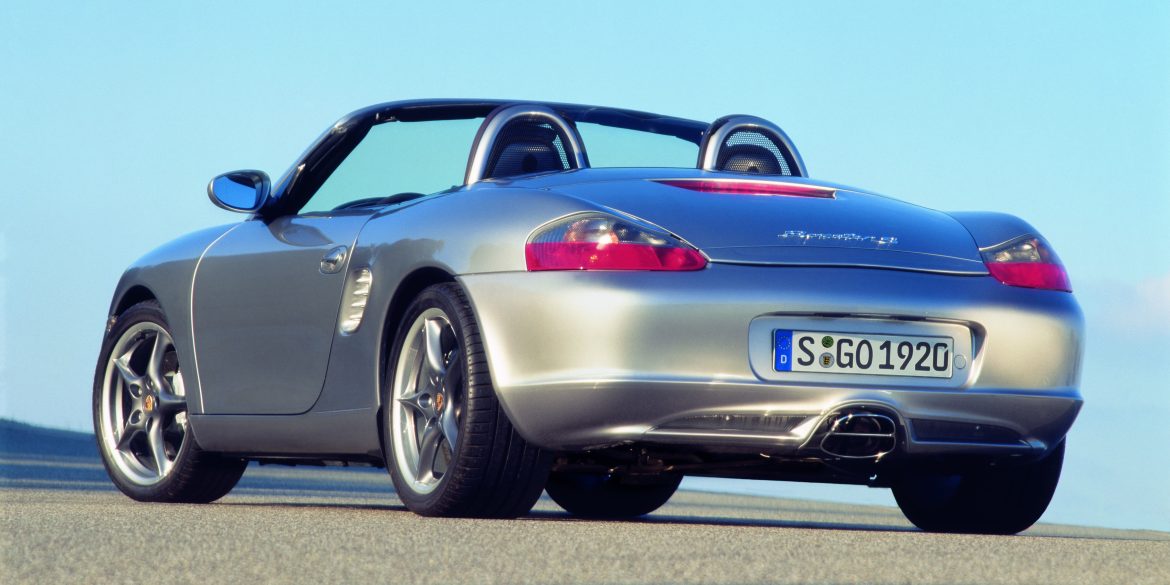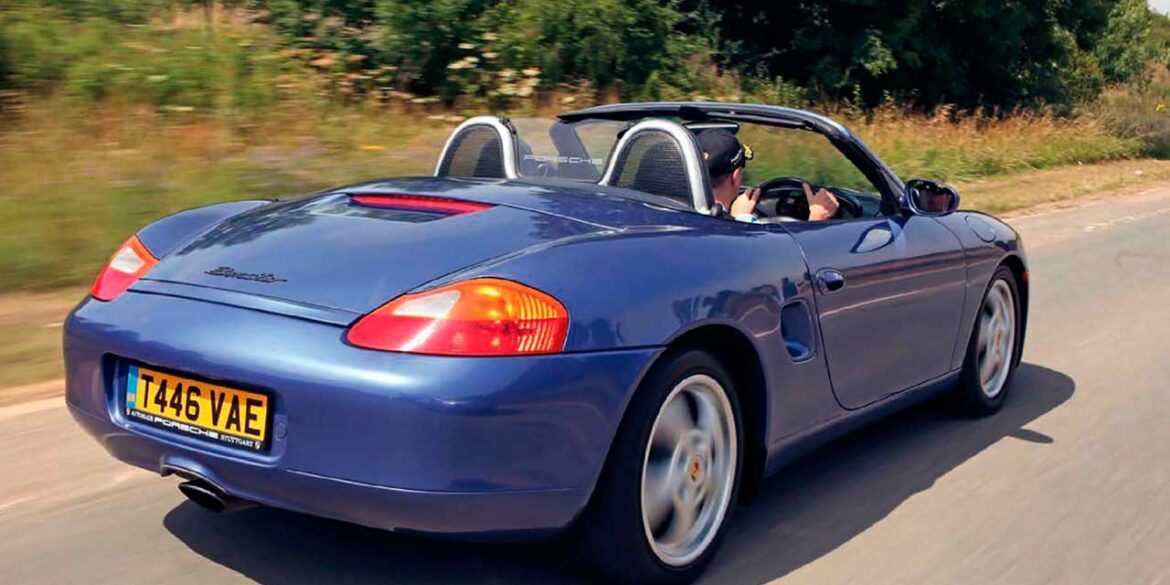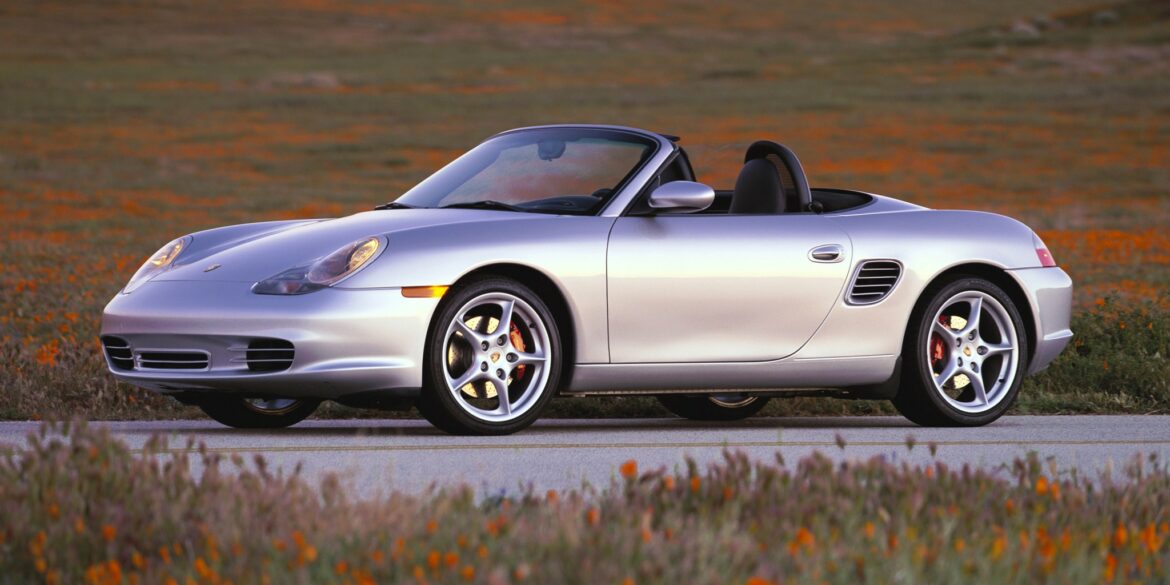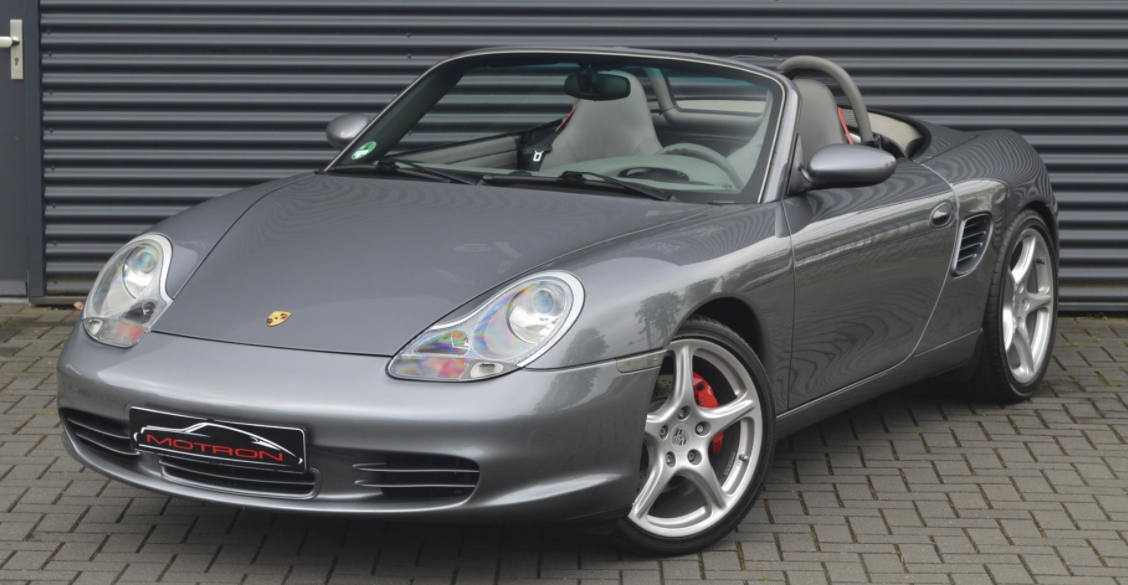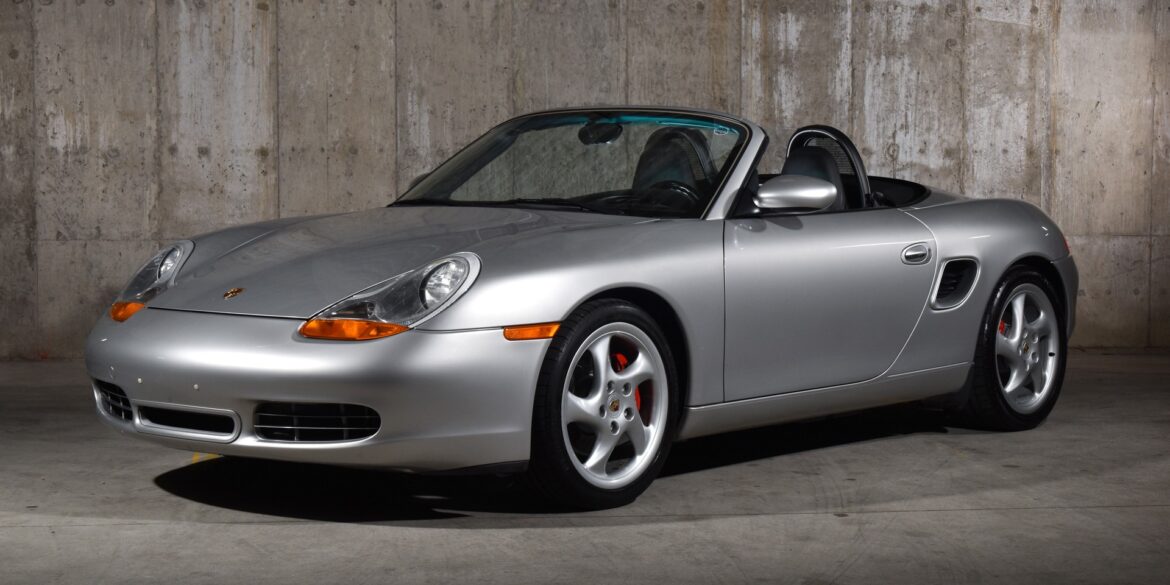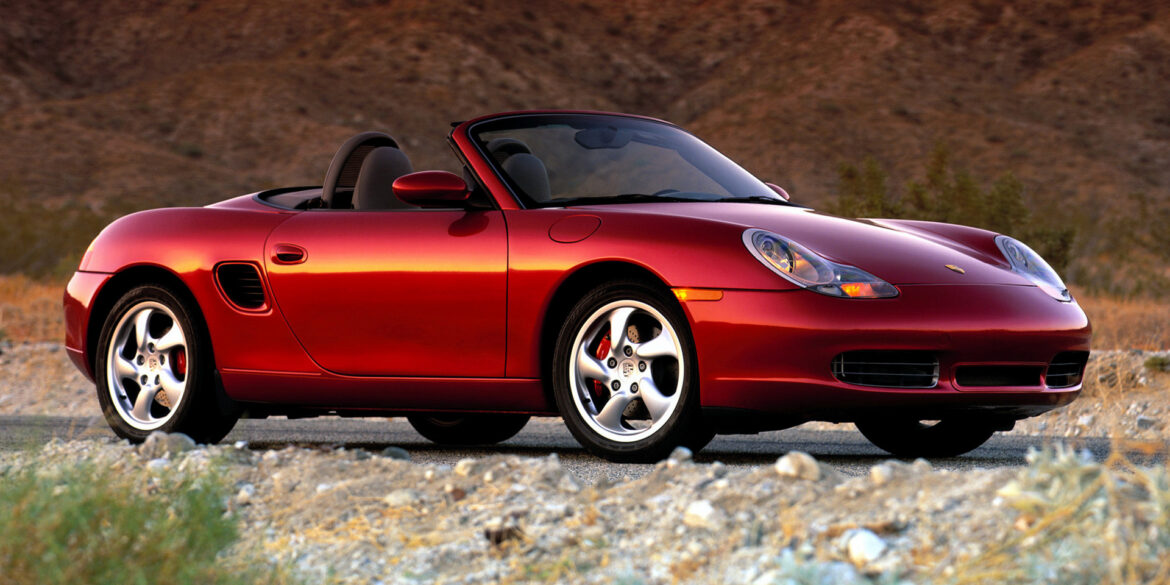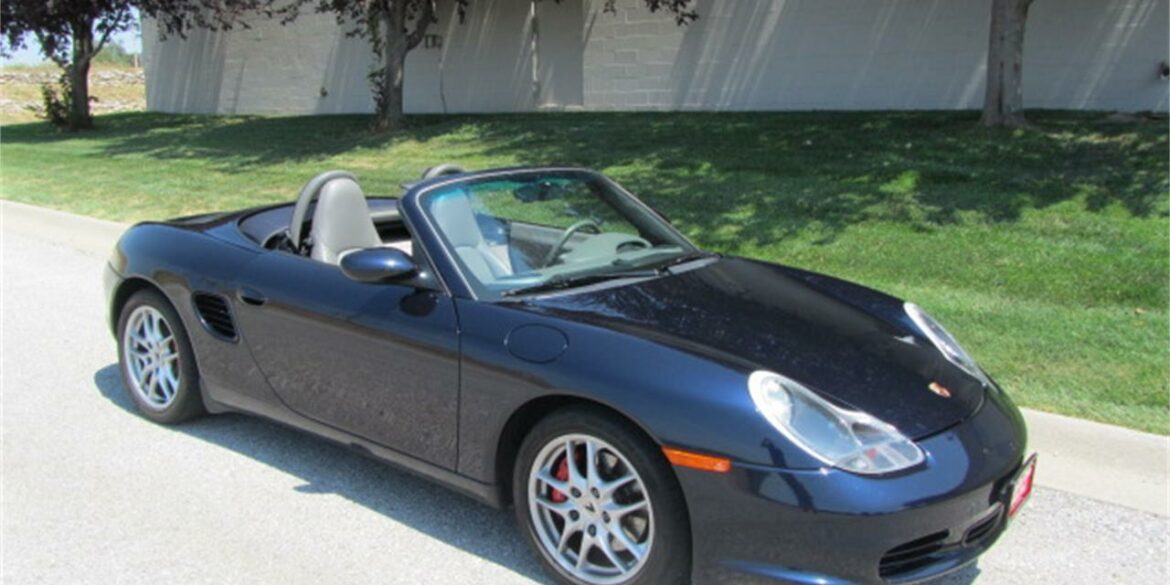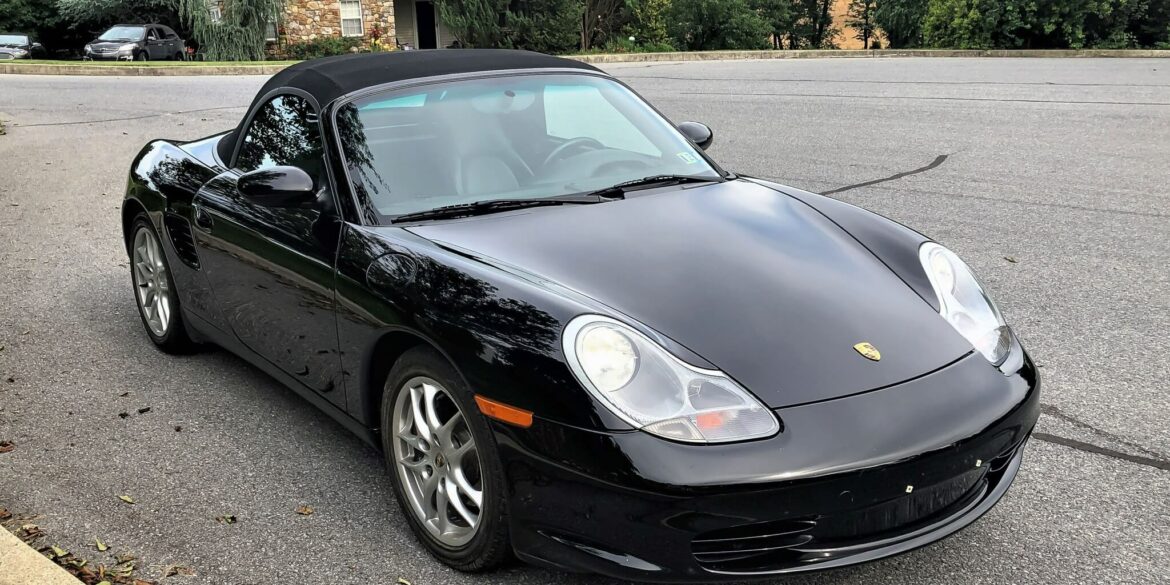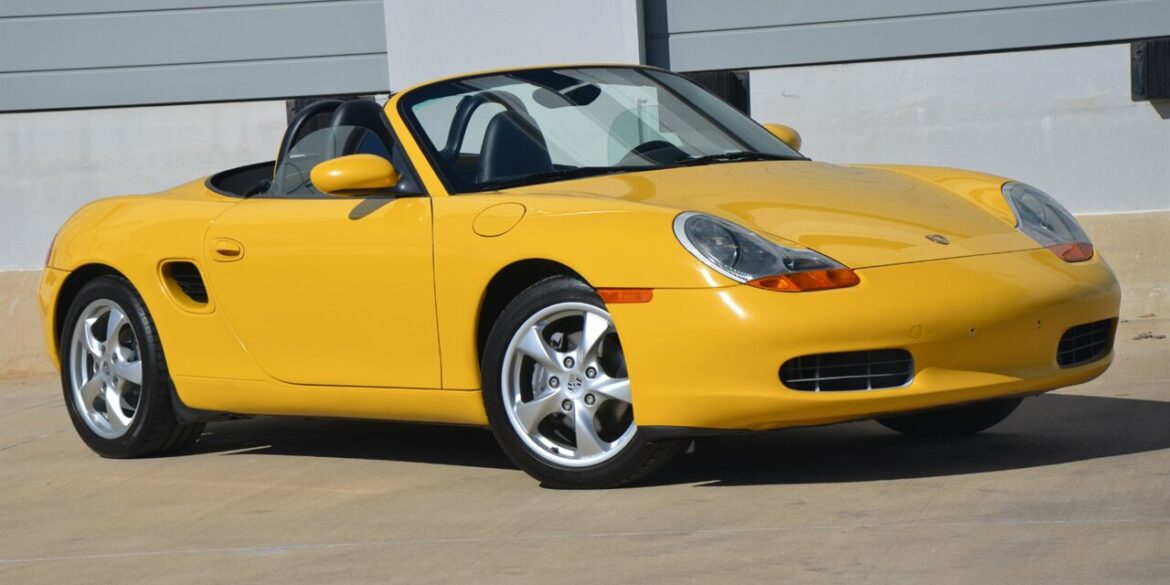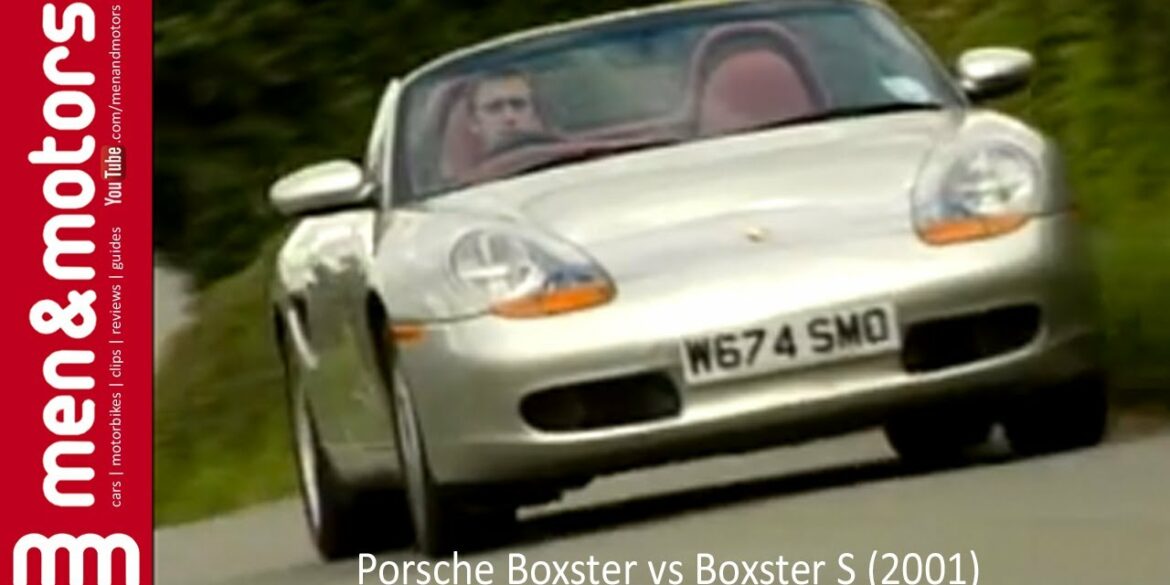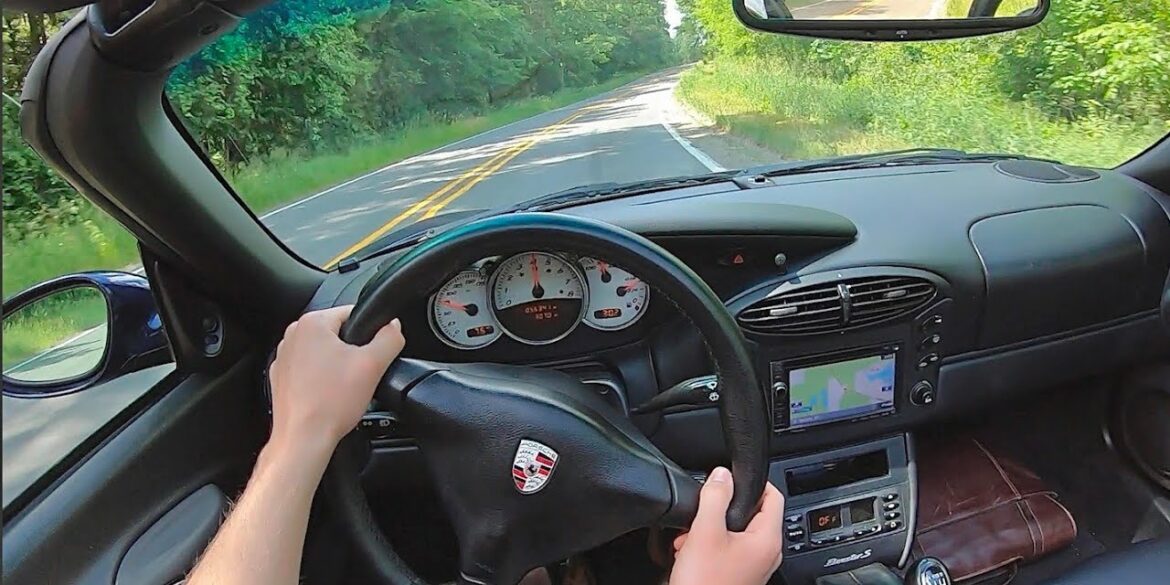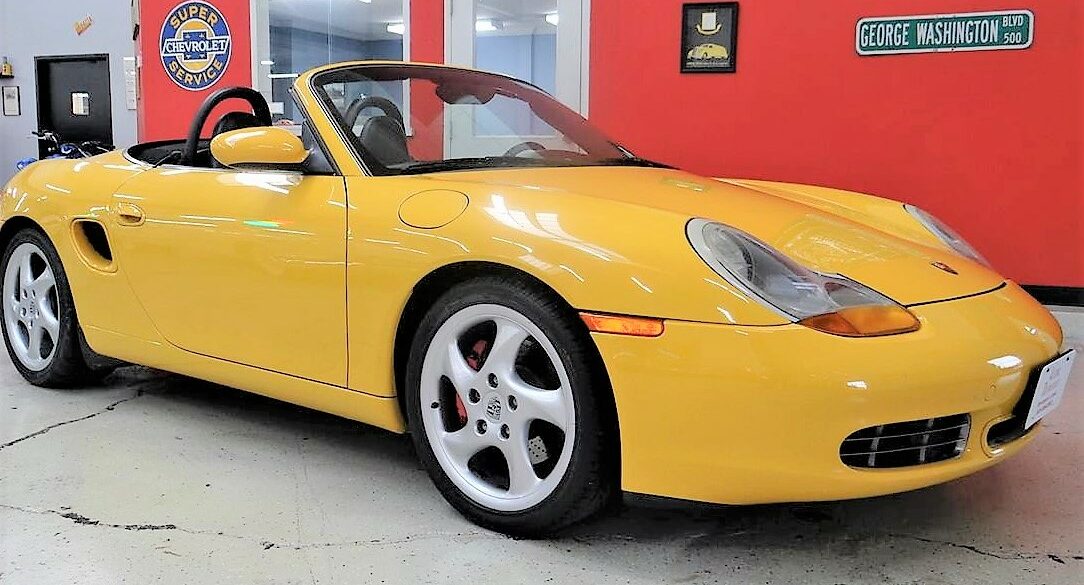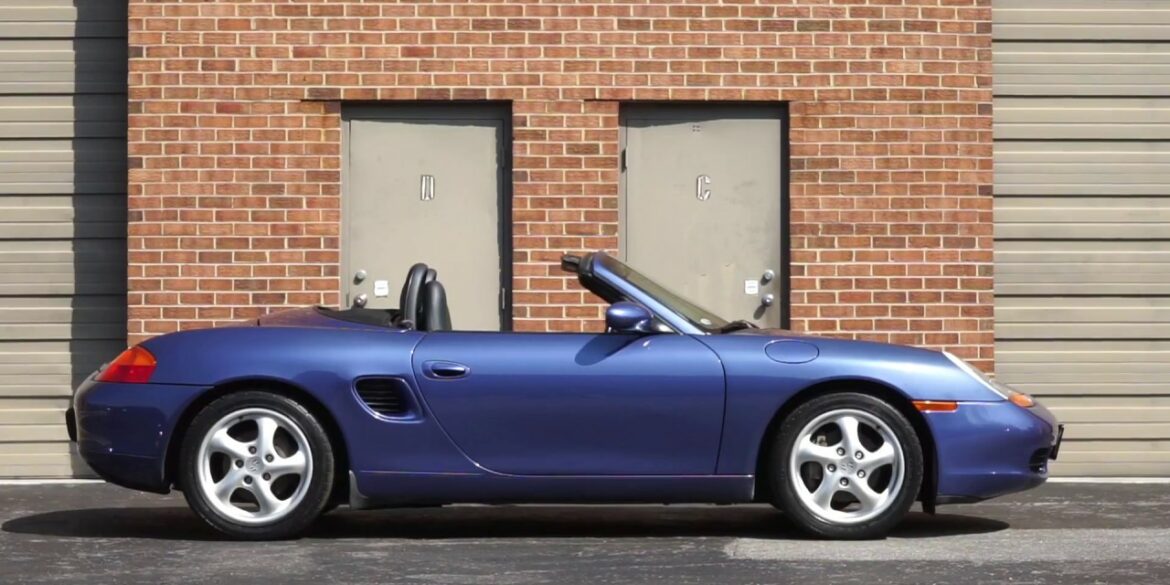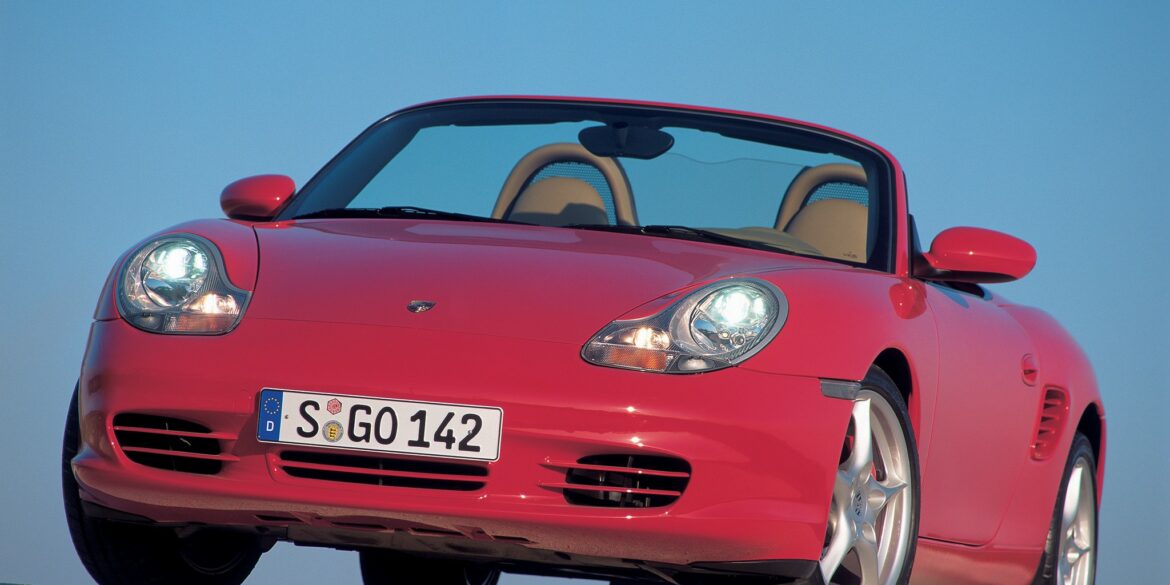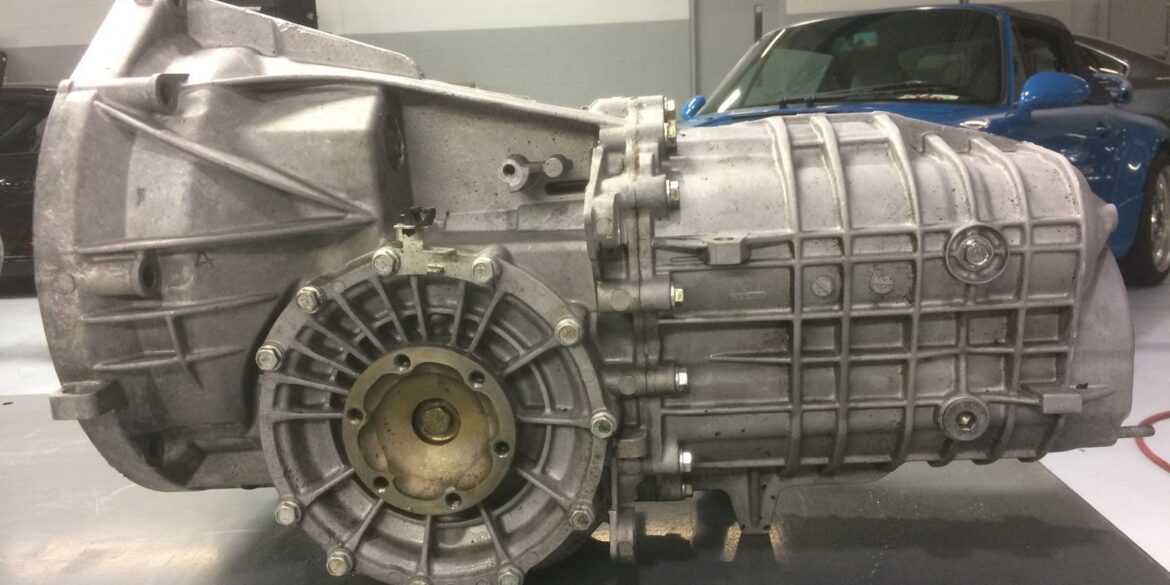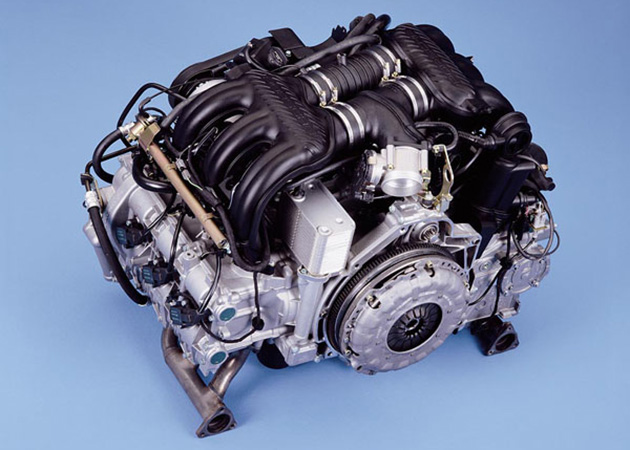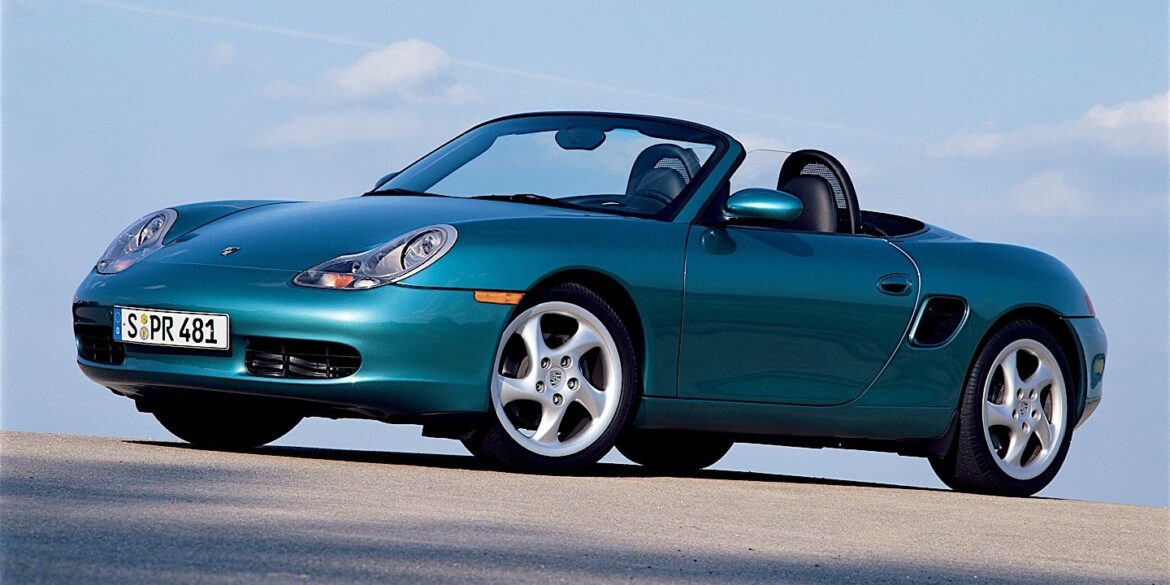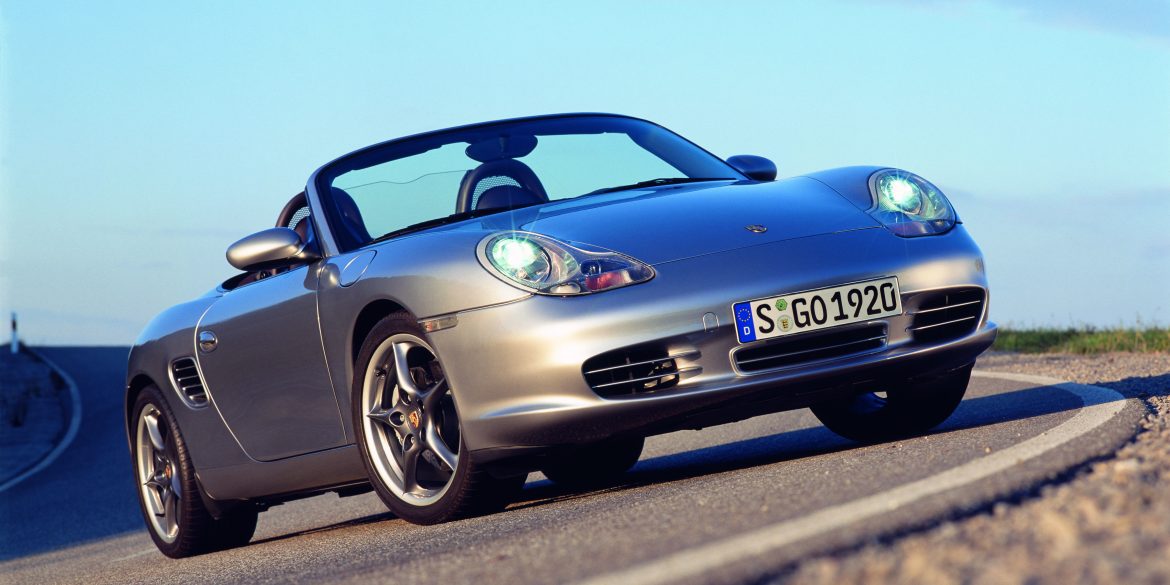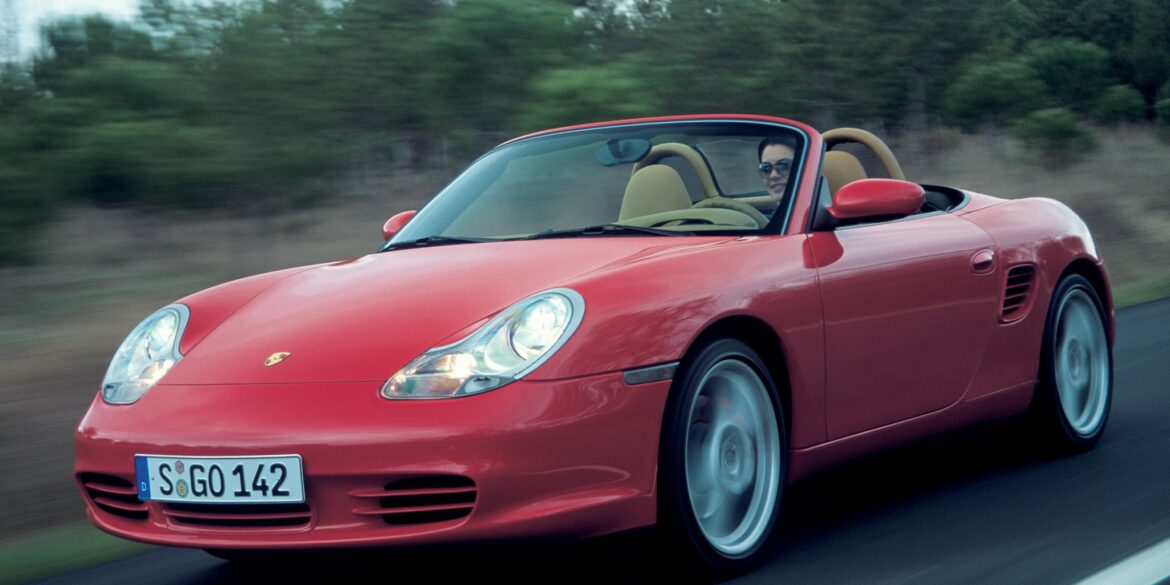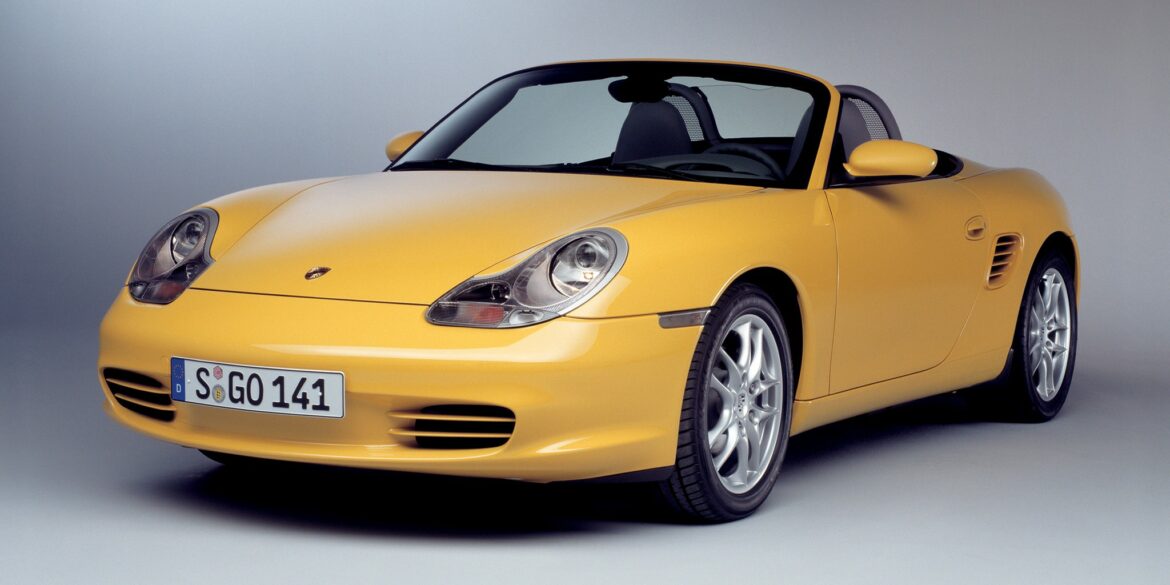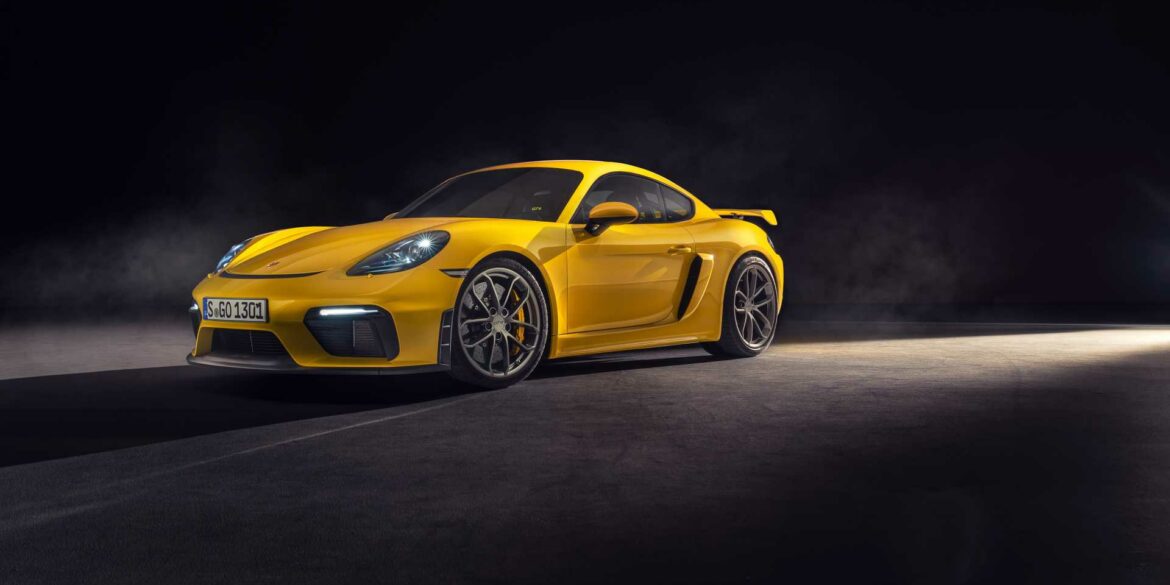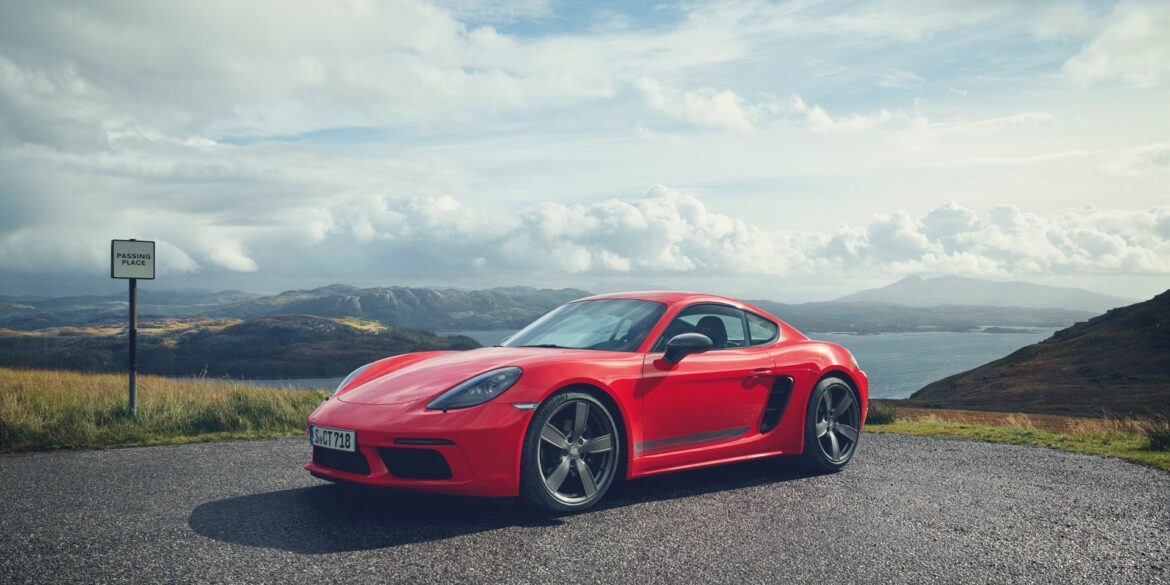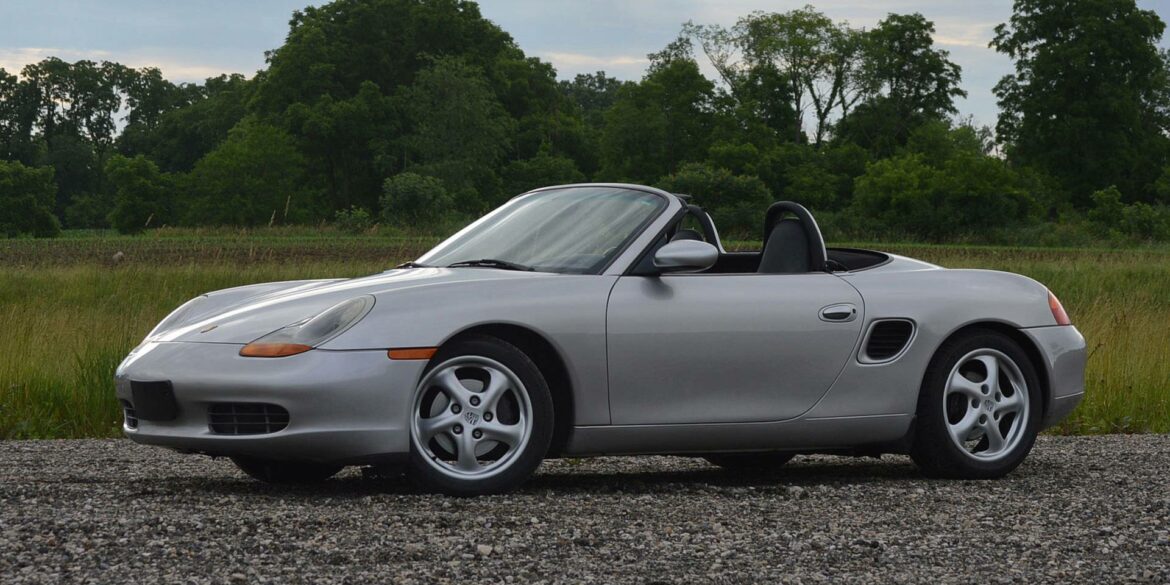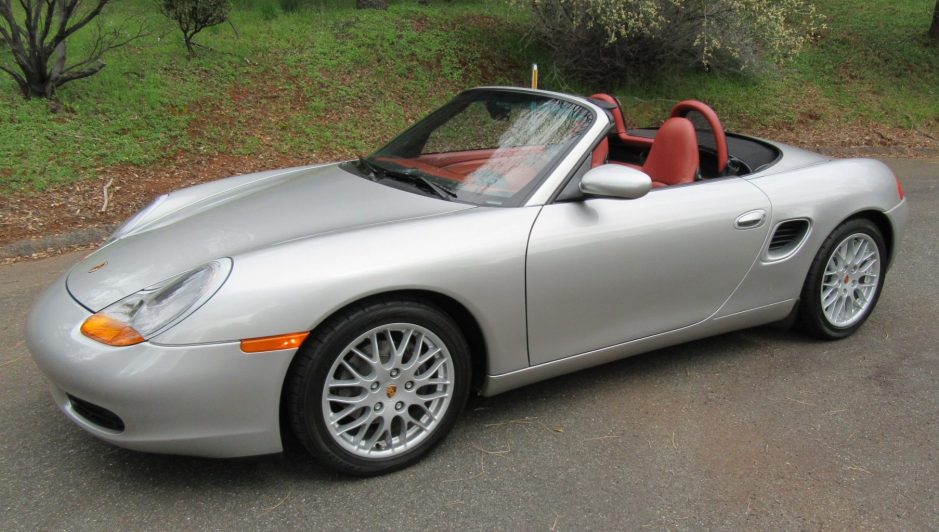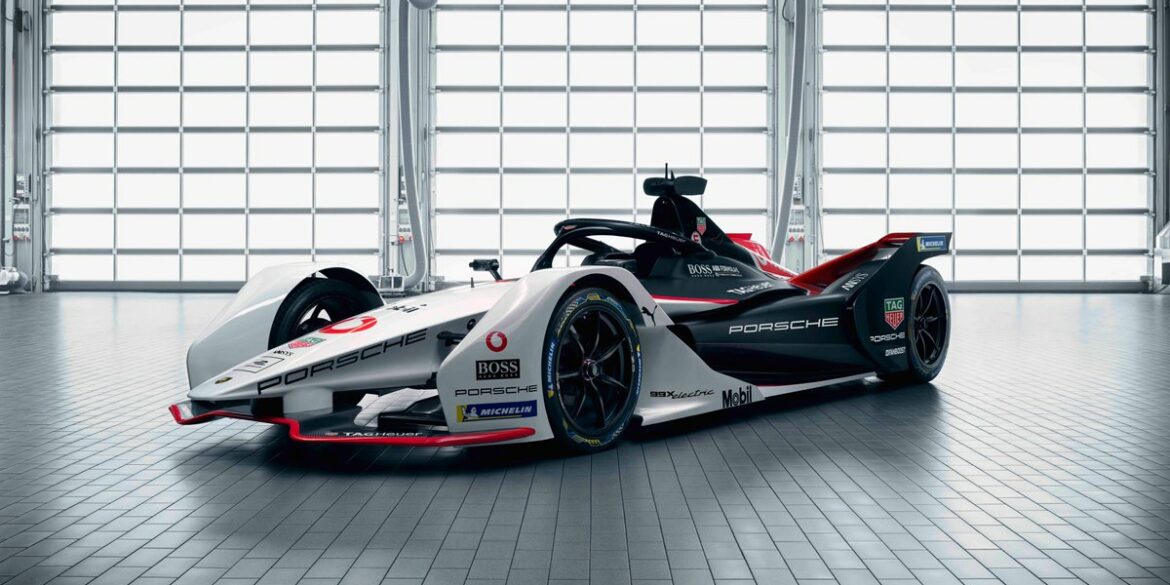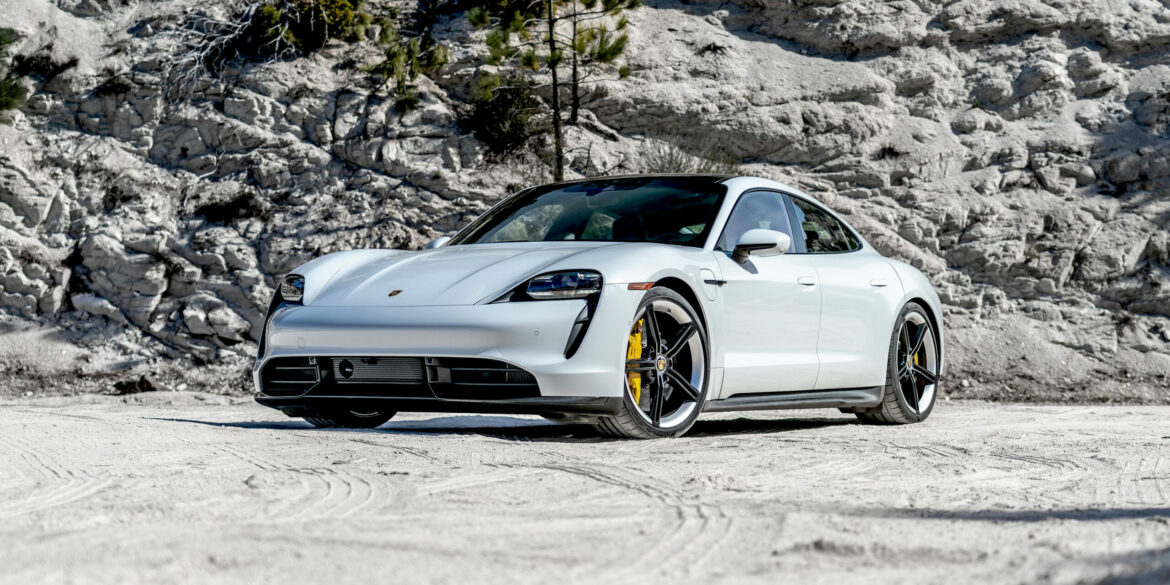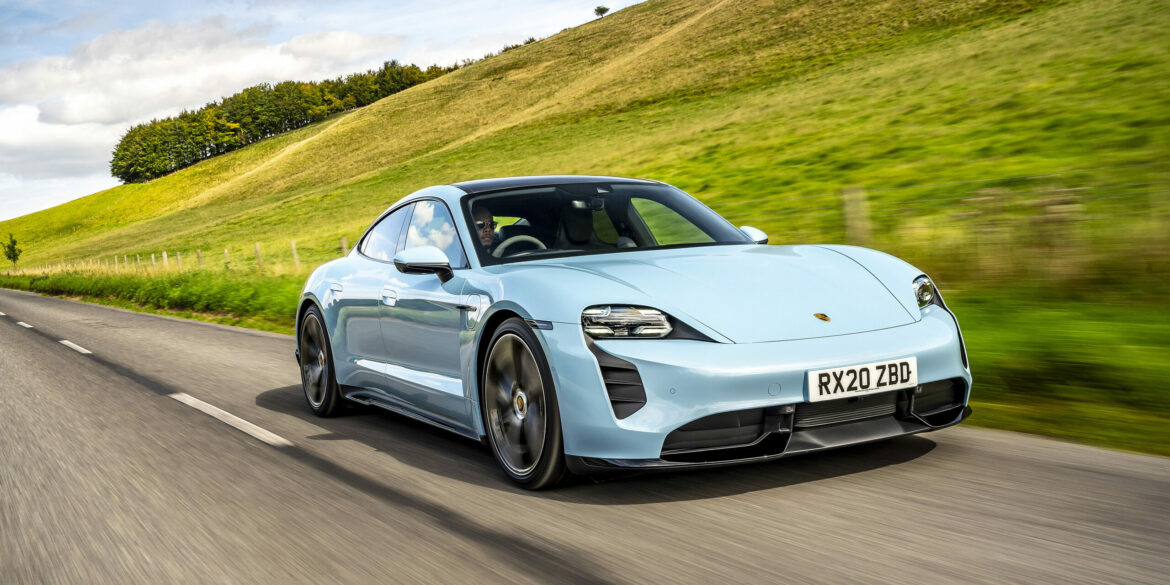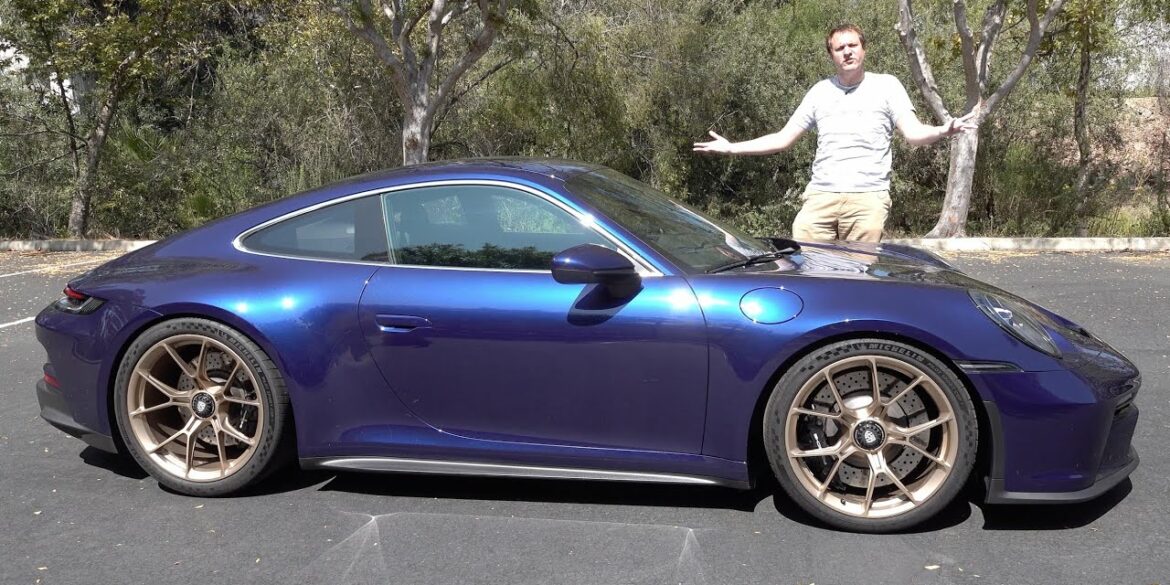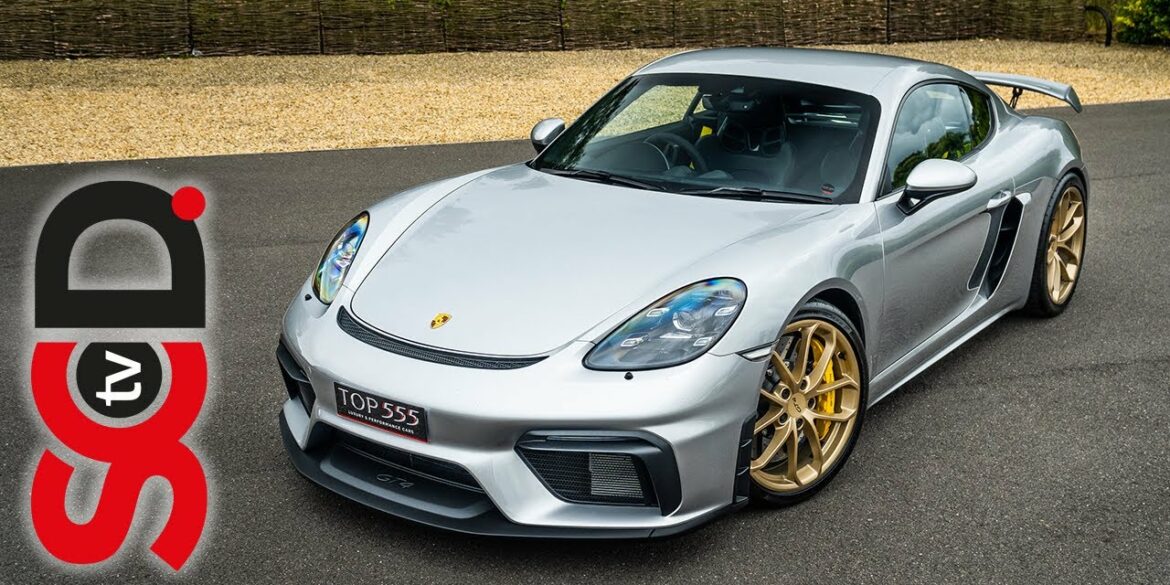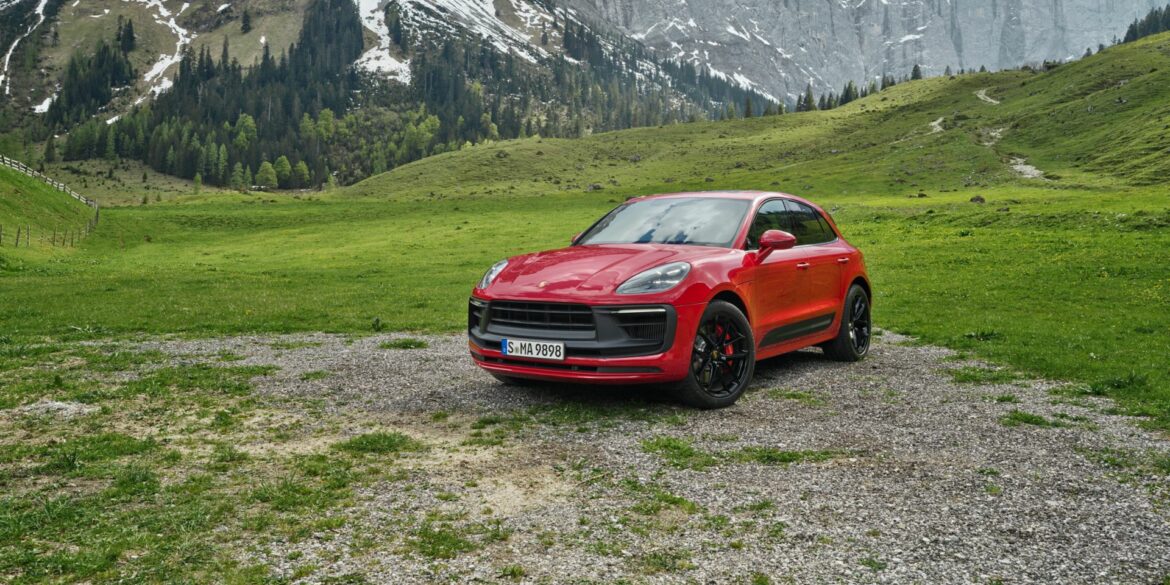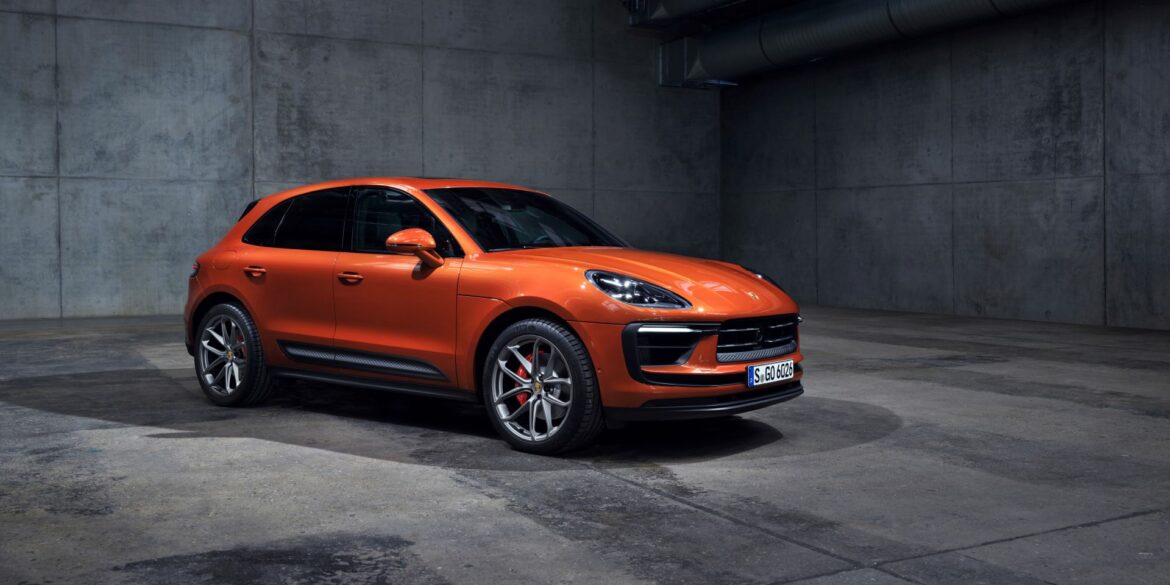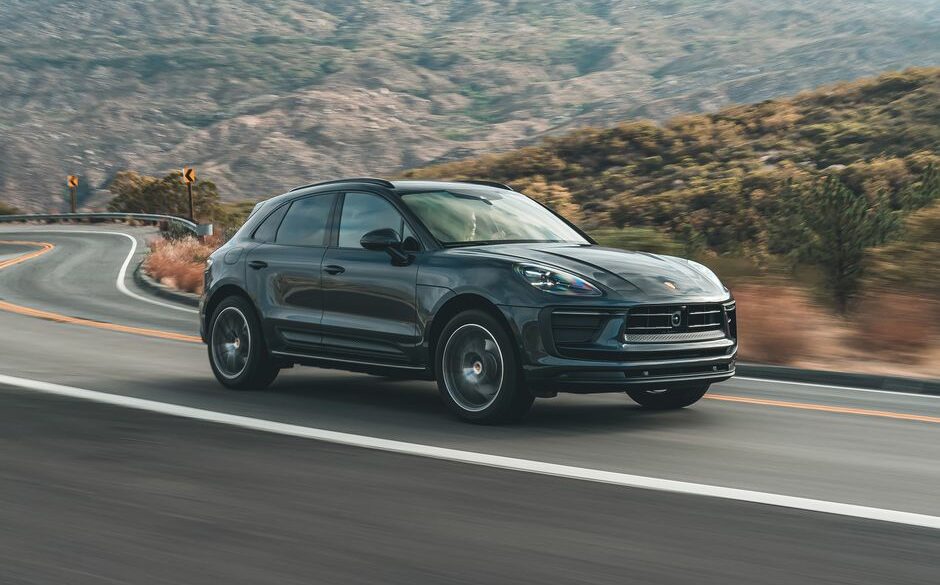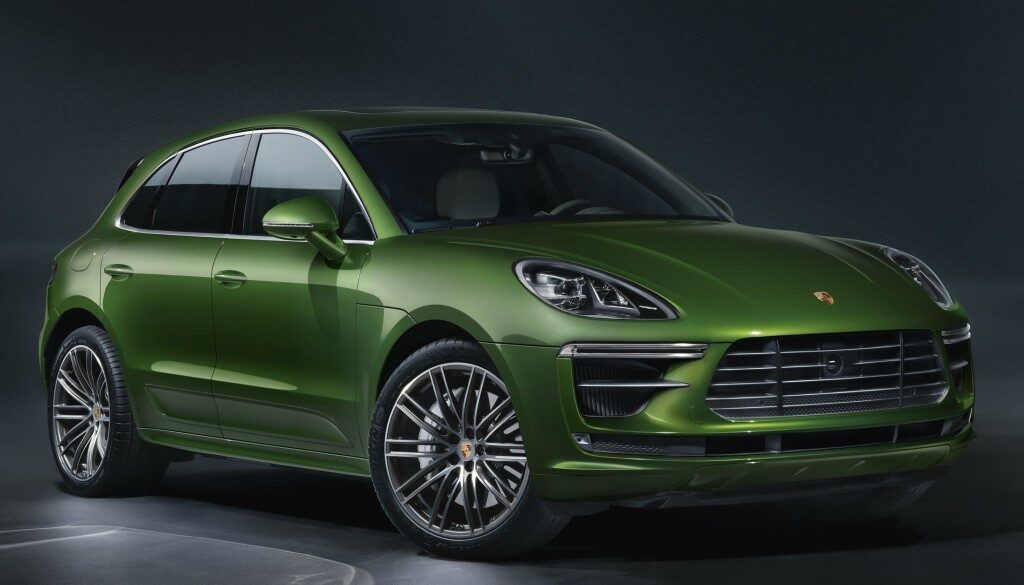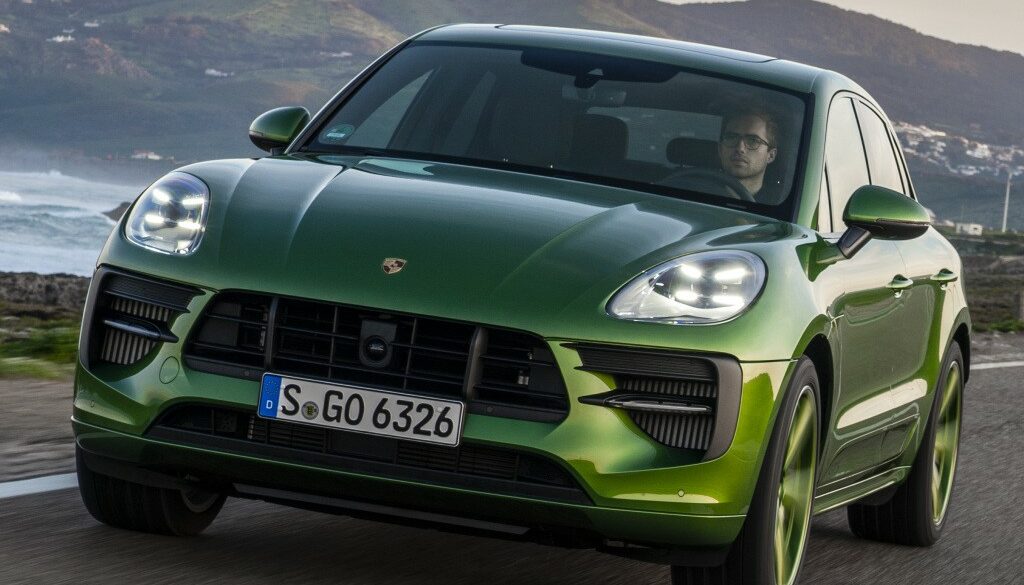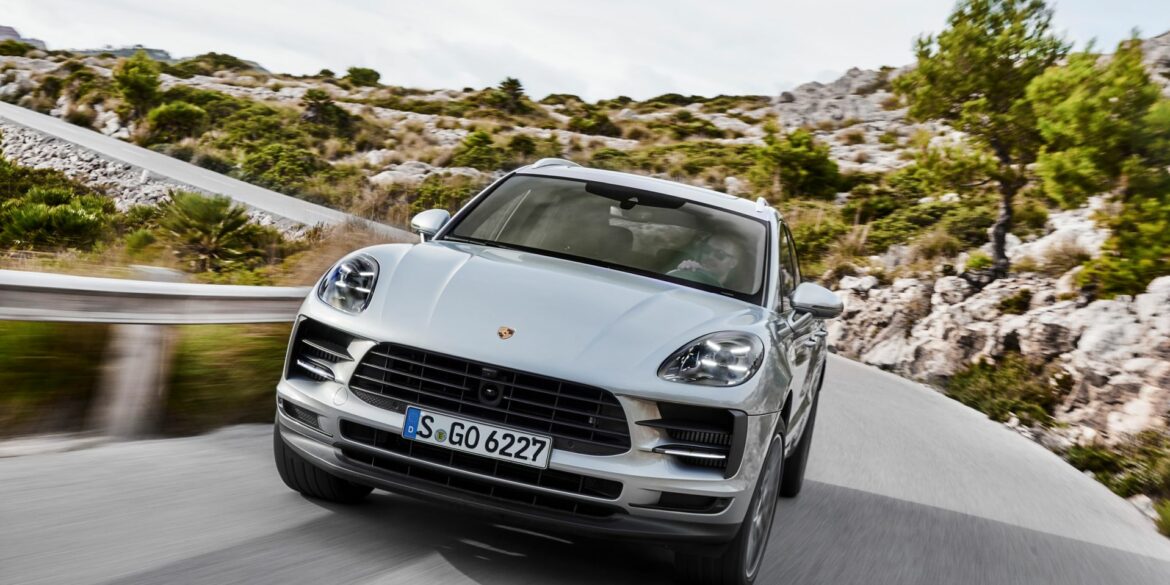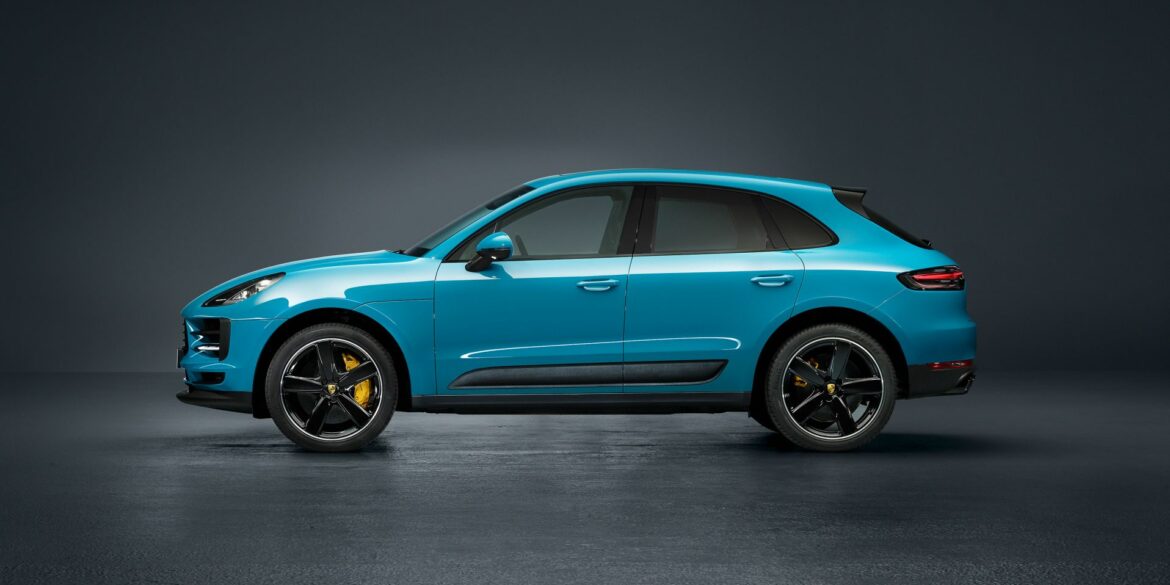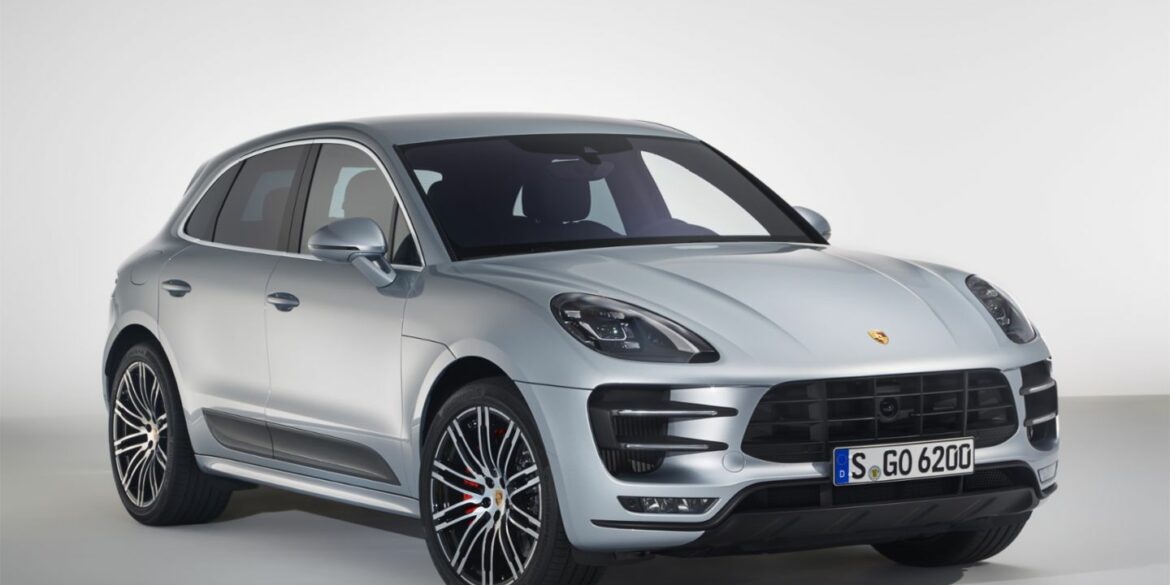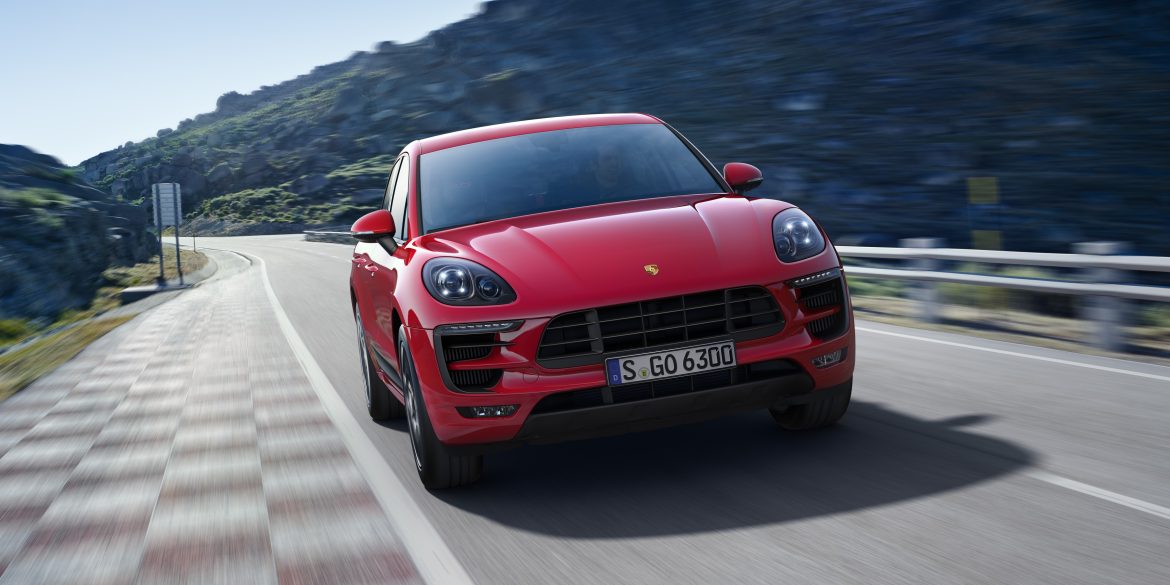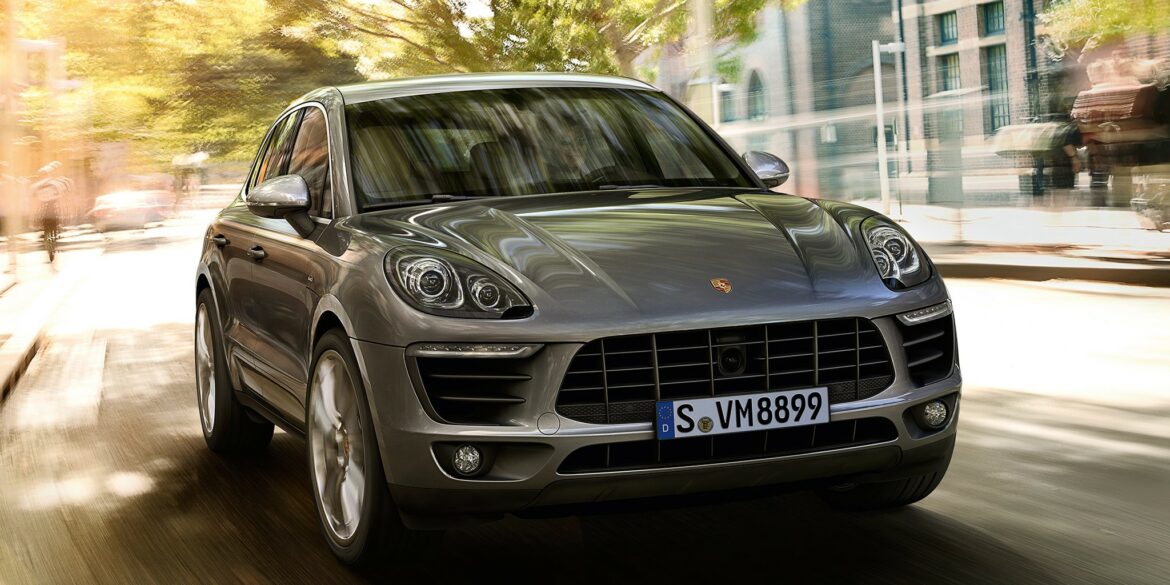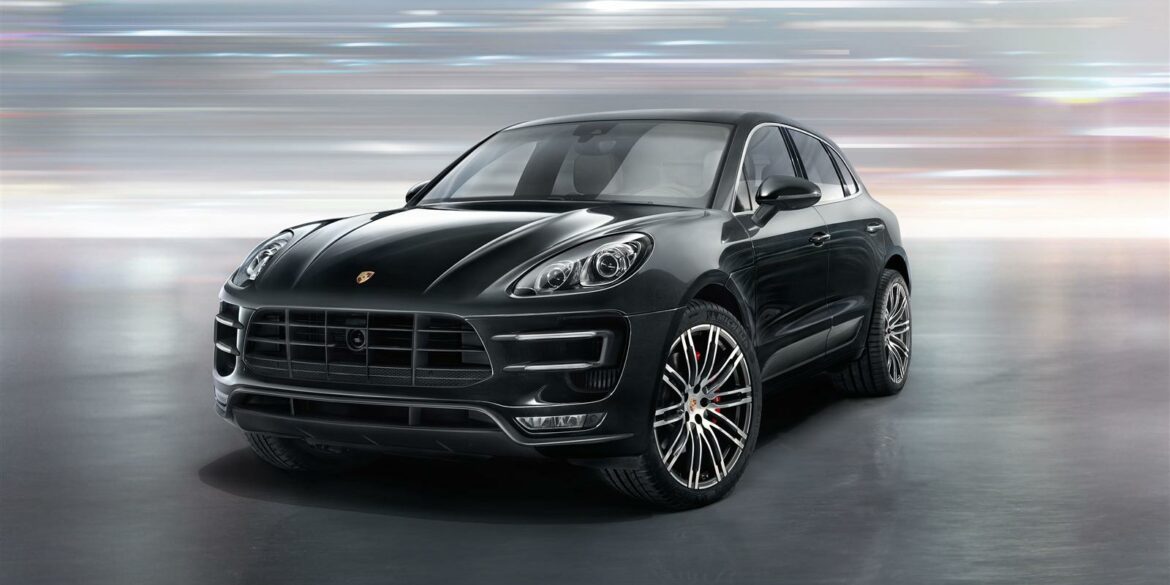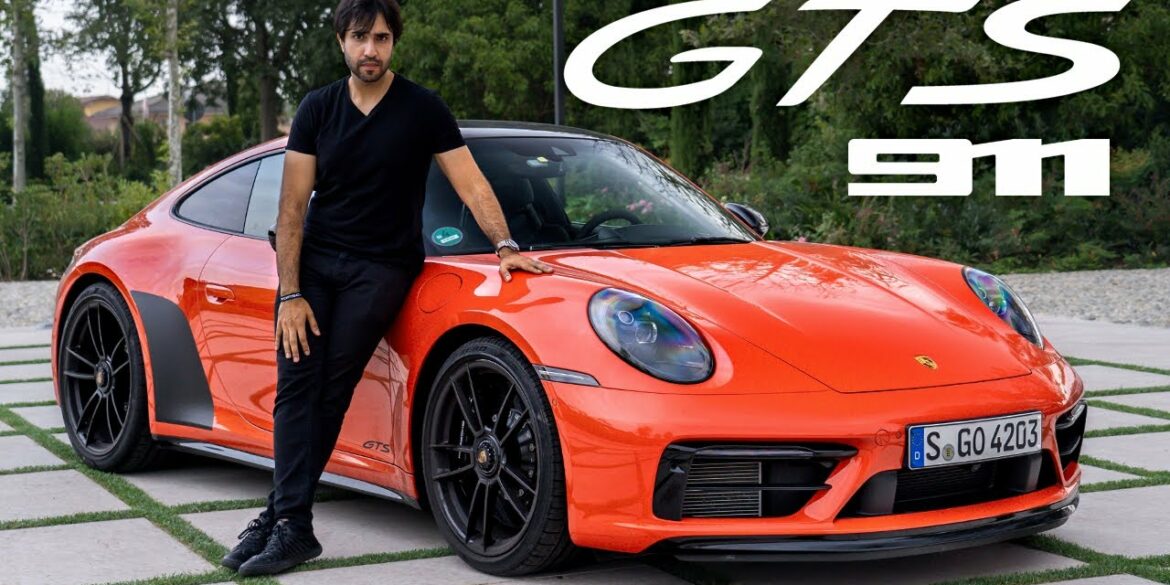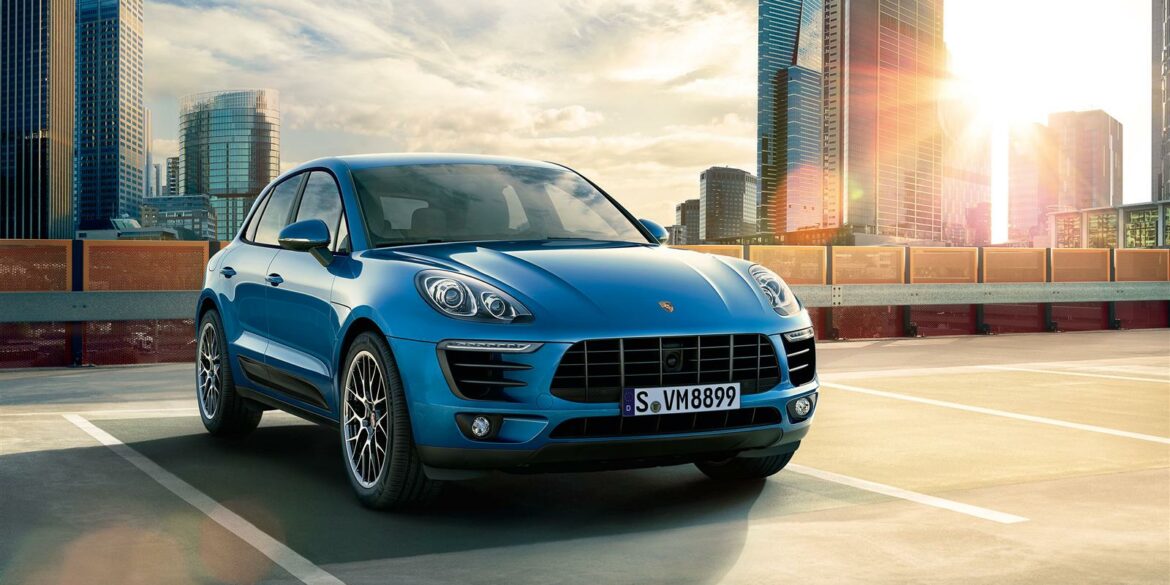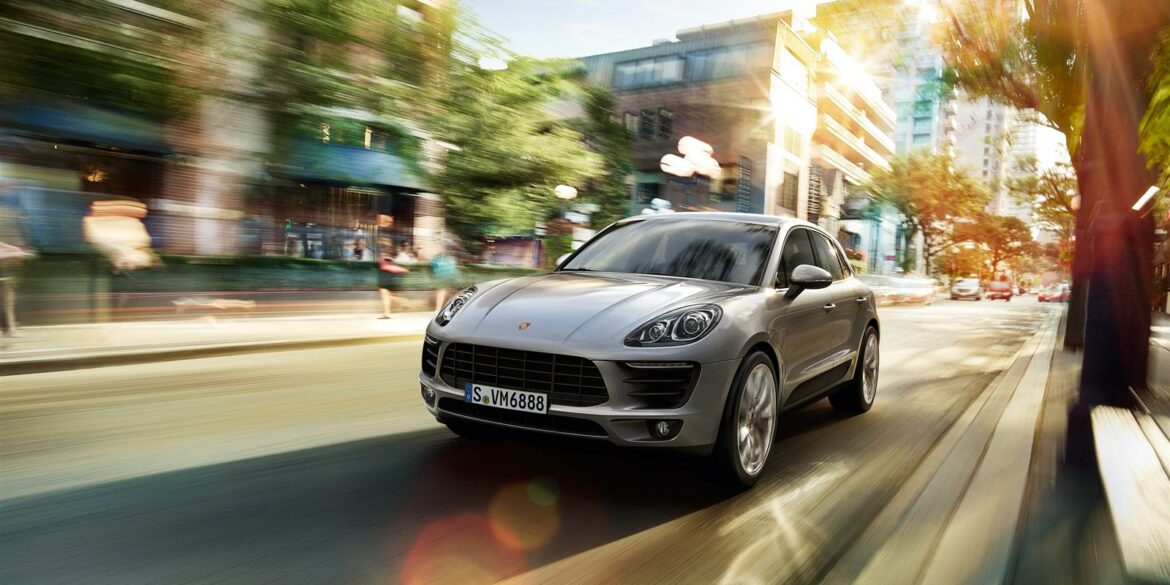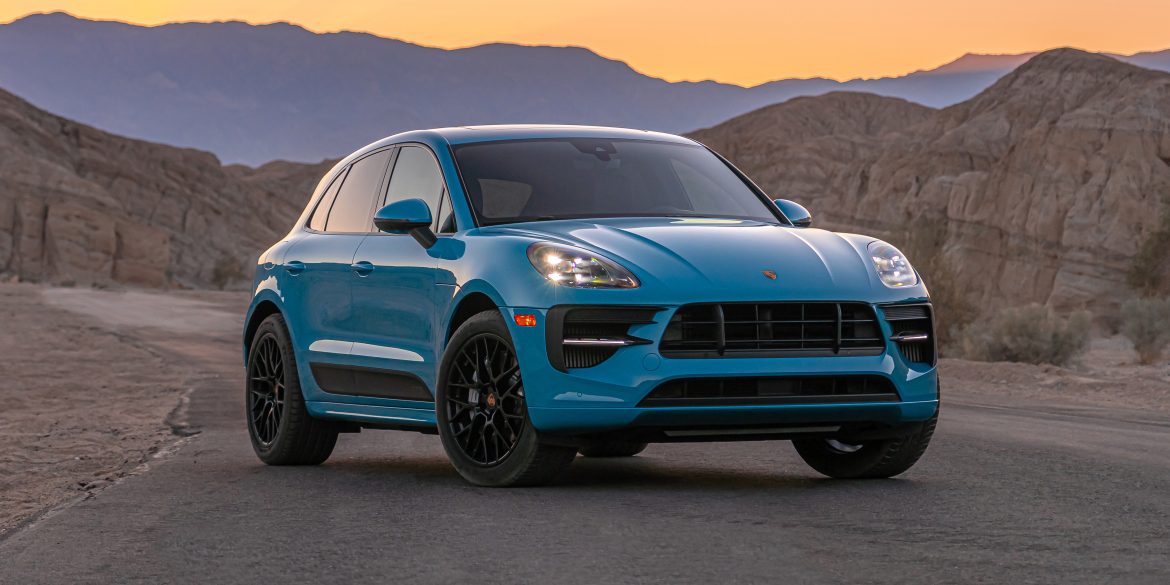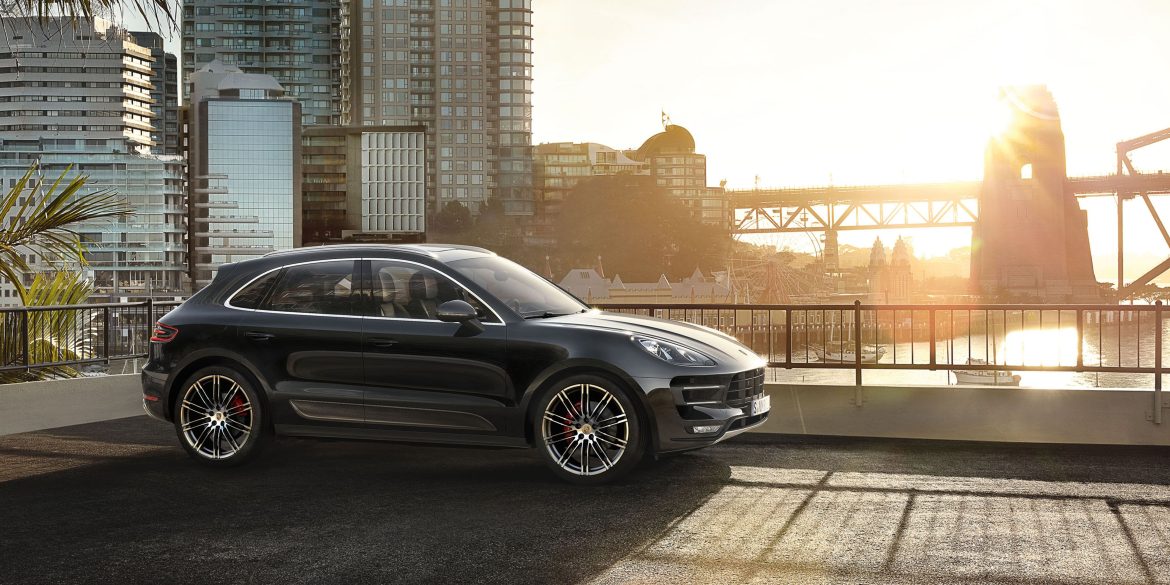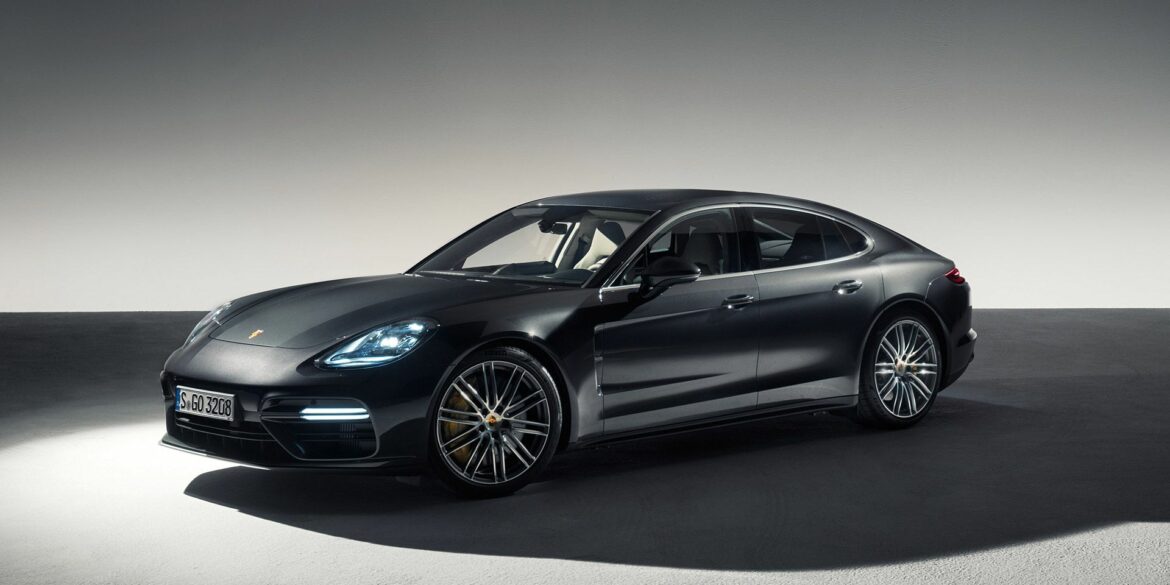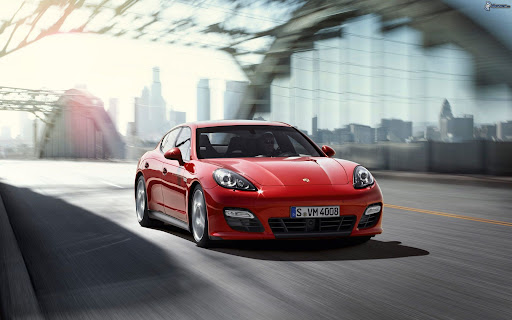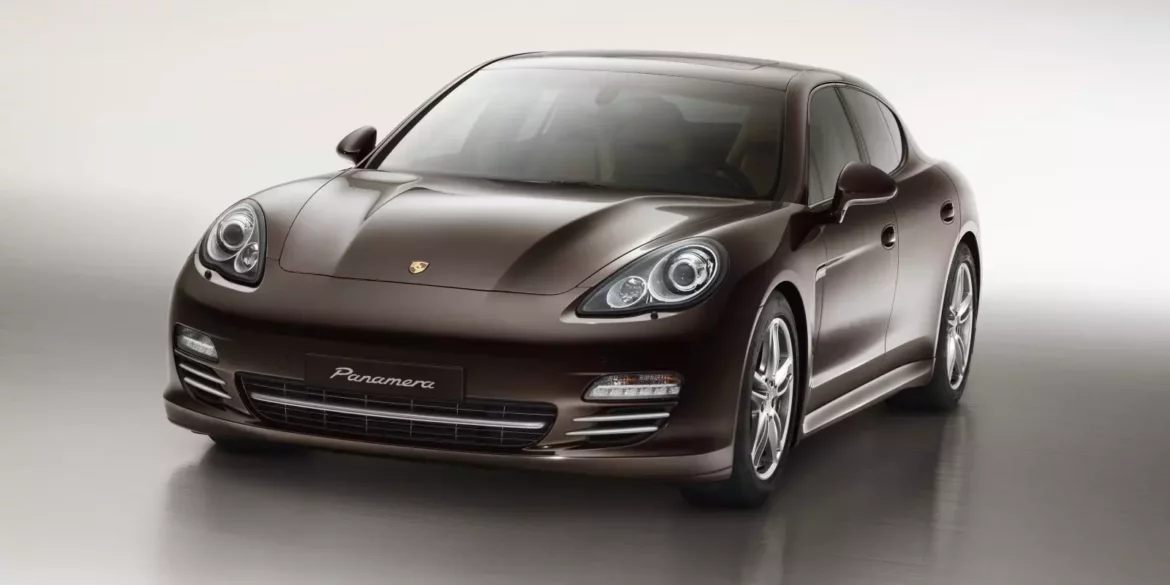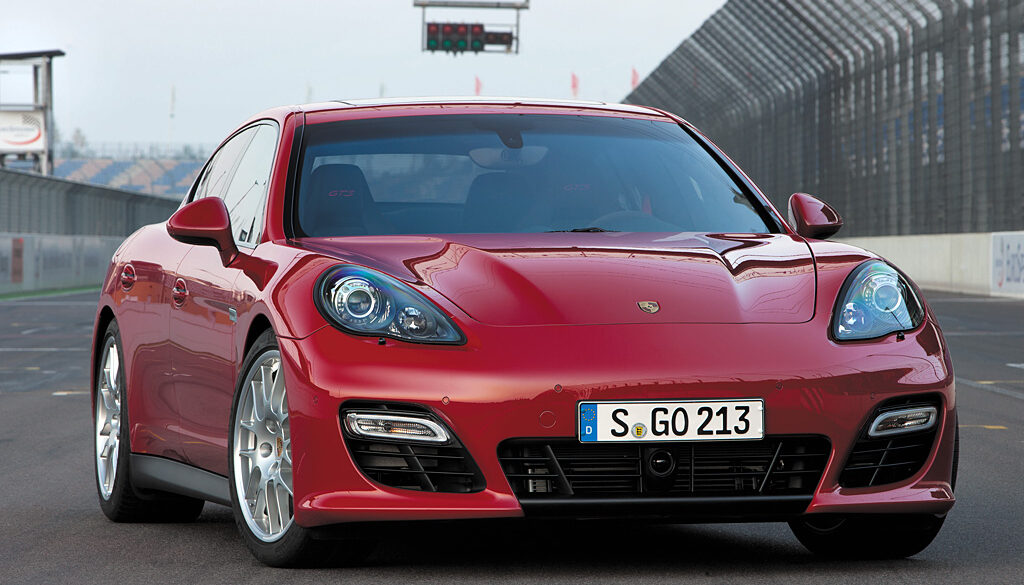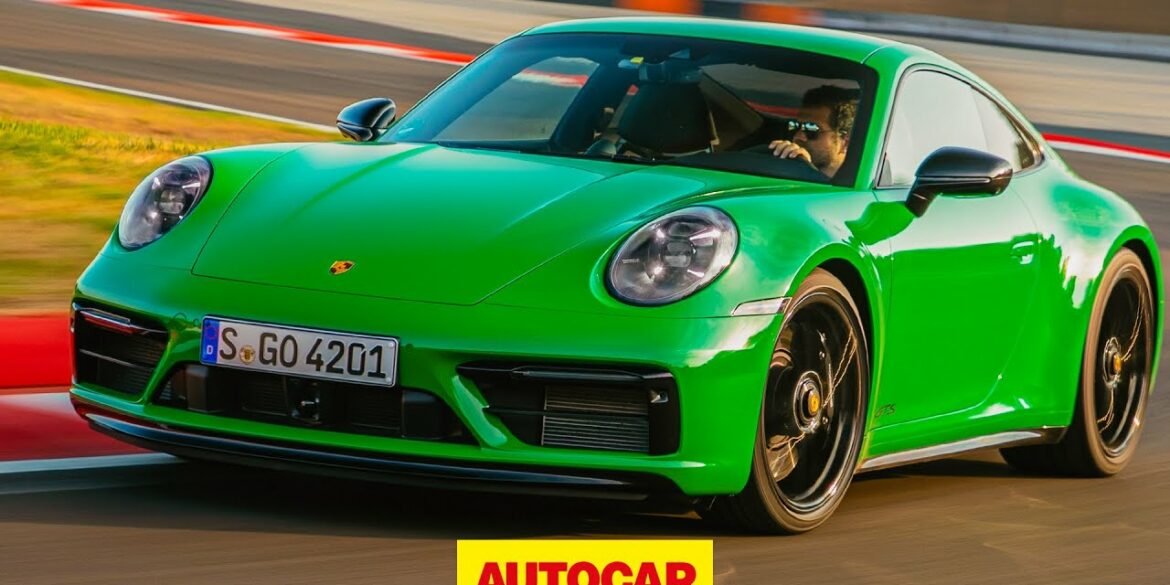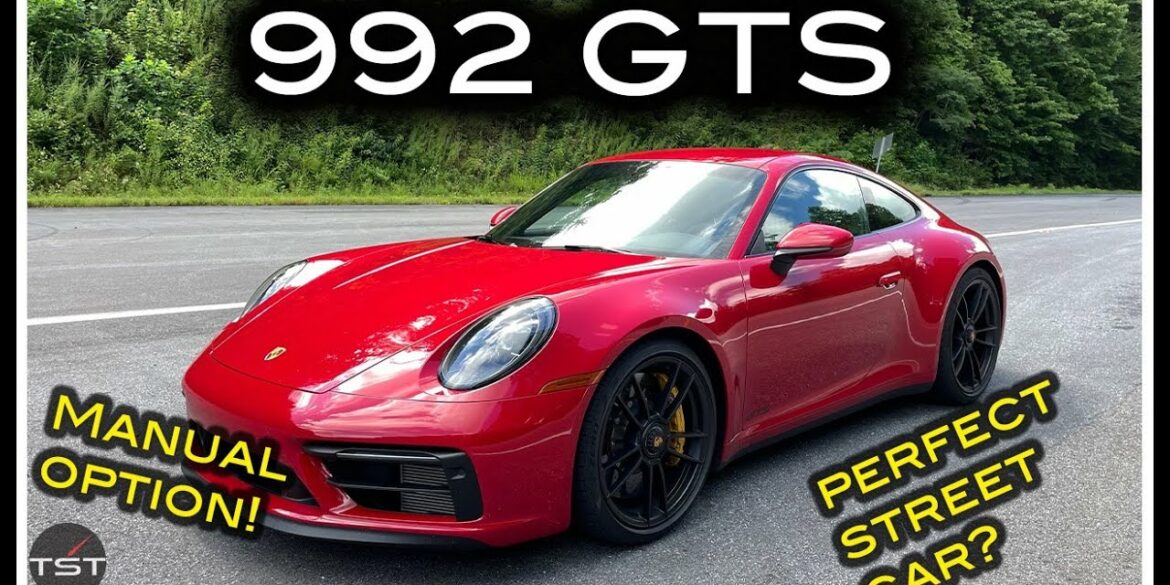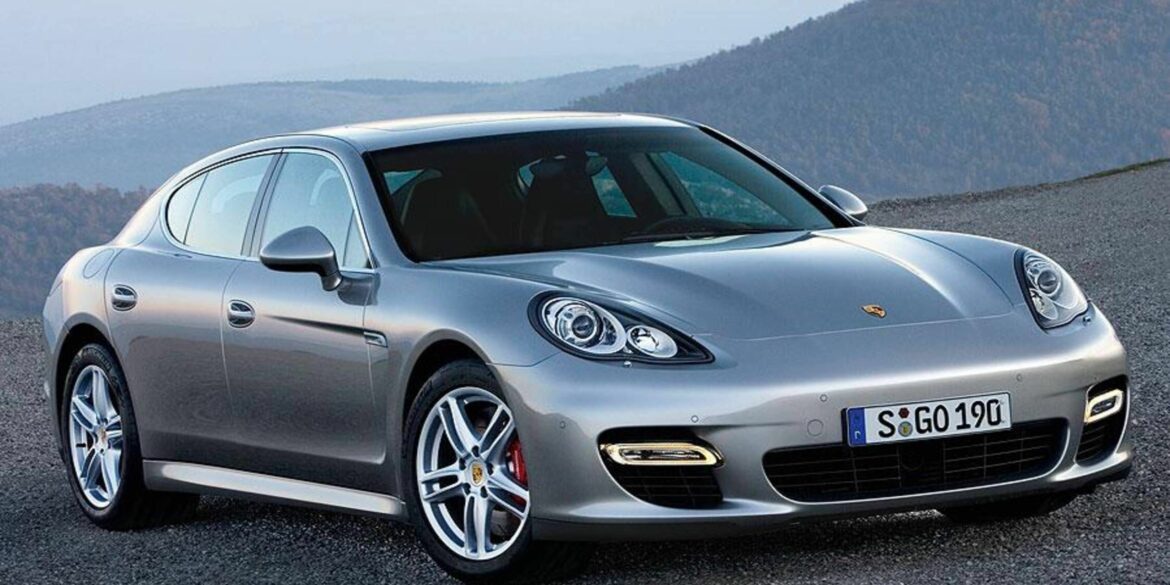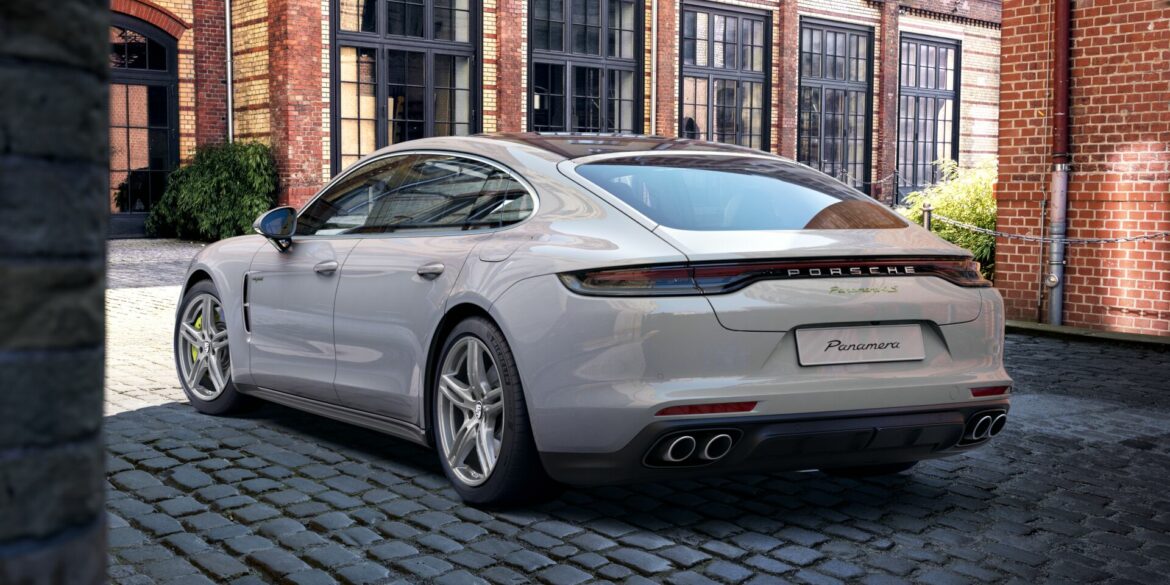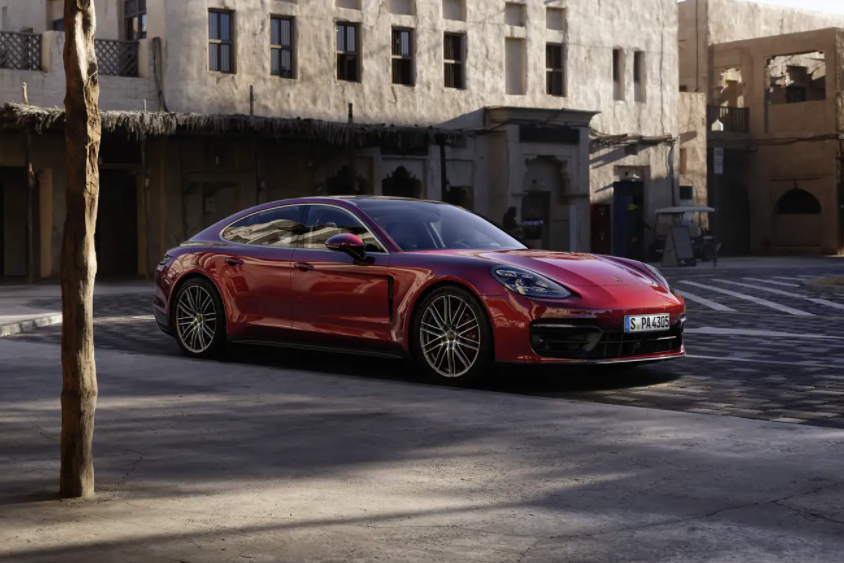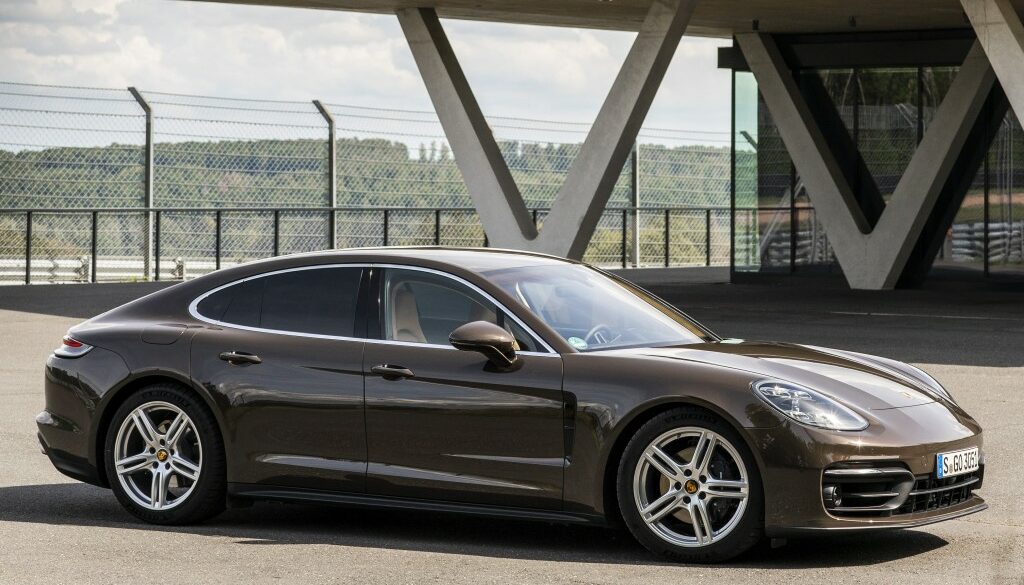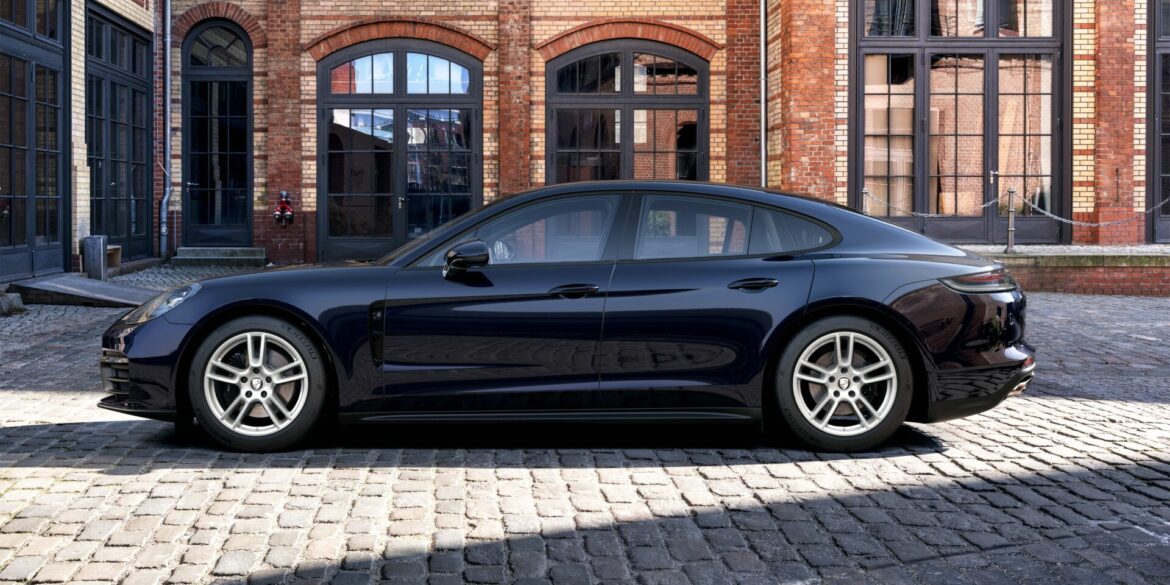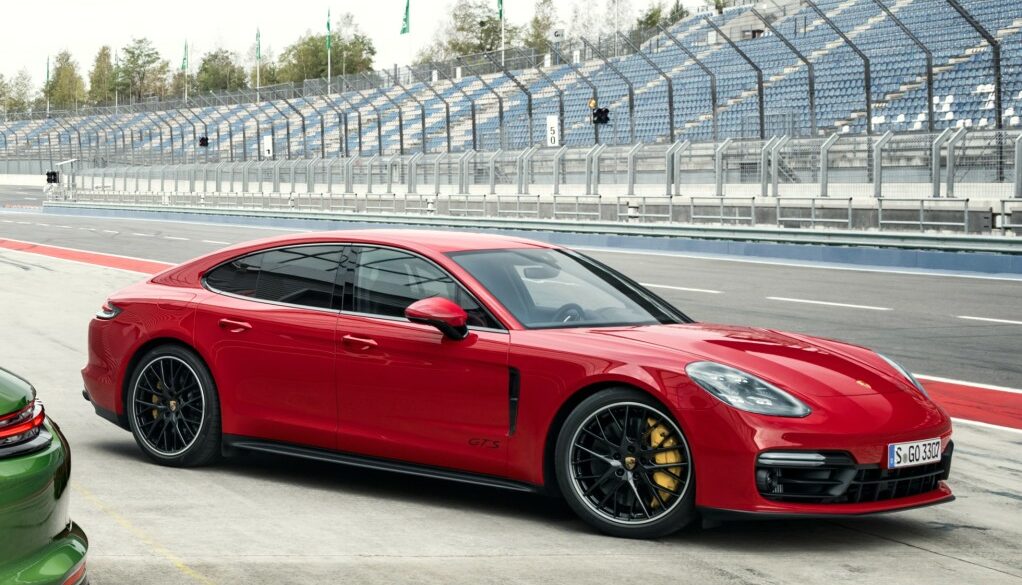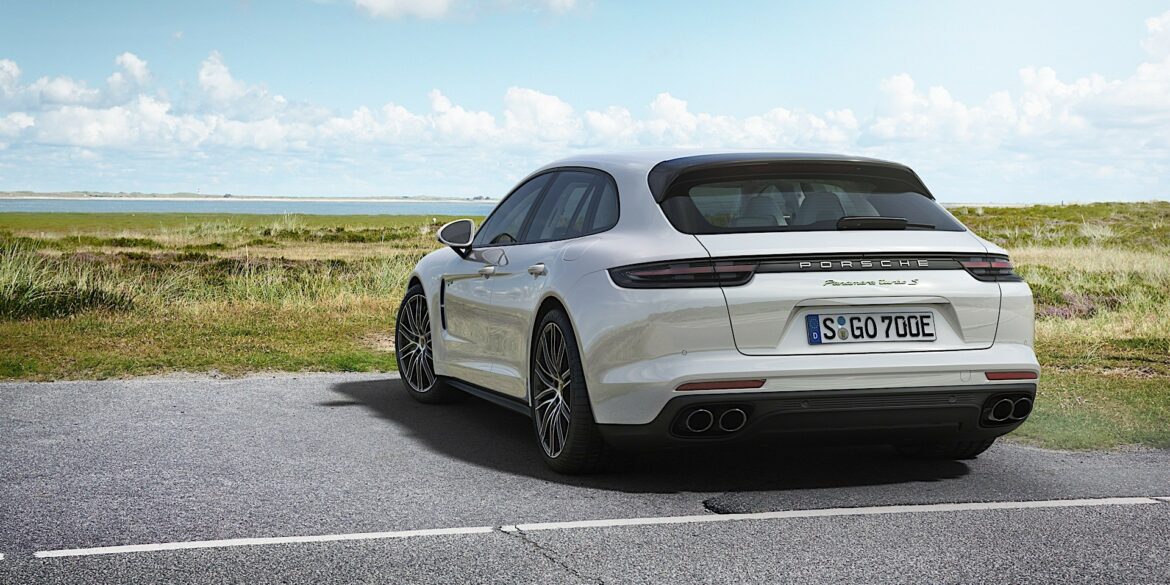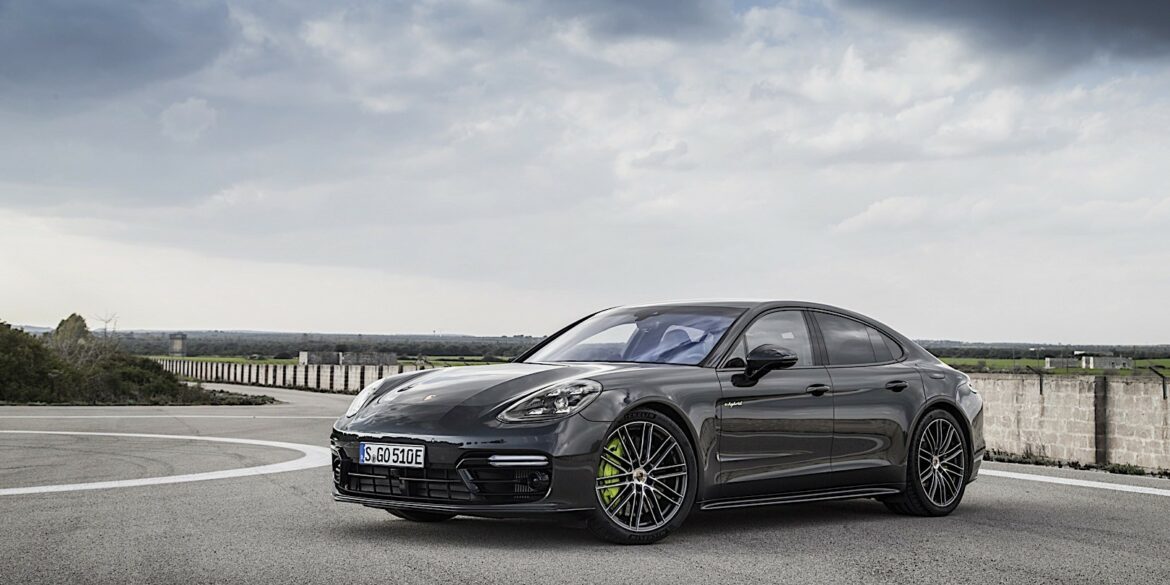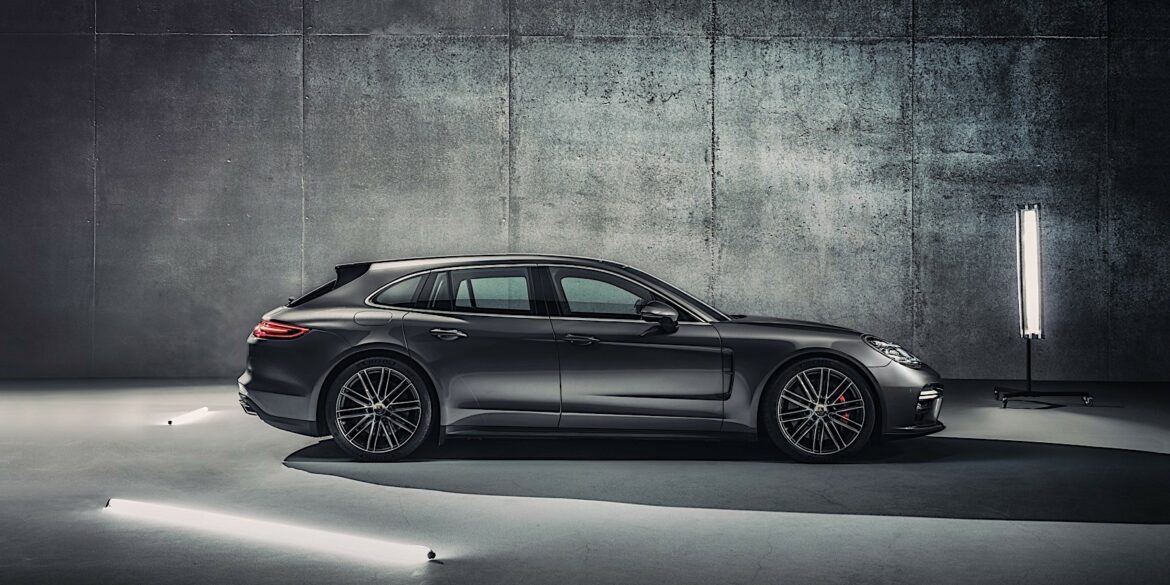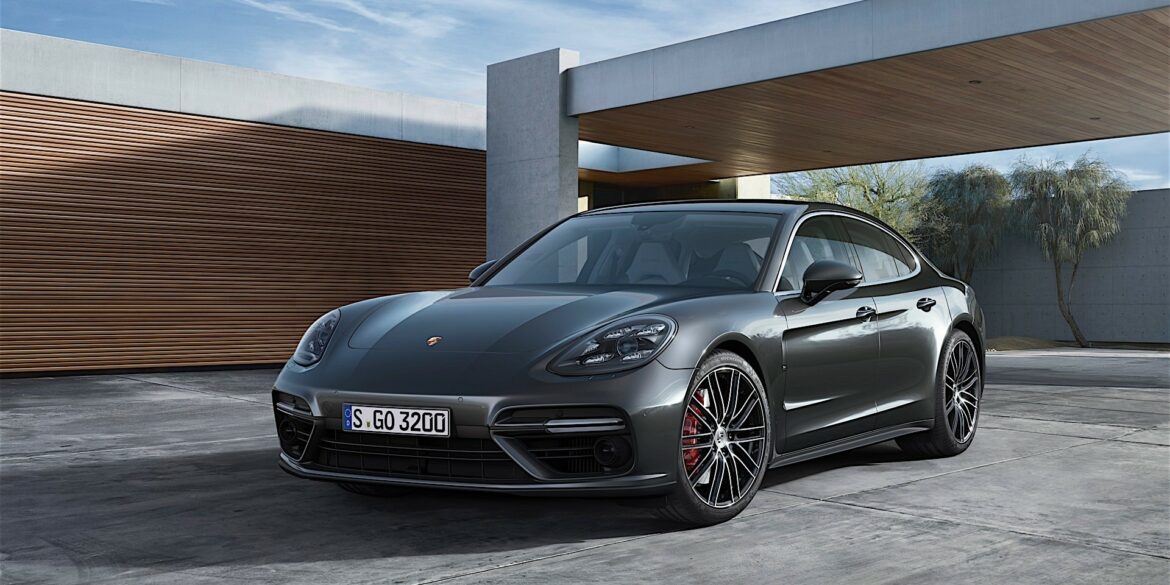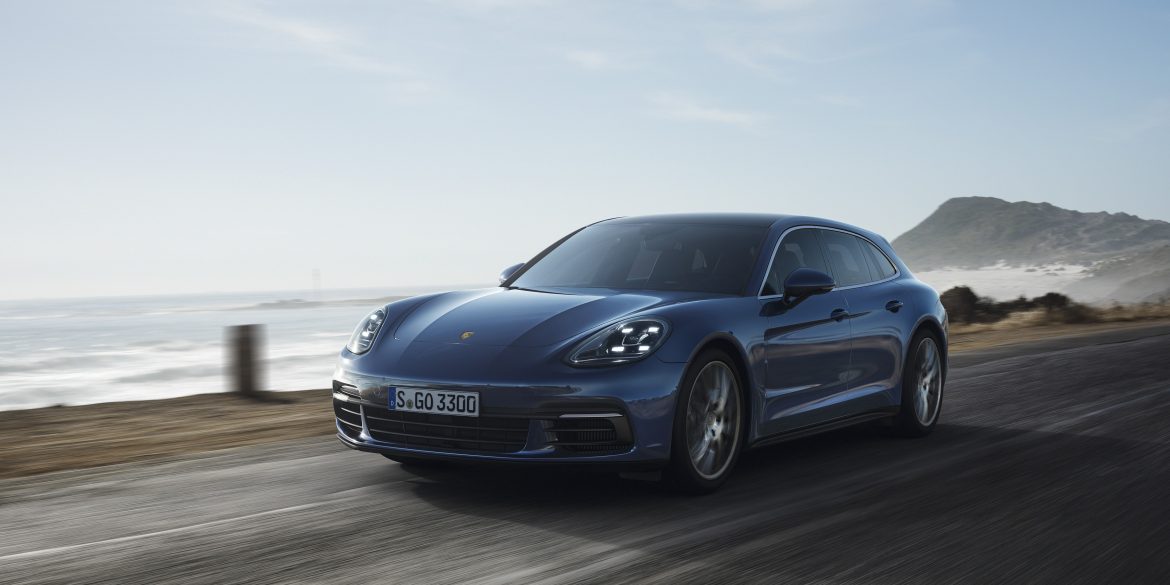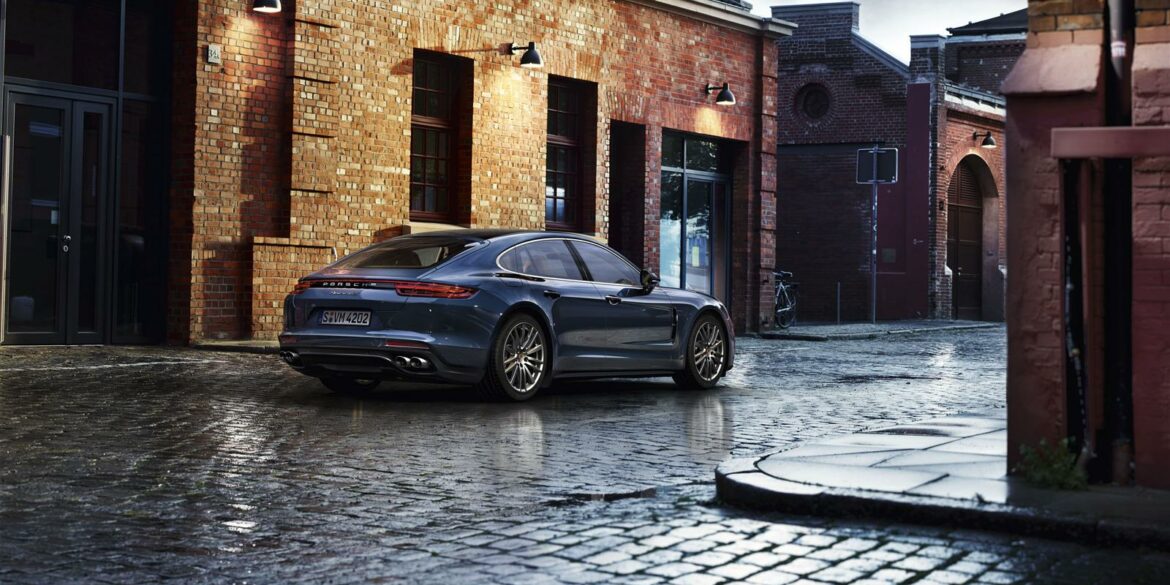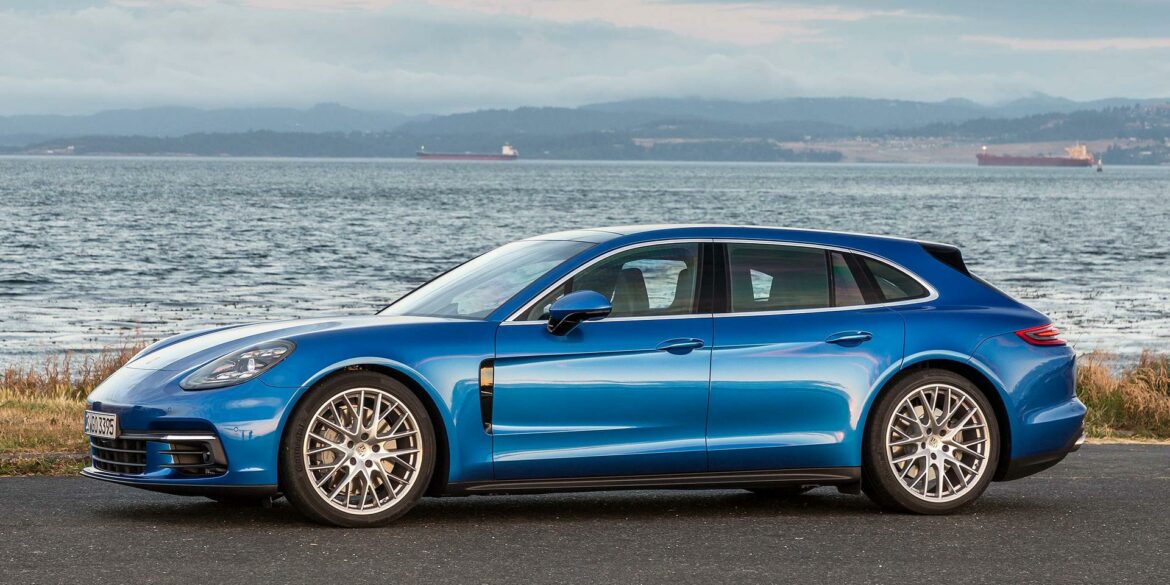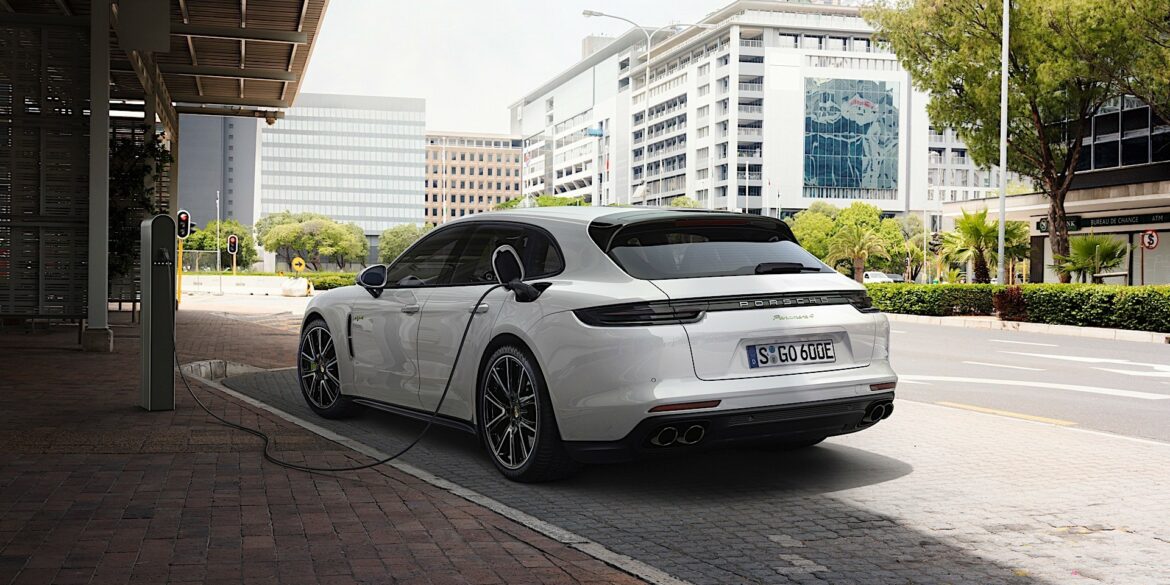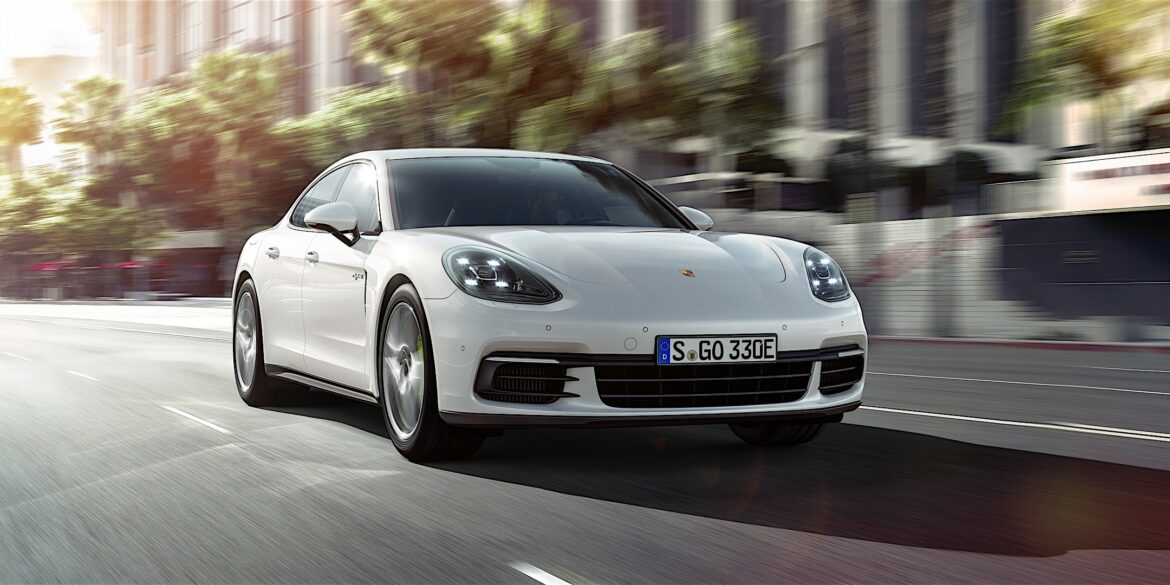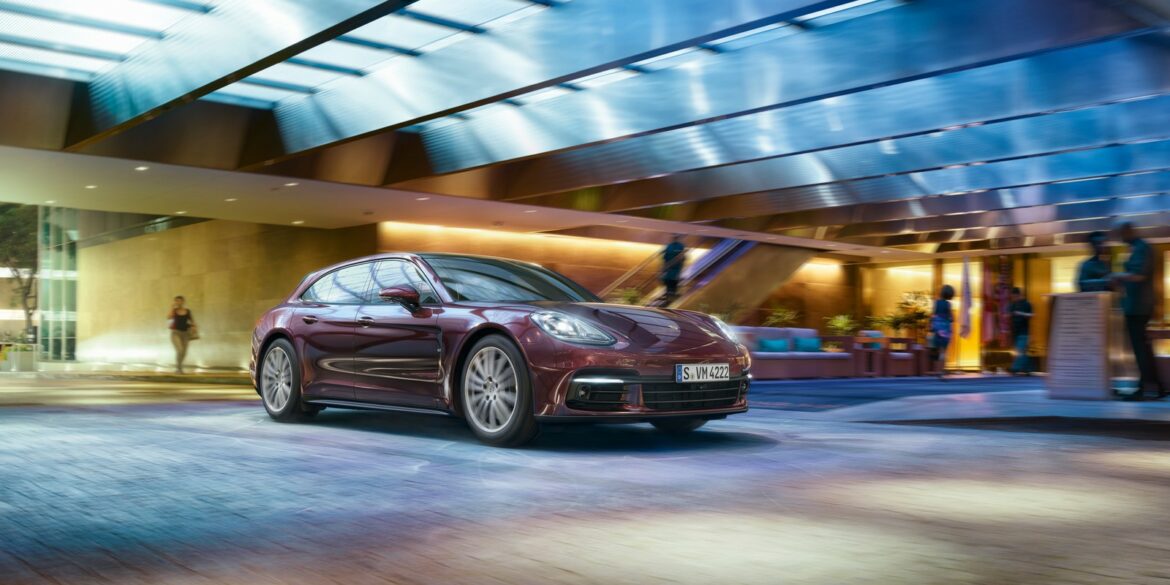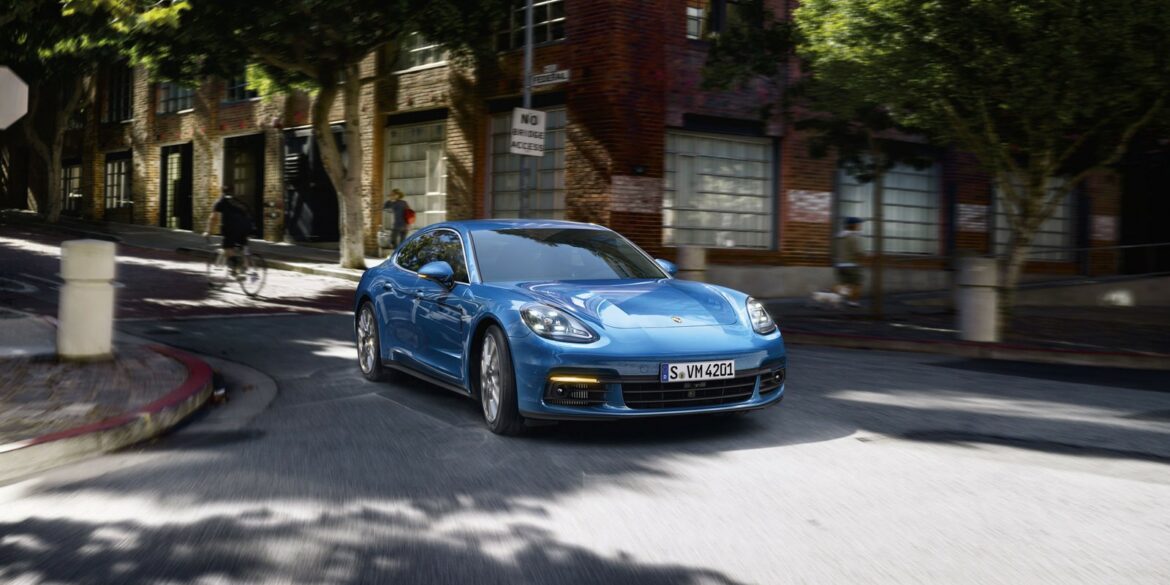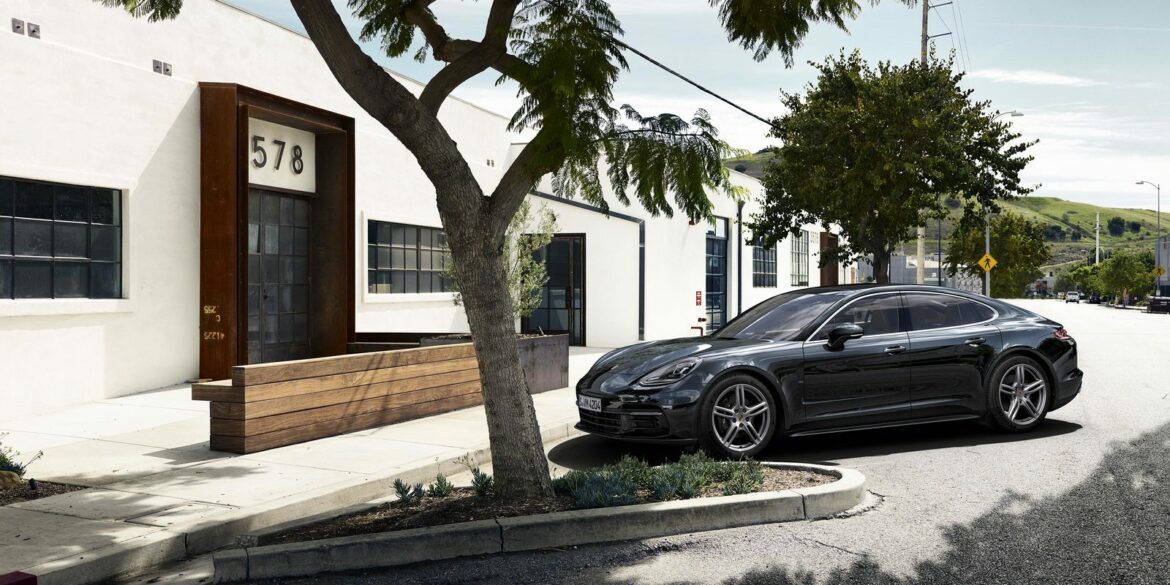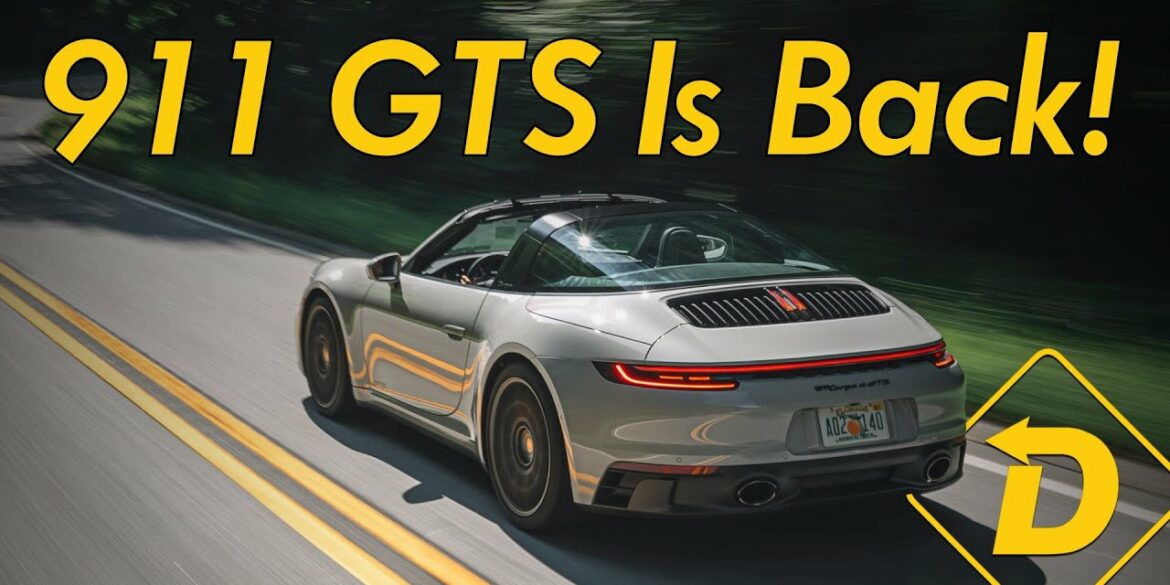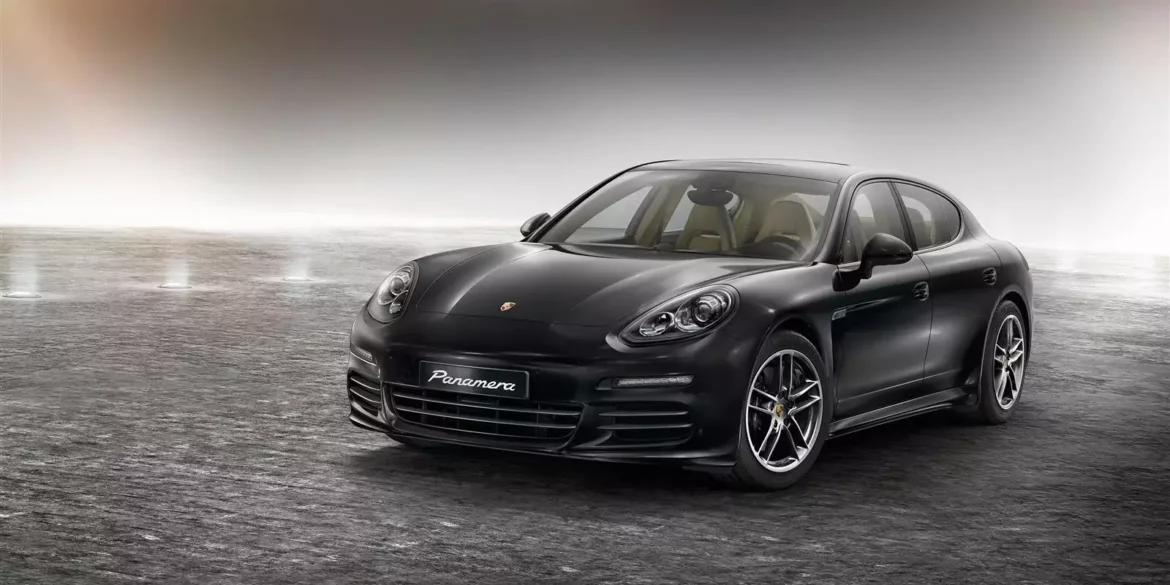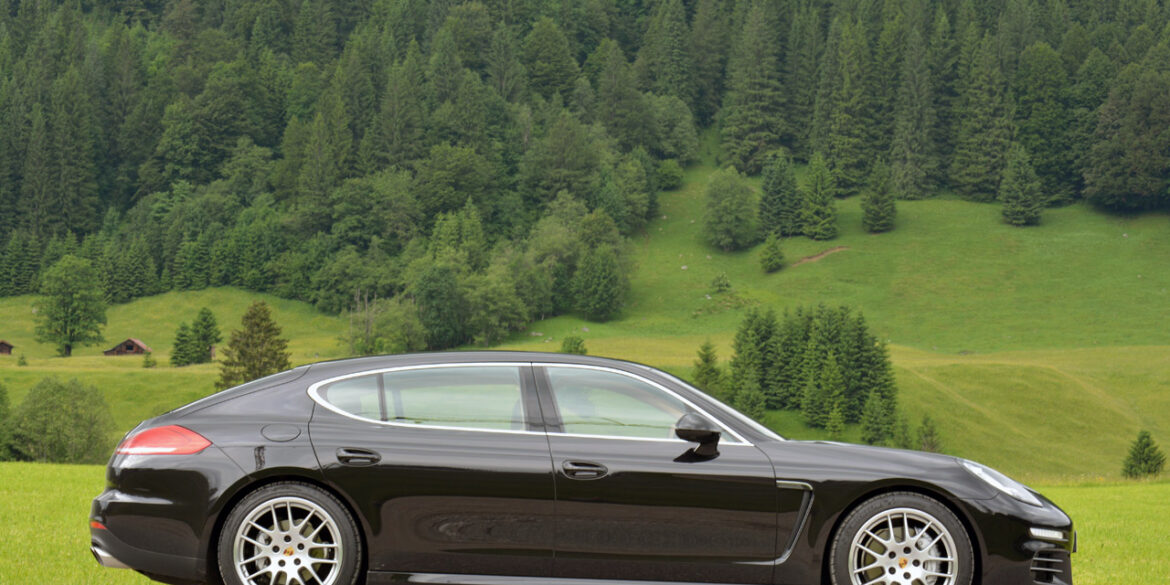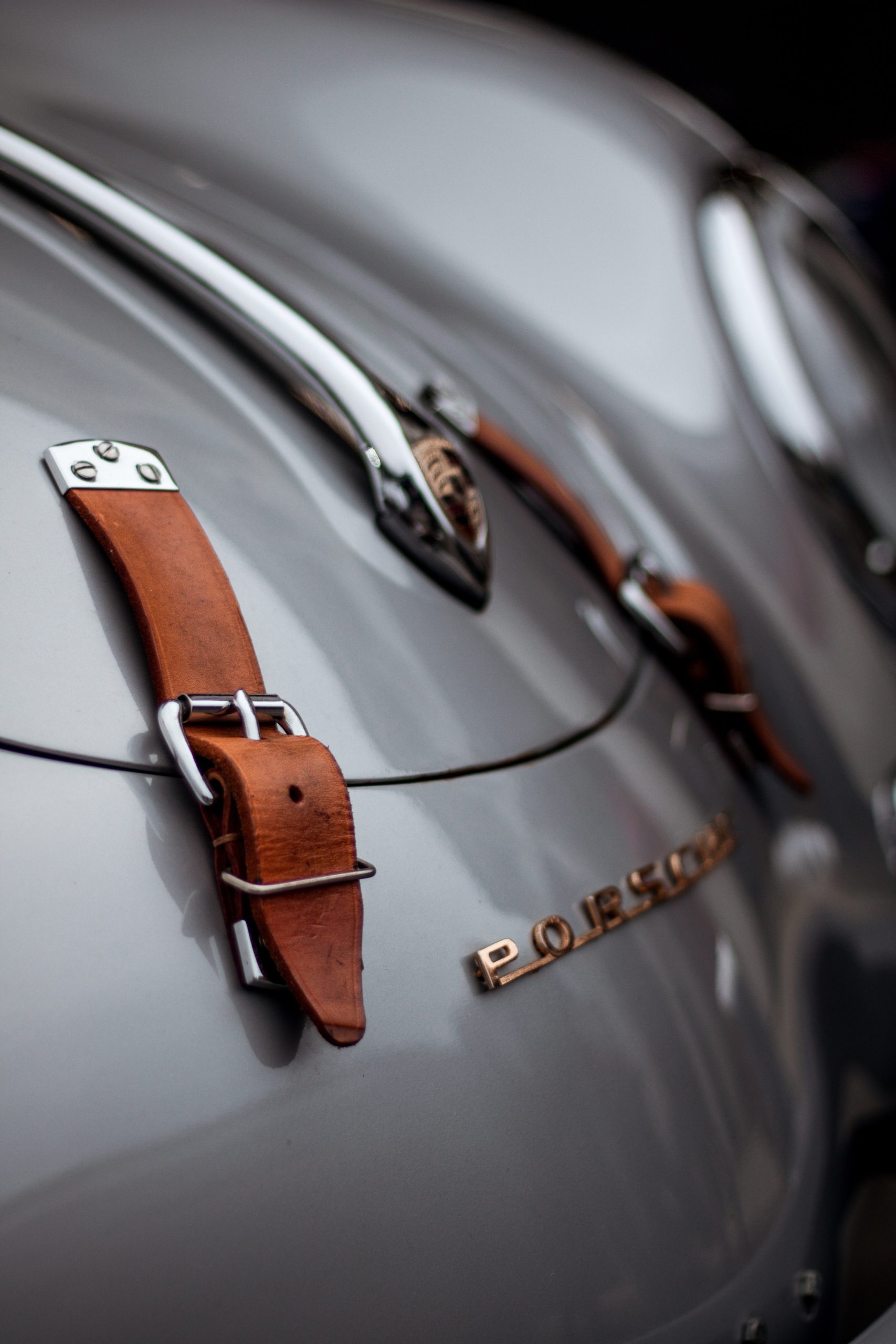Porsche 356C Driven In today’s video, we don’t learn much – but we do get to see me go rather gooey over a 1964 Porsche 356C....
JoinedMay 4, 2021
Articles3,519
Comments2
I am an Aussie boy, born and raised in Sydney who has now been living in my adopted hometown of New York since 2004. I never say NO to beer or pizza and love my wife and our three little boys. I'm an obsessed car nutcase. I talk about cars all day long. I have been into Porsches, Ferraris and every other cool carmaker since as far back as I remember. Back in 2013 I partnered up with some friends to acquire and operate some of my favorite automotive sites on the planet and Stuttcars was one of those sites. I hope to be a great steward of the brand.
2012 Porsche Boxster S Technical Specifications Engine Type Flat 6 Induction Normally-aspirated Cooling Water-cooled Valvetrain Double overhead camshafts Injection Direct Fuel Injection Bore X Stroke 3.82 in/97.0 mm x 3.05 in/77.5 mm Displacement 209.60 cu-in/3,436 cc Horsepower 310 bhp @ 6400 rpm Torque 265 ft lbs @ 5500 rpm Max...
2011 Porsche Boxster S Technical Specifications Engine Type Flat 6 Induction Normally-aspirated Cooling Water-cooled Valvetrain Double overhead camshafts Injection Direct Fuel Injection Bore X Stroke 3.82 in/97.0 mm x 3.05 in/77.5 mm Displacement 209.60 cu-in/3,436 cc Horsepower 310 bhp @ 6400 rpm Torque 265 ft lbs @ 5500 rpm Max...
2010 Porsche Boxster S Technical Specifications Engine Type Flat 6 Induction Normally-aspirated Cooling Water-cooled Valvetrain Double overhead camshafts Injection Direct Fuel Injection Bore X Stroke 3.82 in/97.0 mm x 3.05 in/77.5 mm Displacement 209.60 cu-in/3,436 cc Horsepower 310 bhp @ 6400 rpm Torque 265 ft lbs @ 5500 rpm Max...
2009 Porsche Boxster S Technical Specifications Engine Type Flat 6 Induction Normally-aspirated Cooling Water-cooled Valvetrain Double overhead camshafts Injection Direct Fuel Injection Bore X Stroke 3.82 in/97.0 mm x 3.05 in/77.5 mm Displacement 209.60 cu-in/3,436 cc Horsepower 310 bhp @ 6400 rpm Torque 265 ft lbs @ 5500 rpm Max...
2008 Porsche Boxster S Technical Specifications Engine Type Flat 6 Induction Normally-aspirated Cooling Water-cooled Valvetrain Double overhead camshafts Injection Port injection Bore X Stroke 3.78 in/96.0 mm x 3.07 in/78.0 mm Displacement 206.61 ci/3,387 cc Horsepower 295 bhp @ 6250 rpm Torque 251 ft lbs @ 4400 rpm Max Rpm...
2007 Porsche Boxster S Technical Specifications Engine Type Flat 6 Induction Normally-aspirated Cooling Water-cooled Valvetrain Double overhead camshafts Injection Port injection Bore X Stroke 3.78 in/96.0 mm x 3.07 in/78.0 mm Displacement 206.61 ci/3,387 cc Horsepower 295 bhp @ 6250 rpm Torque 251 ft lbs @ 4400 rpm Max Rpm...
2006 Porsche Boxster S Technical Specifications Engine Type Flat 6 Induction Normally-aspirated Cooling Water-cooled Valvetrain Double overhead camshafts Injection Port injection Bore X Stroke 3.66 in/93.0 mm x 3.07 in/78.0 mm Displacement 193.92 cu-in/3,179 cc Horsepower 276 bhp @ 6200 rpm Torque 236 ft lbs @ 4700 rpm Max Rpm...
2005 Porsche Boxster S Technical Specifications Engine Type Flat 6 Induction Normally-aspirated Cooling Water-cooled Valvetrain Double overhead camshafts Injection Port injection Bore X Stroke 3.66 in/93.0 mm x 3.07 in/78.0 mm Displacement 193.92 cu-in/3,179 cc Horsepower 276 bhp @ 6200 rpm Torque 236 ft lbs @ 4700 rpm Max Rpm...
2012 Porsche Boxster Technical Specifications Engine Type Flat 6 Induction Normally-aspirated Cooling Water-cooled Valvetrain Double overhead camshafts Injection Port injection Bore X Stroke 3.50 in/89.0 mm x 3.05 in/77.5mm Displacement 176.47 cu in/2,893 cc Horsepower 255 bhp @ 6400 rpm Torque 214 ft lbs @ 4400 rpm Max Rpm 7500...
2011 Porsche Boxster Technical Specifications Engine Type Flat 6 Induction Normally-aspirated Cooling Water-cooled Valvetrain Double overhead camshafts Injection Port injection Bore X Stroke 3.50 in/89.0 mm x 3.05 in/77.5mm Displacement 176.47 cu in/2,893 cc Horsepower 255 bhp @ 6400 rpm Torque 214 ft lbs @ 4400 rpm Max Rpm 7500...
2010 Porsche Boxster Technical Specifications Engine Type Flat 6 Induction Normally-aspirated Cooling Water-cooled Valvetrain Double overhead camshafts Injection Port injection Bore X Stroke 3.50 in/89.0 mm x 3.05 in/77.5mm Displacement 176.47 cu in/2,893 cc Horsepower 255 bhp @ 6400 rpm Torque 214 ft lbs @ 4400 rpm Max Rpm 7500...
2009 Porsche Boxster Technical Specifications Engine Type Flat 6 Induction Normally-aspirated Cooling Water-cooled Valvetrain Double overhead camshafts Injection Port injection Bore X Stroke 3.50 in/89.0 mm x 3.05 in/77.5mm Displacement 176.47 cu in/2,893 cc Horsepower 255 bhp @ 6400 rpm Torque 214 ft lbs @ 4400 rpm Max Rpm 7500...
2008 Porsche Boxster Technical Specifications Engine Type Flat 6 Induction Normally-aspirated Cooling Water-cooled Valvetrain Double overhead camshafts Injection Port injection Bore X Stroke 3.37 in/85.5 mm x 3.07 in/78 mm Displacement 163.91 cu in/2,687 cc Horsepower 245 bhp @ 6500 rpm Torque 201 ft lbs @ 4600 rpm Max Rpm...
2007 Porsche Boxster Technical Specifications Engine Type Flat 6 Induction Normally-aspirated Cooling Water-cooled Valvetrain Double overhead camshafts Injection Port injection Bore X Stroke 3.37 in/85.5 mm x 3.07 in/78 mm Displacement 163.91 cu in/2,687 cc Horsepower 245 bhp @ 6500 rpm Torque 201 ft lbs @ 4600 rpm Max Rpm...
2006 Porsche Boxster Technical Specifications Engine Type Flat 6 Induction Normally-aspirated Cooling Water-cooled Valvetrain Double overhead camshafts Injection Port injection Bore X Stroke 3.37 in/85.5 mm x 3.07 in/78 mm Displacement 163.91 cu in/2,687 cc Horsepower 237 bhp @ 6400 rpm Torque 199 ft lbs @ 4700 rpm Max Rpm...
2005 Porsche Boxster Technical Specifications Engine Type Flat 6 Induction Normally-aspirated Cooling Water-cooled Valvetrain Double overhead camshafts Injection Port injection Bore X Stroke 3.37 in/85.5 mm x 3.07 in/78 mm Displacement 163.91 cu in/2,687 cc Horsepower 237 bhp @ 6400 rpm Torque 199 ft lbs @ 4700 rpm Max Rpm...
On 5 November 2009, Porsche officially announced the Boxster Spyder, which was the lightest Porsche on the market at the time, weighing 1,275 kg , 80 kg lighter than a Boxster S. This was achieved through the elimination of the conventional soft top's operating mechanism, the radio/PCM unit, door handles, air conditioning, storage compartments, cup holders and large LED light modules on the front fascia, although some of these could be re-added to the car in the form of options. Weight saving was also gained using aluminum doors, an aluminum rear deck and the lightest 19-inch wheels.
The 2008 facelift of the Boxster S is powered by a new direct-injection 3.4-liter Boxer engine which develops more power than the earlier variant. The styling got a bit updated with some redesigned headlight casings, taillights, and bumpers, while the interior got new infotainment and more material/color combinations. There's a revised 6-speed manual as well as a new 7-speed PDK gearbox. Performance improves, with power now at 310 hp, rocketing the 987.2 Boxster S from 0 - 60 mph in just 5.2 seconds and to a top speed of 170 mph.
(2011 – 2012) Porsche Boxster Spyder (987.2) Technical Specifications Top speed figures of the Spyder are measured without soft top (speed limited to 124 mph/200 km/h when top on). DIN weight = car with 90% fuel, no driver, no cargo, German versions with standard equipment. * with Launch Control. Modification...
2009 Porsche Boxster RS 60 Spyder (987.2) Technical Specifications engine All Aluminum Opposed-6 w/Dry Sump Lubrication position Mid Longitudinal aspiration Natural valvetrain DOHC, 4 Valves per Cyl w/VarioCam fuel feed Sequential Multi-Point Fuel Injection displacement 2687 cc / 164.0 in³ bore 85.5 mm / 3.37 in stroke 78 mm /...
2nd Generation Porsche Boxster (987) Story & History Boxster 987.1 (2005 – 2008) Official photos: 2004 September 7 / Premiere: 2004 September 23 at Mondial de l’Automobile Paris motor show press day / Market launch: 2004 November 27 Already since 1997, the 986-generation Boxsters were parallelly produced at the Valmet...
Porsche gave us something special in 2008, the Limited Edition Boxster and Boxster S. Pricing started at $59,900 for the Boxster S version. The Limited Edition’s bright orange paint was previously featured on the race-ready Porsche 911 GT3 RS. The Limited Edition is equipped with a sport exhaust system, and safety bars (also painted orange). The SportDesign package is also included.
Porsche unveiled its 2008 Limited Edition Boxster and Boxster S models at a private gathering at the occasion of the 2007 New York Auto Show. Largely inspired by the 2007 911 GT3 RS, only 250 examples of each model were produced in brilliant orange. Other special exterior features included glossy black painted mirrors, alloy wheels, front and side air inlets, and model designation.
In 2008, the second generation of the Boxster received new technologies and more power. It reached almost the same power as the former Boxster S, from the first generation. The 2.9-liter unit replaced the older 2.7-liter engine and offered 10 hp more than the older engine. It was paired as standard to a 6-speed manual, and a 7-speed PDK (Porsche dual-clutch) automatic was available as an option. The outside gets some welcome design tweaks also, while on the inside we get some updates and more technology options.
For the 2007 model year, the base Boxster received a revised engine featuring VarioCam Plus to provide a 3.7 kW (5.0 hp) power increase (183 kW (245 hp) the same as the Cayman). The Boxster S' engine was upgraded from 3.2-litre to 3.4-litre, resulting in a power increase of 11 kW (15 hp) more (220 kW (295 hp) the same as the Cayman S). These upgrades made the Boxster series and the Cayman series equivalent in terms of power.
2004 Porsche Boxster S 550 Spyder 50th Anniversary Edition Technical Specifications Engine Type Flat 6 Induction Normally-aspirated Cooling Water-cooled Valvetrain Double overhead camshafts Injection Port injection Bore X Stroke 3.66 in/93.0 mm x 3.07 in/78.0 mm Displacement 193.92 cu-in/3,179 cc Horsepower 266 bhp @ 6250 rpm Torque 229 ft lbs...
2004 Porsche Boxster S Technical Specifications Engine Type Flat 6 Induction Normally-aspirated Cooling Water-cooled Valvetrain Double overhead camshafts Injection Port injection Bore X Stroke 3.66 in/93.0 mm x 3.07 in/78.0 mm Displacement 193.92 cu-in/3,179 cc Horsepower 258 bhp @ 6250 rpm Torque 229 ft lbs @ 4500 rpm Max Rpm...
2003 Porsche Boxster S Technical Specifications Engine Type Flat 6 Induction Normally-aspirated Cooling Water-cooled Valvetrain Double overhead camshafts Injection Port injection Bore X Stroke 3.66 in/93.0 mm x 3.07 in/78.0 mm Displacement 193.92 cu-in/3,179 cc Horsepower 258 bhp @ 6250 rpm Torque 229 ft lbs @ 4500 rpm Max Rpm...
2002 Porsche Boxster S Technical Specifications Engine Type Flat 6 Induction Normally-aspirated Cooling Water-cooled Valvetrain Double overhead camshafts Injection Port injection Bore X Stroke 3.66 in/93.0 mm x 3.07 in/78.0 mm Displacement 193.92 cu-in/3,179 cc Horsepower 250 bhp @ 6250 rpm Torque 225 ft lbs @ 4500 rpm Max Rpm...
2001 Porsche Boxster S Technical Specifications Engine Type Flat 6 Induction Normally-aspirated Cooling Water-cooled Valvetrain Double overhead camshafts Injection Port injection Bore X Stroke 3.66 in/93.0 mm x 3.07 in/78.0 mm Displacement 193.92 cu-in/3,179 cc Horsepower 250 bhp @ 6250 rpm Torque 225 ft lbs @ 4500 rpm Max Rpm...
2000 Porsche Boxster S Technical Specifications Engine Type Flat 6 Induction Normally-aspirated Cooling Water-cooled Valvetrain Double overhead camshafts Injection Port injection Bore X Stroke 3.66 in/93.0 mm x 3.07 in/78.0 mm Displacement 193.92 cu-in/3,179 cc Horsepower 250 bhp @ 6250 rpm Torque 225 ft lbs @ 4500 rpm Max Rpm...
2004 Porsche Boxster Technical Specifications Engine Type Flat 6 Induction Normally-aspirated Cooling Water-cooled Valvetrain Double overhead camshafts Injection Port injection Bore X Stroke 3.36 in/85.5 mm x 3.07 in/78.0 mm Displacement 163.91 ci/2,687 cc Horsepower 225 bhp @ 6300 rpm Torque 192 ft lbs @ 4750 rpm Max Rpm 7200...
2003 Porsche Boxster Technical Specifications Engine Type Flat 6 Induction Normally-aspirated Cooling Water-cooled Valvetrain Double overhead camshafts Injection Port injection Bore X Stroke 3.36 in/85.5 mm x 3.07 in/78.0 mm Displacement 163.91 ci/2,687 cc Horsepower 225 bhp @ 6300 rpm Torque 192 ft lbs @ 4750 rpm Max Rpm 7200...
2002 Porsche Boxster Technical Specifications Engine Type Flat 6 Induction Normally-aspirated Cooling Water-cooled Valvetrain Double overhead camshafts Injection Port injection Bore X Stroke 3.36 in/85.5 mm x 3.07 in/78.0 mm Displacement 163.91 ci/2,687 cc Horsepower 217 bhp @ 6500 rpm Torque 192 ft lbs @ 4500 rpm Max Rpm 7200...
First Generation – Porsche Boxster vs Boxster S Richard Hammond reviews and compares the Porsche Boxster and the Boxster S, to see if it’s worth paying a premium and upgrading to the S model. ...
POV on the Backroads In A 2001 Porsche Boxster S Love this video of a backroad run in a 2001 Boxster S. It still sounds amazing all these years later....
2001 Porsche Boxster Technical Specifications Engine Type Flat 6 Induction Normally-aspirated Cooling Water-cooled Valvetrain Double overhead camshafts Injection Port injection Bore X Stroke 3.36 in/85.5 mm x 3.07 in/78.0 mm Displacement 163.91 ci/2,687 cc Horsepower 217 bhp @ 6500 rpm Torque 192 ft lbs @ 4500 rpm Max Rpm 7200...
2000 Porsche Boxster Technical Specifications Engine Type Flat 6 Induction Normally-aspirated Cooling Water-cooled Valvetrain Double overhead camshafts Injection Port injection Bore X Stroke 3.36 in/85.5 mm x 3.07 in/78.0 mm Displacement 163.91 ci/2,687 cc Horsepower 217 bhp @ 6500 rpm Torque 192 ft lbs @ 4500 rpm Max Rpm 7200...
1999 Porsche Boxster Technical Specifications Engine Type Flat 6 Induction Normally-aspirated Cooling Water-cooled Valvetrain Double overhead camshafts Injection Port injection Bore X Stroke 3.37 in/85.5 mm x 2.83 in/72.0 mm Displacement 151.28 ci/2,480 cc Horsepower 201 bhp @ 6000 rpm Torque 181ft lbs @ 4500 rpm Max Rpm 6700 Compression...
First Generation Porsche Boxster (986) Paint Color Options This post outlines all the color options for the first generation Porsche Boxster over its production life, from 1997 model year through to end of 2004 model year. We have official books and catalogs of all the color options for the first...
Porsche Boxster (986) Transmission Codes The base Boxster got the option of a Tiptronic automatic and a 5-speed manual gearbox at launch. With 2003s update, the Tiptronic was now a Tiptronic S. The Boxster S on the other hand got a sweet 6-speed manual gearbox and the option of the...
Porsche Boxster (986) Engine Codes Interestingly, the Boxster 986 engine codes are not related to type 986 (they are not M86), but to 911 996 (M96). ...
1st Generation Porsche Boxster (986) Story & History Porsche Boxster (1997 – 2004) Date of unveil by Porsche AG: official photos in March 1996 (Geneva Motor Show) / Premiere: Journalist events from August 23, 1996 in Bergisch Gladbach, Germany, public premiere October 3, 1996 Mondial de l’automobile Paris Motor Show...
In 2004, the Boxster S Special Edition, also called 550 Spyder Boxster S Special Edition was introduced with a production run of just 1,953 cars (paying homage to the 550 Spyder's year of introduction). 500 cars were made for the US Market. These were all painted in GT Silver Metallic, the same colour as the Carrera GT concept presented in 2000, and had unique cocoa-brown full-leather interior as standard with grey natural leather as a no-cost option.
The Boxster S was revised along with its Boxster version in 2003. From the outside, the 2002 Boxster S featured an apron with three air-intakes, one more than the non-S version. The 3.2-liter unit was installed in the Boxster since 2000, but after the facelift it was improved by 10 hp, reaching 258 hp. It was paired as standard with a 6-speed manual, or a 5-speed Tiptronic (automatic) as an option. As expected, the manual version was quicker and faster.
The first generation Boxster got a facelift and refresh for the 2003 model year. The 2003 Boxster came on the market with new engines and new options. It also had a new face, but not that different than the first generation. The result was more horsepower, the 2.7 liter now good for 225 bhp @ 6300 rpm and 192 ft lbs @ 4750 rpm. Power was up by 8 horsepower over the prior year model, while torque was unchanged. From the outside, the 2002 Boxster featured an apron with two air-intakes on the sides.
The 718 Porsche Cayman GT4 is everything you could possibly want in a sports car. The sublime combination of a legendary chassis and naturally aspirated 6-cylinder Porsche engine is accentuated by the emphasis that less is more when done right - and nobody does this better than Porsche’s GT division. No one will make the argument that these are objectively inexpensive cars, but for those in the market for an introductory dose of supercar sensory-overload, the GT4 checks all the boxes, and then some. Need a track car and daily driver in one package? Then the 718 Cayman GT4 may be the car for you. An absolute blast.
Similar to the 911 T, the 718 Cayman T is not the fastest, most luxurious or even the cheapest of all the 718 variants. However, the car is a unique combination of features and nuances that add up to more than the sum of its parts. The T-wins are the perfect car for somebody who knows exactly what they want, and wants nothing more than that - the purist’s car. The Cayman T is equipped with the base-model 718’s mid-mounted 2.0L flat-four turbocharged engine, which produces 296 bhp @ 6500 rpm and 280 ft lbs of torque. The Sport Chrono package is included as standard.
1998 Porsche Boxster Technical Specifications Engine Type Flat 6 Induction Normally-aspirated Cooling Water-cooled Valvetrain Double overhead camshafts Injection Port injection Bore X Stroke 3.37 in/85.5 mm x 2.83 in/72.0 mm Displacement 151.28 ci/2,480 cc Horsepower 201 bhp @ 6000 rpm Torque 181ft lbs @ 4500 rpm Max Rpm 6700 Compression...
1997 Porsche Boxster Technical Specifications Engine Type Flat 6 Induction Normally-aspirated Cooling Water-cooled Valvetrain Double overhead camshafts Injection Port injection Bore X Stroke 3.37 in/85.5 mm x 2.83 in/72.0 mm Displacement 151.28 ci/2,480 cc Horsepower 201 bhp @ 6000 rpm Torque 181ft lbs @ 4500 rpm Max Rpm 6700 Compression...
Spark Racing Technology is responsible for a big part of the Porsche 99X Electric. This is the racing car Porsche fielded in Formula E 2019 season. Maximum performance in qualifying mode? 335 horsepower and 174 mph. Zero to 100 kilometers per hour is doable in 2.8 seconds, and the minimum weight including the driver is rated at 900 kilograms of which the battery is responsible for 385 kilograms. In race and attack modes, the output is restricted to 272 and 320 PS, respectively. The useable battery capacity is 52 kWh while maximum recuperation is rated at 250 kW.
The Porsche Taycan Turbo S is pumping out 750hp and 774lb-ft tq from 93 kwH battery and 2 electric motors. The Turbo S is clocked at a super-fast 2.6 seconds for the 0-60 mph. The performance is mind-bogglingly quick and it is utterly relentless at any speed. But most impressive is just how the Taycan Turbo S drives through the bends, how it feels when moving going quickly. It feels like a Porsche. On the inside, it is modern, luxurious and feels like the future. We love everything about the Taycan Turbo S except the price. It ain't cheap.
1st Generation Porsche Taycan (9J1) Story & History Official photos: Turbo & Turbo S 2019 September 4, 4S 2019 October 14 / Premiere: 2019 September 4 for invited quests in Germany, China and Canada, publicly 2019 September 12 at IAA Frankfurt motor show / Market launch: Turbo & Turbo S...
The new GT3 Touring Review 2022 Porsche 911 GT3 Touring review! The new GT3 Touring is absolutely the GT3 I would buy — and today, I’m going to show you why. First I’ll take you on a tour of this GT3 Touring and show you the quirks and features of...
Porsche Cayman GT4 Is Perfect. Period. Join Matt as he jumps in one of his all-time favourites, the Porsche 718 GT4! A car that is on a lot of people’s dream car lists, renowned for its handling and incredible driving experience. Will Matt be impressed by his hero…?...
The 2022 GTS get the same engine that powered last year's Turbo model, a twin-turbocharged 2.9-liter V-6 rated for 434 horsepower and 405 lb-ft of torque, which amount to increases of 59 horses and 22 lb-ft over the previous GTS. All Macans also come standard with a seven-speed dual-clutch automatic transmission and all-wheel drive, which combine to push the GTS into the "genuinely fun" category of athleticism and should help it mimic the Turbo's 3.5-second sprint to 60 mph.
Front fascia with newly designed spoiler. The characteristic Macan side blades in new designs. The redesigned rear fascia and diffuser. Revised steering wheel options. The base turbocharged 2.0-liter four-cylinder now makes 261 horsepower. Standard features include a 10.9-inch touchscreen infotainment system, a 10-speaker audio system, and LED headlights.
Porsche introduced yet another facelift for the Macan lineup for the 2022 model year. The range got more power under the hood, a refreshed design, and an improved interior. The base turbocharged 2.0-liter four-cylinder now makes 261 horsepower. It is a newly developed, turbocharged four-cylinder engine that helps hustle the base Macan from 0 - 60 mph in just 6.2 seconds and reaches a top speed of 144 mph. The redesign on the outside gives the base 2022 Macan a tighter look.
After a one-year hiatus, Porsche brings us a Macan Turbo with more power, more speed, and more standard equipment. It swapped its twin-turbocharged 3.6-liter V-6 for a new twin-turbo 2.9-liter V-6 shared with versions of the larger Cayenne SUV and the Panamera. Porsche claims that it's enough to punt the all-wheel-drive Macan Turbo to 60 mph 0.3 second quicker than before. This is the top of the Macan lineup heap.
The GTS returned to the lineup for 2020 after a year off. Its twin-turbo 2.9-liter V-6 makes 375 horsepower and 383 lb-ft of torque. Quickness is important in a crossover with sporting intentions, but we love the way the GTS handles and acts like a true sportscar. Apple CarPlay, available as part of the Premium package or as a standalone option, gains wireless connectivity, while wireless device charging has been added to the designated Smartphone Compartment option.
The Macan has important upgrades for the 2019 model, featuring new and improved front lights with LED headlights as standard and three-dimensional LED lights in the rear. The new model features a 3.0-liter turbocharged V6 engine generating 348 horsepower and 354 lb-ft of torque. The new and more powerful engine marks an increase in both horsepower and torque over the prior Macan S models. 0 to 60 mph in 4.9 seconds with the optional Sport Chrono and top speed is 157 mph.
In July 2018, Porsche unveiled a new facelift for the Macan range in Shanghai. The production started the following month and the Europeans saw it at the Paris Motor Show in September. The 2019 Porsche Macan update includes refreshed exterior styling that includes updated front and rear bumpers, new taillamps that span the width of the liftgate, and new wheel designs. The base Macan receives a 248-hp turbocharged four-cylinder.
The top model in the Porsche Macan lineup is the Macan Turbo and in 2017 Porsche made it extra special by offering a Performance Package add on. After the performance enhancement, the twin-turbocharged, 3.6-litre V6 engine delivers 324 kW (440 hp; combined fuel consumption 9.7–9.4 l/100 km; CO2 emissions 224–217 g/km). With 30 kW (40 hp) more than the Macan Turbo, this figure places this variant firmly in the top spot in this model line. The car now accelerates from zero to 100 km/h in just 4.4 seconds
For the 2017 model year, Porsche added the Macan GTS trim to the lineup. The new Macan GTS gets a higher-output version of the twin-turbo V-6 that powers the S model. It also gets tweaked performance-oriented chassis, unique design elements and additional standard equipment. The 2.9-liter twin-turbo V6 engine delivers 355 bhp @ 6000 rpm and 369 ft lbs of torque from 1650 rpm. Combined with the newly adapted PDK dual-clutch transmission, the Macan GTS can accelerate from zero to 60 mph in 4.4 seconds.
Porsche’s oil burner variant is a fairly irresistible redo of Audi’s architecture. Aside from the compact size, there is no obvious visual connection to the Q5. Porsche’s designers went to work inside and out. The Macan S Diesel is the economical long-distance runner of the three Macan models. Its 3.0-litre, six-cylinder V-engine has tons of torque and lots of range.
The top model in the Porsche Macan lineup is the Macan Turbo. It launched in 2016 as the most powerful vehicle in the competitive compact SUV segment and its 3.6 liter twin-turbo V6 engine is a real gem. Good for 395 bhp @ 6000 rpm and torque of 406 ft lbs @ 1350 rpm, it helps the Macan Turbo accelerate from 0 to 60 mph in just 4.50 seconds (with the Sport Chrono package fitted) on its way to a top speed of 165 mph.
Is the Lightweight Pack Worth It on the GTS? Porsche’s 992 is a big leap however, and because of that I’m not sure how Porsche can make the GTS that much better than the already brilliant standard cars. It needs to have more emotion, needs to have more driving ability...
The Macan S was part of the initial Macan launch and it was equipped with a 3.0-liter V6 twin turbo engine delivering 335 hp and also features an active all-wheel-drive system with an electronically controlled, map-controlled multi-plate clutch. This AWD system is fitted on all Macan models. A seven-speed double-clutch transmission is the only transmission on offer.
Porsche subsequently released a base Macan for select Asian markets and the United Kingdom. Using a reworked version of the Volkswagen Group's 2.0-litre inline-four EA888 Gen 3 engine used in multiple applications such as the Audi Q5. This engine became offered globally for the Macan's 2017 model year following an announcement in March 2016
1st Generation Porsche Macan (95B.2) Story & History Macan (2019 – Present) Official photos: 2-litre 2018 July 25, S 2018 December 11, Turbo 2019 August 29, GTS 2019 December 17 / Premiere: 2018 July 25, Shanghai / Market launch: in the end of 2018 as a 2019 model 2019 –...
1st Generation Porsche Macan (95B.1) Story & History Macan (2014 – 2018) Official photos: 2013 November 19, GTS 2015 October 28 / Premiere: 2013 November 19, Los Angeles Auto Show / Market launch: 2014 April 5, GTS 2015 October 28 2014 – 2018 Macan Technical Specifications Development As the Macan...
1st Generation Porsche Panamera (970.2) Story & History Panamera (2014 – 2016) Official photos: 2016 June 28 / Premiere: for press on 2016 June 28 in Berlin / Market launch: 2016 November 5 The body The interior design was top class already in the original Panamera (970) and it was...
1st Generation Porsche Panamera (970.2) Story & History Panamera (2014 – 2016) Official photos: 2013 April 3 / Premiere: 2013 April 20, Auto China press day / Market launch: 2013 July 27 (as 2014 model) Performance Data (1st Gen Panamera 970.2) 1st Generation Panamera Refresh & Update In May 2013...
Based as they are on the 300-hp V-6 Panamera and Panamera 4, the Platinum Edition is available with either rear- or all-wheel drive. Outside, the cars are separated from standard V-6 Panameras by platinum silver metallic trim. The shiny stuff covers the grille and rear diffuser accents, the lower half of the side mirrors, and the trunk trim. Porsche also throws in a set of 19-inch Turbo wheels and finishes the window trim in gloss black. A sport design steering wheel is standard, as well as Porsche crests on the front and rear headrests and “Platinum Edition” lettering on the doorsill trim.
The Panamera GTS was more like a detuned Turbo than an upgraded 4S. Its outside look was on a par with the Panamera Turbo, with large air intakes on the front and standard front section from the SportDesign package, that emphasized the sporty dynamics. On the front, the bi-xenon headlights had black inner bezels and featured four LED daytime running lights. In the rear, there was the same adaptive spoiler that deployed at speeds above 205 kph (121 mph).
Could it be better than a turbo? How about a GT3? This is the new 2022 model year Porsche 911 GTS, tested both on a road and at a race track. You can have a GTS as a coupe, cabriolet or with Targa body style. It can be had in two...
Road Review of the Perfect Porsche Street Car The new 992 Porsche 911 GT3 has been kicked even further into the “motorsport” arena, brilliant at the limit but harsh and abusive when being used every day. But the new 911 GTS isn’t for pretending you’re a racing driver: it’s the...
1st Generation Porsche Panamera (970.1) Story & History Panamera (2009 – 2013) Official photos: 2008 November 24 / Premiere: 2009 April 19 at Auto Shanghai / Market launch: 2009 September Performance Data (1st Gen Panamera) Panamera History Porsche planned to launch a 4-door car called 989 already in 1995 as the successor...
As implied by the 'Executive' designation, this Panamera is tailored to those who love spending time in the rear compartment. It is about 15 cm longer than the standard Panamera 4S E-Hybrid, with most of the extra length dedicated to giving rear passengers more room. Asides from the elongated wheelbase, there's not much to distinguish between the two Panamera 4S E-hybrid models.
The Executive version of the Porsche Panamera 4 gives you all the extra space with all the same goodness of the twin-turbo V6 engine and its 330 hp of performance. The 7-speed PDK (dual-clutch) automatic transmission was fitted as standard. For the 2021 model year, the Panamera 4 featured a redesigned front fascia, with a different bumper and lower apron. The previously optional Sport Design front end was featured as standard on the facelifted version.
Under the hood, the Porsche Panamera 4 featured a twin-turbo V6 engine, good for 330 hp. It was carried-over from the non-facelifted version. The 7-speed PDK (dual-clutch) automatic transmission was fitted as standard. For the 2021 model year, the Panamera 4 featured a redesigned front fascia, with a different bumper and lower apron. The previously optional Sport Design front end was featured as standard on the facelifted version.
For the 2021 model year, the Panamera featured a redesigned front fascia, with a different bumper and lower apron. The previously optional Sport Design front end was featured as standard on the facelifted version. In the back, the revamped light strip ran seamlessly over the trunk lid, with an adapted contour and new LED taillights were installed. The three-piece retractable wing was kept.
The current 971 generation Porsche Panamera is the latest model from the German marque to receive their always much anticipated, GTS treatment. For the 2019 model year, the second-gen Panamera is now a beneficiary of the badge - which actually stands for ‘Gran Turismo Sport’ - that has come to represent the pragmatist’s choice of Porsche automobile. The Panamera GTS is also now available in a long-roof wagon body style, dubbed the Sport Turismo. The Porsche Panamera GTS Sport Turismo does not have its own unique power plant, but is the beneficiary of a detuned Panamera Turbo engine instead.
By combining a Porsche Panamera Turbo with the hybrid system already developed for the 4 E-Hybrid, the result is pretty epic. The new Porsche Panamera Turbo S E-Hybrid sees the sportscar manufacturer launch a plug-in hybrid model as the flagship of a model line for the first time. The four-litre V8 engine from the Panamera Turbo is combined with an electric motor, resulting in 500 kW/680 hp of system power and outstanding power delivery: Even when just above idle speed, the Panamera Turbo S E-Hybrid offers an 850 Nm of torque. How about 3.4 seconds 0 - 60 mph time???
By combining a Porsche Panamera Turbo with the hybrid system already developed for the 4 E-Hybrid, the result is pretty epic. The new Porsche Panamera Turbo S E-Hybrid sees the sportscar manufacturer launch a plug-in hybrid model as the flagship of a model line for the first time. The four-litre V8 engine from the Panamera Turbo is combined with an electric motor, resulting in 500 kW/680 hp of system power and outstanding power delivery: Even when just above idle speed, the Panamera Turbo S E-Hybrid offers an 850 Nm of torque. How about 3.4 seconds 0 - 60 mph time???
The Porsche Panamera Turbo also got the Sport Turismo body option in 2018. It is a practical five-seater with lots of room, a great design and stonking performance.It got all the same powerful petrol engine as the sedan version of the Panamera Turbo. Its 4.0-litre biturbo V8 develops 404 kW / 550 hp (at 5,750 rpm) and a maximum torque of 770 Nm (between 1,960 and 4,500 rpm). It has 30 hp more power than the previous model and accelerates to 100 km/h in 3.6 seconds.
The Panamera Turbo was the best balance between performance, luxury, and comfort. The new, 4.0-liter twin-turbo engine offered 30 hp more than its predecessor, despite having a smaller displacement. The PASM (Porsche Adaptive Suspension Management) was fitted as an option and so was the Porsche Chrono Package. It was fitted as standard with a 7-speed (PDK – dual-clutch) automatic transmission which sent its torque in all corners via PTM (Porsche Traction Management) system.
In 2017, at the Geneva Motor Show, Porsche introduced the Sport Tourismo version. It is like a station wagon but has the look of a Shooting Brake. With this design, the Panamera is further away from the 911 rear design. A larger trunk means more space for luggage and golf bags. If the rear seats are folded, the total trunk space can reach 1390 liters (49 cu-ft). In 2017, Porsche installed a V8-diesel engine in the Panamera Sport Tourismo.
In the Panamera 4S Diesel, a V8 with 310 kW/422 hp generates powerful thrust and a maximum torque of 850 Nm. And our friends in Europe love that kind of power in a sports sedan, which is why Porsche built this car for them. Add some all-wheel-drive security and Diesel mileage, and the Panamera 4S Diesel may be the ultimate cross-continent cruiser.
The 2017 Panamera 4S Sport Tourismo was more like a shooting-brake than a station-wagon. More like a lowered Macan than a station-wagon Panamera. Its raked rear looked like it was there to enhance the aerodynamic rather than increase the cargo area. For the powertrain, the 4s Sport Tourismo featured a twin-turbo V6 engine mated to an 8-speed automatic transmission and an all-wheel-drive system.
The second generation of the Panamera was introduced as a 2017 model year car and the full suite of variants was available straight out of the gates. They all got a visual update and lots of improvements across the board. The Panamera 4S featured 19” light-alloy wheels and only two colors as standard: black and white as standard. The engine was a new 2.9 L twin-turbo V6 which was good for 434 bhp @ 5650 rpm and 406 ft lbs @ 1750 rpm of torque.
This is one practical family car with very green credentials and incredible performance. The Porsche Panamera 4 E-Hybrid was the first all-wheel-drive Panamera hybrid and in Sport Turismo body style it is more practical and dare we say it looks better too. Just like the coupé-style Porsche Panamera sports saloon, the Sport Turismo is characterized by its very dynamic proportions, which also allow it to feature three full rear seats.
The fourth model of the Panamera was introduced at the 2016 Paris Motor Show. It was the enhanced plug-in hybrid version, named 4 E-Hybrid. It was the first all-wheel-drive Panamera hybrid. It was fitted with a more powerful electric motor and a twin-turbo 2.9-liter V6 gasoline engine. The powerplant was fitted to an 8-speed automatic gearbox. Its predecessors were fitted with rear-wheel-drive only. The Panamera 4 E-hybrid always started in electric mode and turned on its gasoline unit later.
Porsche expanded the Panamera family with the addition of a new body version: The Porsche Panamera Sport Turismo. The Panamera 4 got the Sport Turismo treatment. The Panamera 4 Sport Turismos gets the same all-wheel drive system and underlying mechanicals. That means, it gets the base Panamera's 330-hp turbocharged 3.0-liter V-6. Porsche doesn't call the Sport Turismo a station wagon, but that's kinda sorta what it is.
The Panamera finally looked great, with a wider, lower, sleeker design that fixed all the hunchback look of the old design. Porsche launched the second generation Panamera for the 2017 model year. Complementing the fresh threads is a completely reimagined interior, replete with touch-capacitive surfaces and massive display screens. The Panamera 4 got a 3.0-liter, turbocharged V-6 with 325 bhp @ 5400 rpm and 332 ft lbs @ 1800 rpm. Performance was impressive, taking only 5.6 seconds to hit 60 mph and a respectable 163 mph top speed.
Porsche launched the second generation Panamera for the 2017 model year. The updates were meaningful. The Panamera finally looked great, with a wider, lower, sleeker design that fixed all the hunchback look of the old design. Complementing the fresh threads is a completely reimagined interior, replete with touch-capacitive surfaces and massive display screens. The base Panamera got a 3.0-liter, turbo V-6 with 325 bhp and 332 ft lbs. Takes only 5.6 seconds to hit 60 mph and has a respectable 163 mph top speed.
Tom Voelk Drives The 991 Targa 4 GTS The Porsche 911 is available in coupe, cabriolet and Targa models. But the GTS version of the 992 has been missing in action. That wrong will be righted in early 2022 when the GTS returns to slot in perfectly between the 992...
For the 2016 model year, Porsche has added a new version of the Panamera that it has dubbed the “Edition.” Despite its weird name, the Panamera Edition adds a lot of value at a price that is only slightly north of the base model’s MSRP.
As part of the mid-cycle Panamera refresh, Porsche introduced two "Executive" models. The Panamera 4S Executive and the Panamera Turbo Executive. These variants had especially high standards for space, ambience and ride comfort. The wheelbase and passenger compartment were extended by 15 centimetres, and both of these dimensions directly benefit comfort in the rear seating area, since the body was extended behind the B pillar in the long version.


